2025-10-31 21:30:12
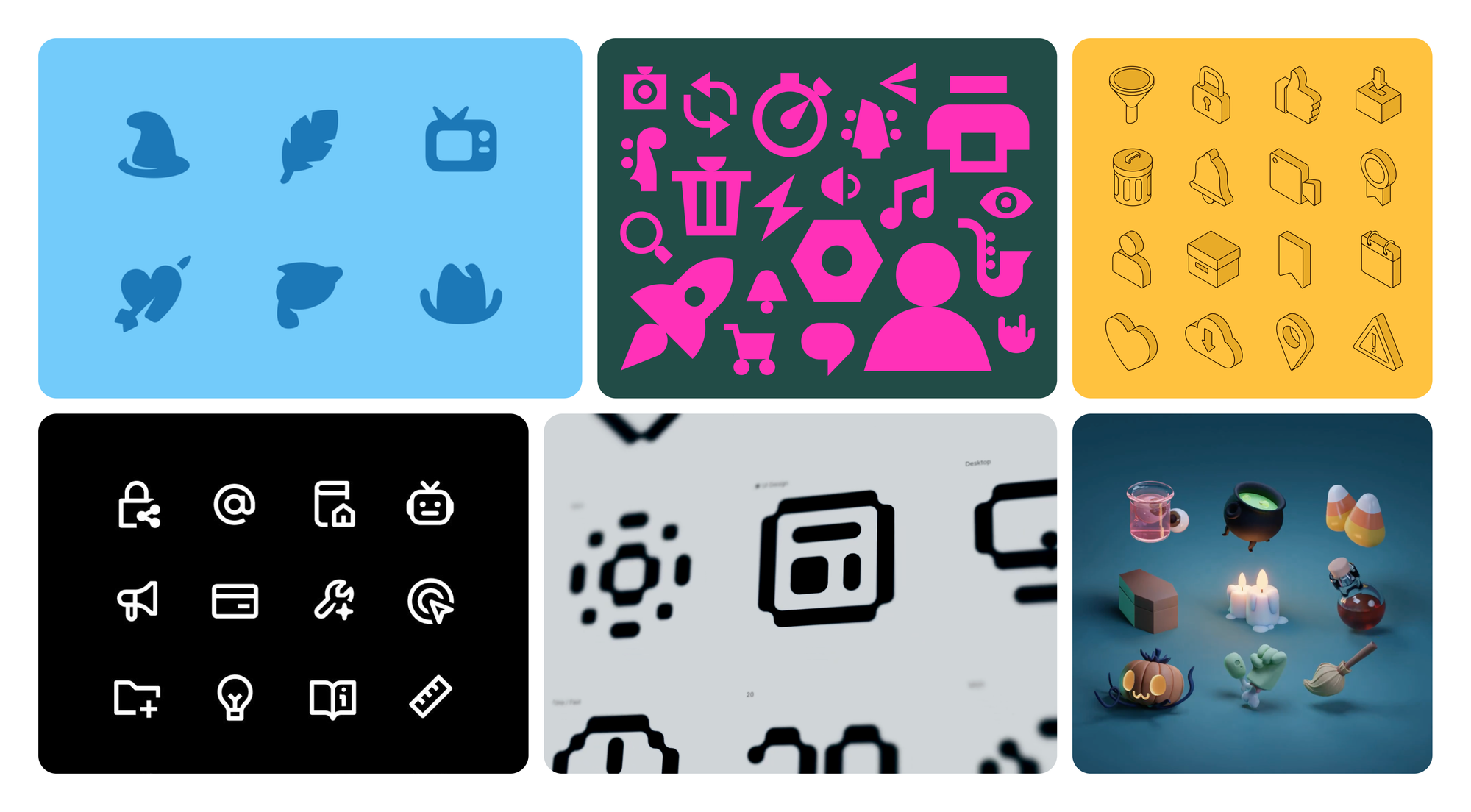
















































Submit your best icon designs (or creative use cases featuring Streamline icons) and get featured in our monthly showcase.
The icon design community never ceases to amaze us. Each month brings fresh creativity, and we’ll be back with more handpicked projects to spark your inspiration. ✨
Missed a past edition? Explore the Icon Spotlight posts.
2025-10-21 17:10:17
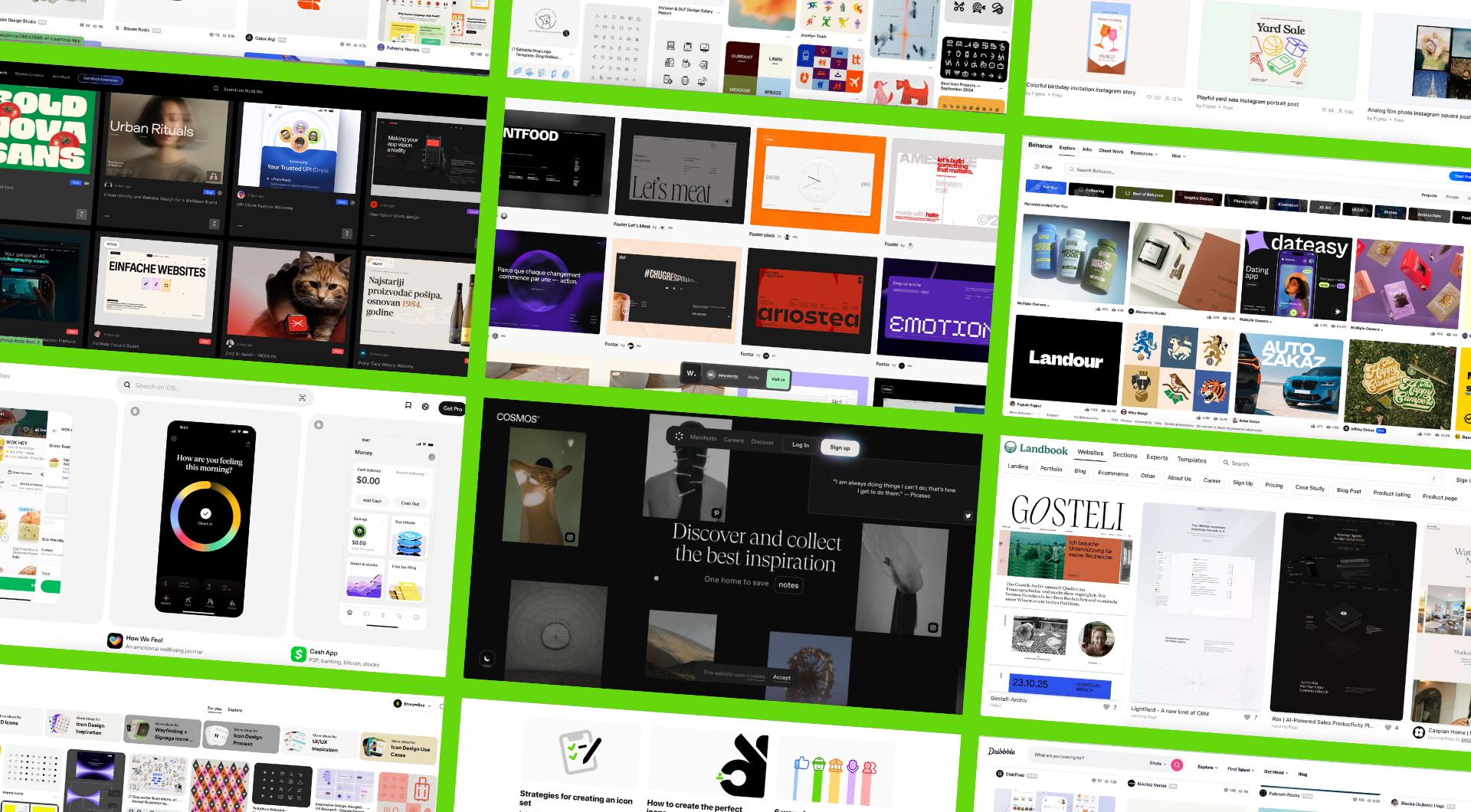
Creative blocks happen, and they’re certainly not easy to get out of. Whether it’s an icon set or full on web design, creating something you’re a hundred percent proud of can sometimes not happen in the first few minutes.
Besides stepping away from your work to restore some sanity, gaining perspective from elsewhere can get you back into the creative zone. Inspiration comes when you know where to look for it. Luckily, we’ve compiled a list of websites for design inspiration for every kind of creative out there.
10 Design Websites for Inspiration in 2025
Platform |
Best For |
Type of Inspiration |
Figma Community |
Editable design files & components |
Hands-on UI, systems |
Behance |
Full project breakdowns |
Conceptual, process-oriented |
Dribbble |
Visual design snippets |
Aesthetics, trends, micro UI |
Mood boards, themes |
Conceptual, mood-setting |
|
Streamline Blog |
Icon Sets & Illustrations |
Icon design, Design perspective |
Awwwards |
Award-winning web design |
Innovation, animation, web aesthetics |
Landbook |
Landing page designs |
Layout, UX structure |
SiteInspire |
Practical web design |
Clean, well-planned web design |
Mobbin |
Real app screenshots |
Mobile/web UI patterns, user flows |
Muzli |
Design news + inspiration feed |
Trend spotting, curated discovery |
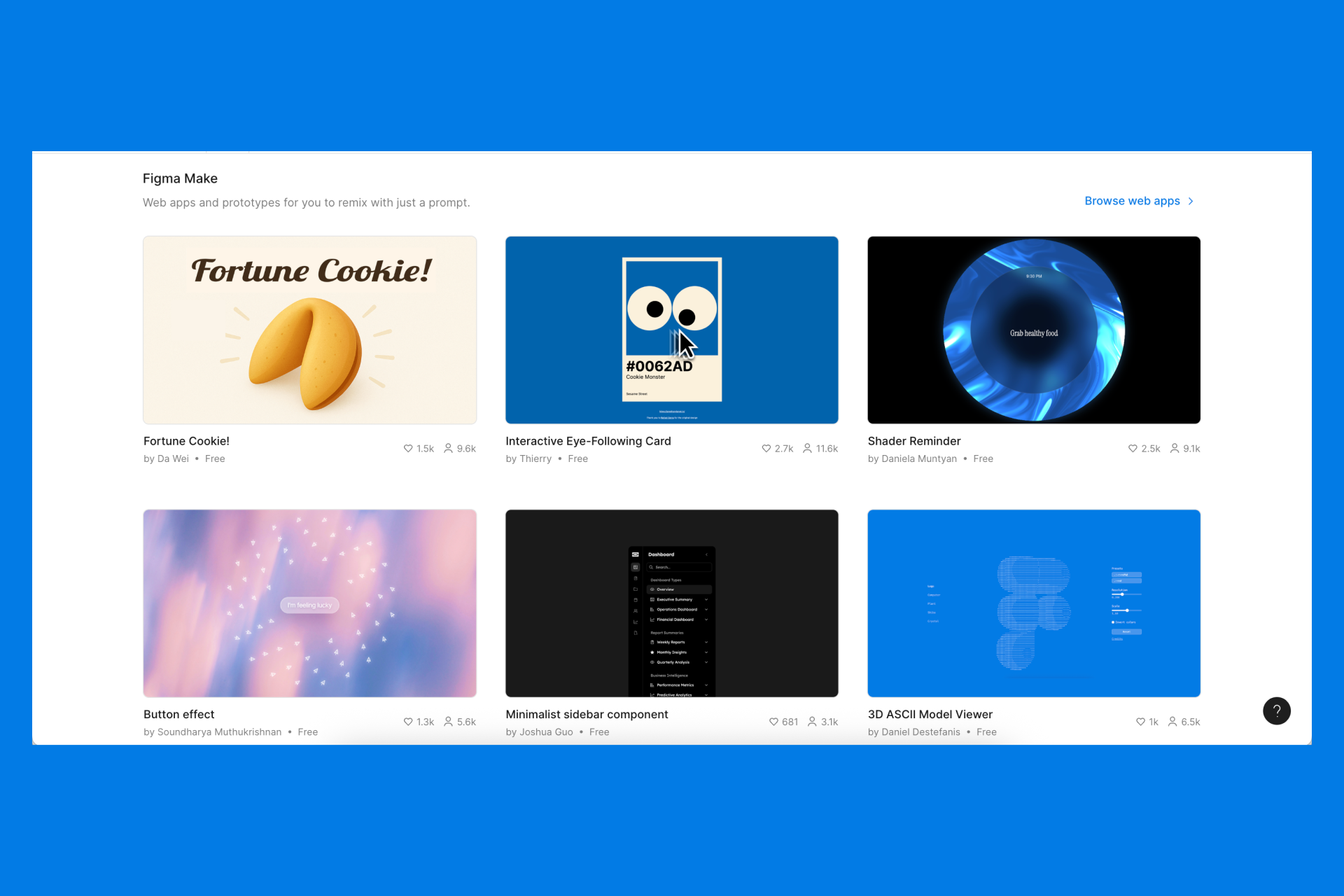
✅ Best for: Inspiration from community-made templates, plugins, and widgets
Getting inspiration from an online community is one of the best ways to spark creativity. Figma Community is where designers share templates, plugins, and widgets. You’ll find plenty of free and paid resources to explore. It’s a helpful place to see how others solve design problems or structure their files.
You can browse design systems, UI kits, and animations made by real users. It’s great for learning new techniques or getting a quick boost of inspiration.

✅ Best for: End-to-end project inspiration
Behance is a portfolio platform where designers share complete projects: from early concepts to final visuals. It’s widely used across creative disciplines, including web design, branding, and illustration.
You can explore full case studies that reveal not only the final designs but also the process behind them. It’s particularly useful if you want to understand how other professionals handle layout systems, typography, and presentation.

✅ Best for: Quick-hit and trendy visual inspiration
Dribbble is a community built around sharing design snippets and visual ideas. Designers often post logo explorations, interface mockups, and branding experiments, offering a look at what’s trending in digital design.
It’s a great place to spot emerging aesthetics and color trends, or simply to gather quick visual references for moodboards and presentations.

✅ Best for: high volume = more references to scroll through
Pinterest is one of the most popular sites for image posting and sharing, with about 578 million monthly active users, according to Statista. When it comes to design ideas, there are thousands of references per search term posted by anyone from design students to freelancers and professional designers alike.
Its board system makes it simple to group visuals by theme or project, while the mobile app makes it convenient to browse on the go. It’s especially helpful for building a visual direction or creative mood.
Honorable Mention: Cosmos
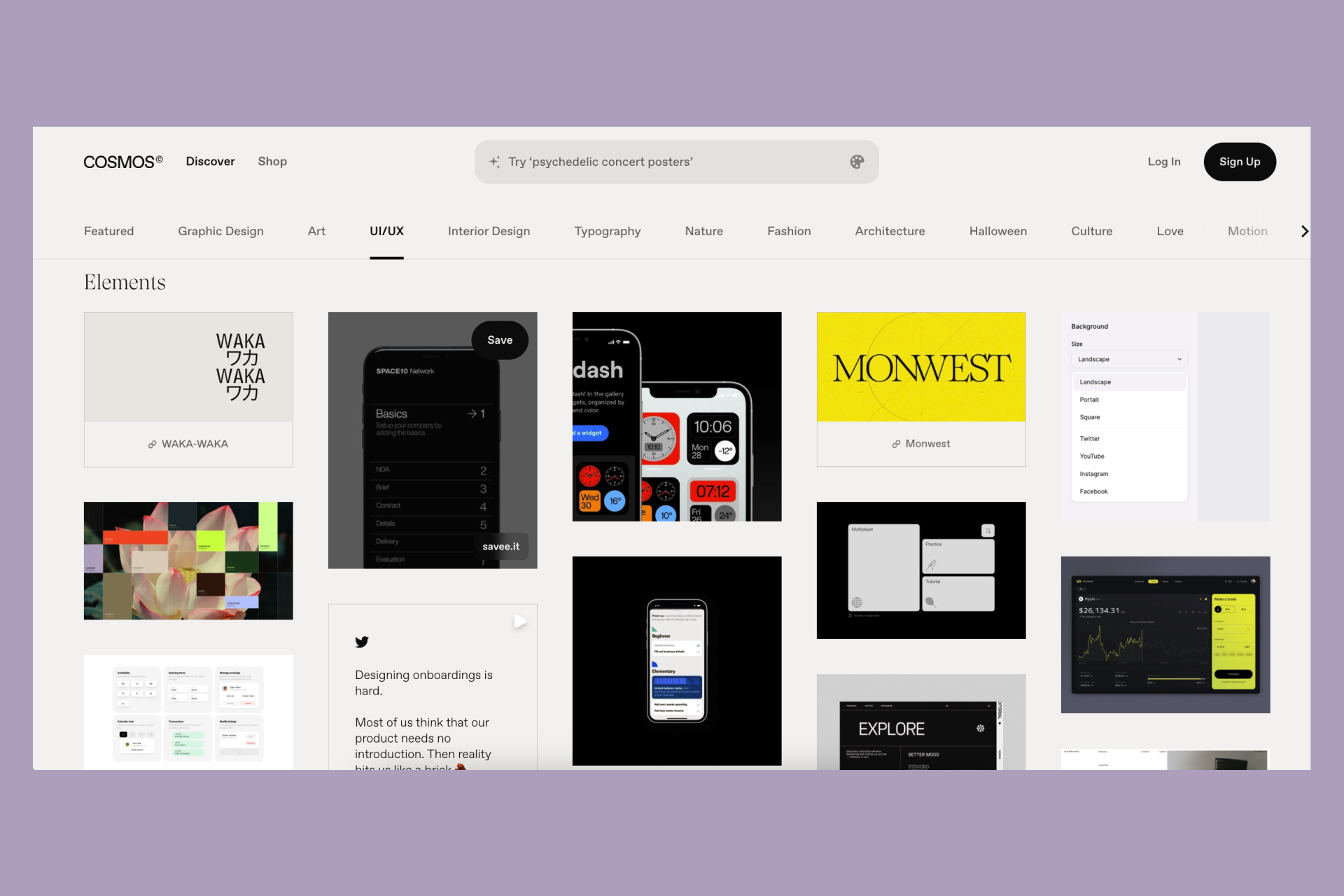
Cosmos offers a more focused way to discover creative references. It’s designed as a discovery engine specifically for designers and visual thinkers. You can explore content across categories like typography, UI/UX, and graphic design, as well as broader subjects like architecture or nature.
It’s a cleaner, curated alternative when you want inspiration without the noise of general content platforms.

✅ Best for: Inspiration and insight for icon design
Hey, that's us 🙈 Streamline is a designer's go-to for icons and illustrations made by our team of talented creatives. Our blog (the one you're on right now) is packed with design inspiration, tips, and insights from experienced designers. If you’re working on icons, you’ll find plenty of styles and examples to explore.
If you’re working on a project and need icons or illustrations that actually fit your style, we’ve got plenty you can explore. We focus mainly on visuals: icons, illustrations, and all those little design details that make things look just right.
We also love sharing what happens behind the scenes, like how we create, what inspires us, and what we’ve learned along the way. It’s our way of helping other creatives see the craft from the inside out.
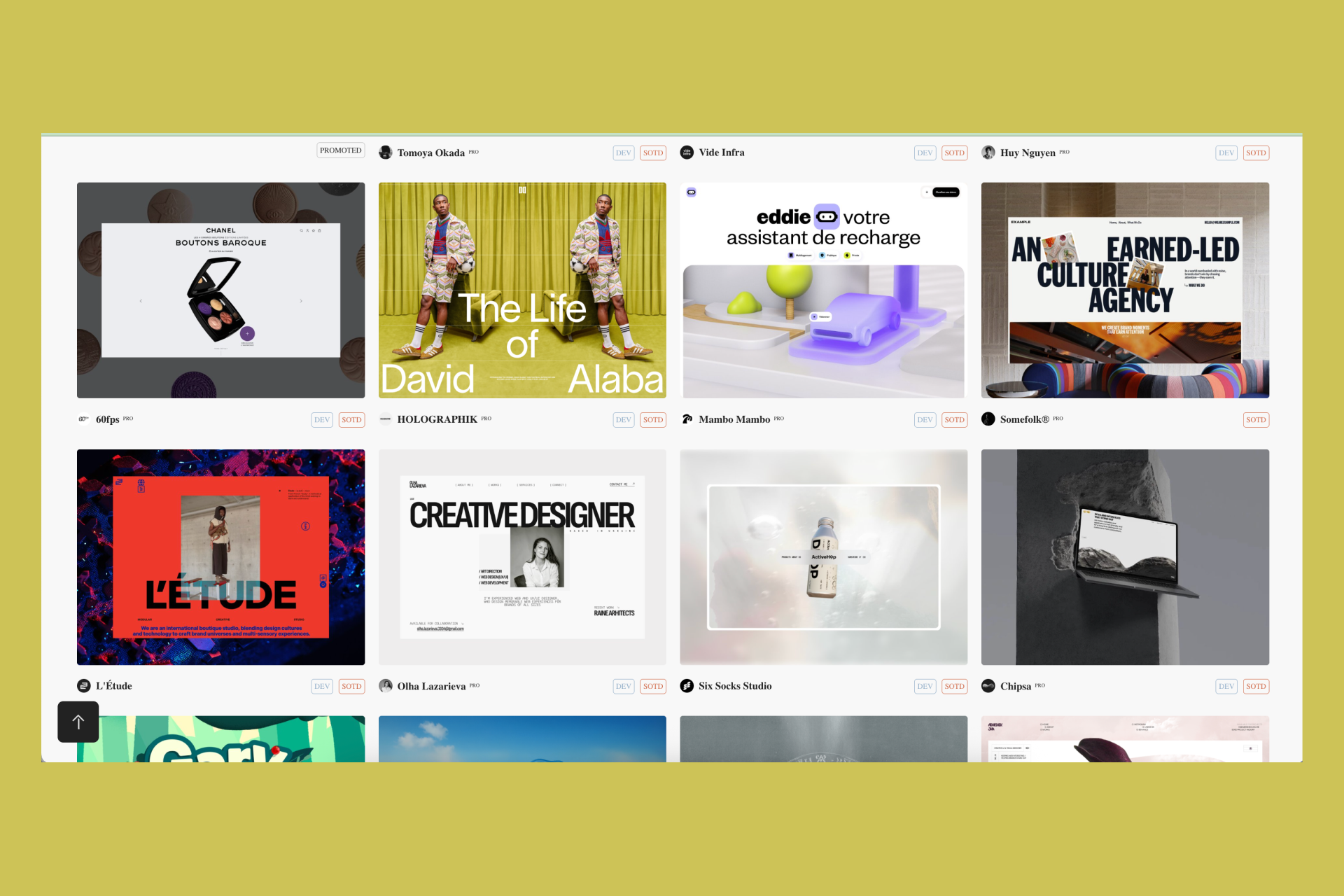
✅ Best for: Reference from awarded web designers
Awwwards features top-rated websites reviewed by professional judges. Each project is scored for creativity, usability, and innovation.
You’ll see a mix of polished, experimental, and bold designs. It’s a great way to study what top designers are doing across industries.

✅ Best for: cool web page design with real-world use cases
Landbook is a curated gallery that highlights well-designed web pages from real businesses and projects. It’s a useful place to explore different styles and layouts, whether you’re looking for ideas for a landing page, pricing section, or “About Us” page.
You can filter by page type or industry, making it easy to find examples that match what you’re working on. Each site feels practical and polished, showing how design decisions play out in real use.
If you’re gathering ideas for your next project, browsing Landbook can help you see what works well before moving forward with a professional design.
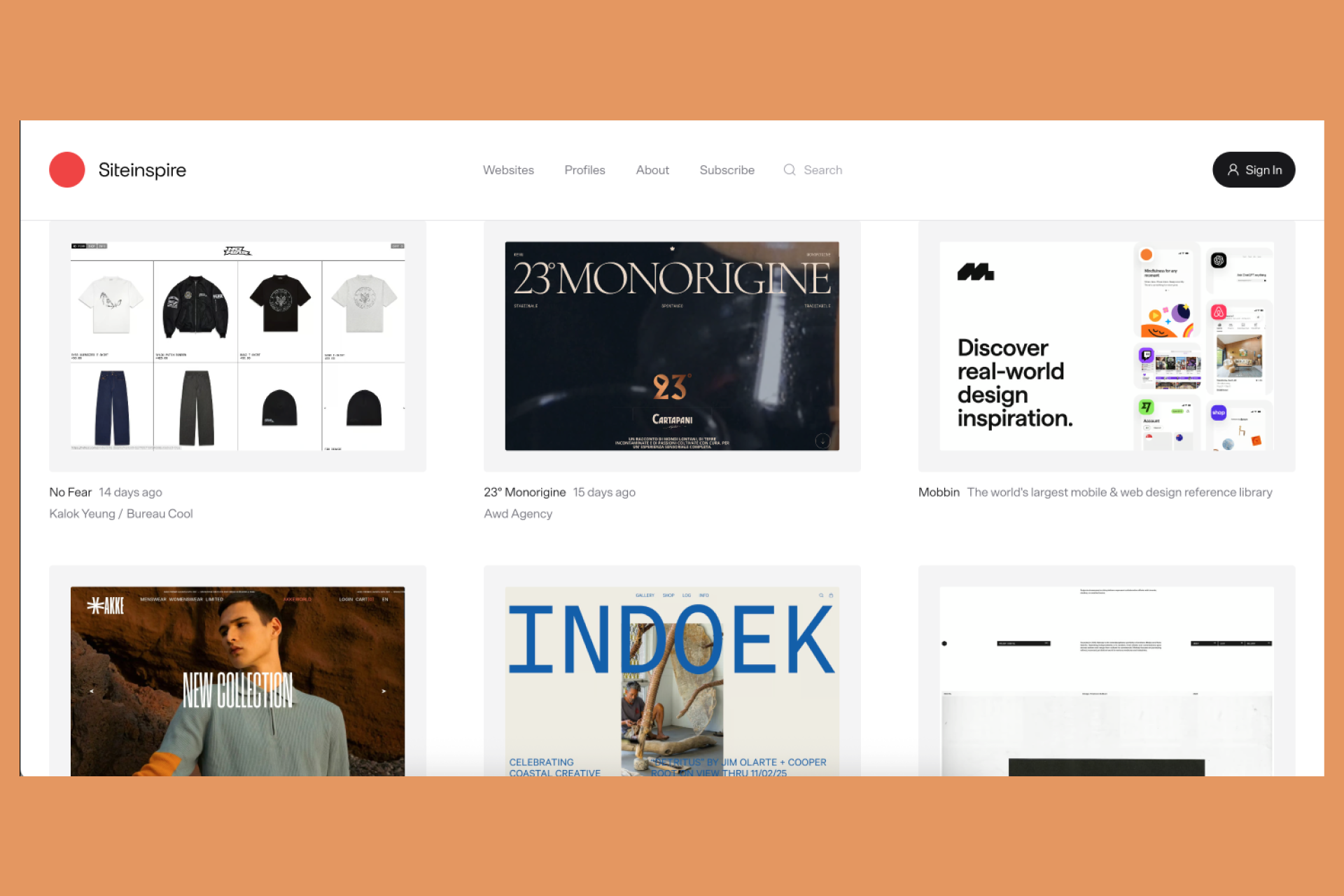
✅ Best for: Clean and practical web design inspiration
SiteInspire showcases clean, balanced websites with smart design choices. It’s ideal for those who value simplicity and function. You can browse by style or industry to find polished, professional examples that show how minimal design can make a strong impact.
If you’re aiming for a polished, professional look that feels refined and functional, SiteInspire offers plenty of direction to get started.
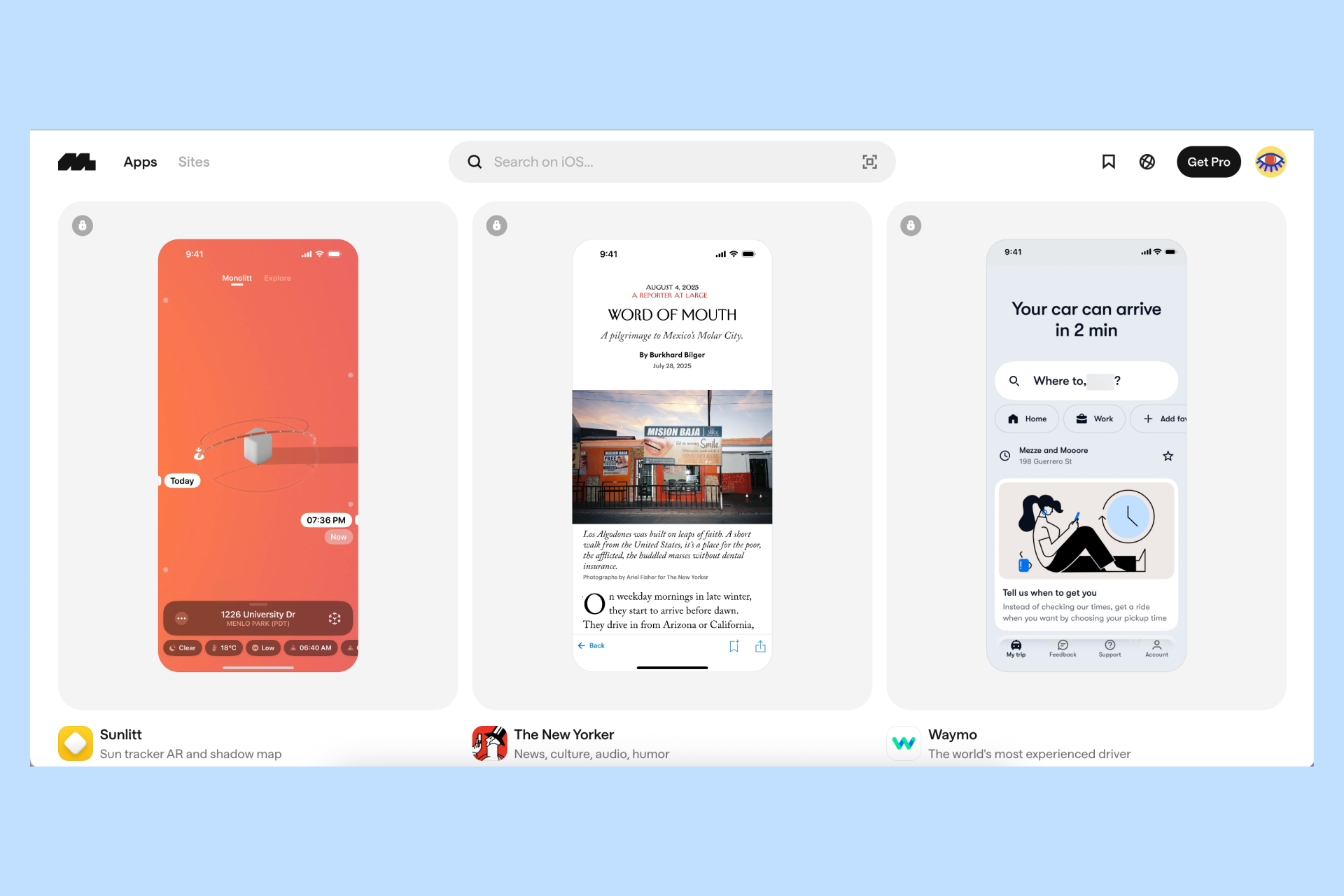
✅ Best for: UX patterns, mobile flow inspiration, and practical UI solutions
Mobbin is ideal for inspiration on iOS, Android & Web apps. You’d be able to go through what’s popular and what popular brands have used before. They also have a colors page where you can view trending brand colors, what color palettes worked for known brand names, and what different colors mean.

✅ Best for: daily design discovery and trend spotting
If pure spark of inspiration is what you’re after, Muzli is the browser extension to get. Muzli delivers design inspiration straight to your feed. It collects the latest trends, news, and case studies from around the web.
You can personalize your feed by style or discipline. It’s an easy way to stay up-to-date on design without searching multiple sites.
Honorable Mention: Framer Gallery
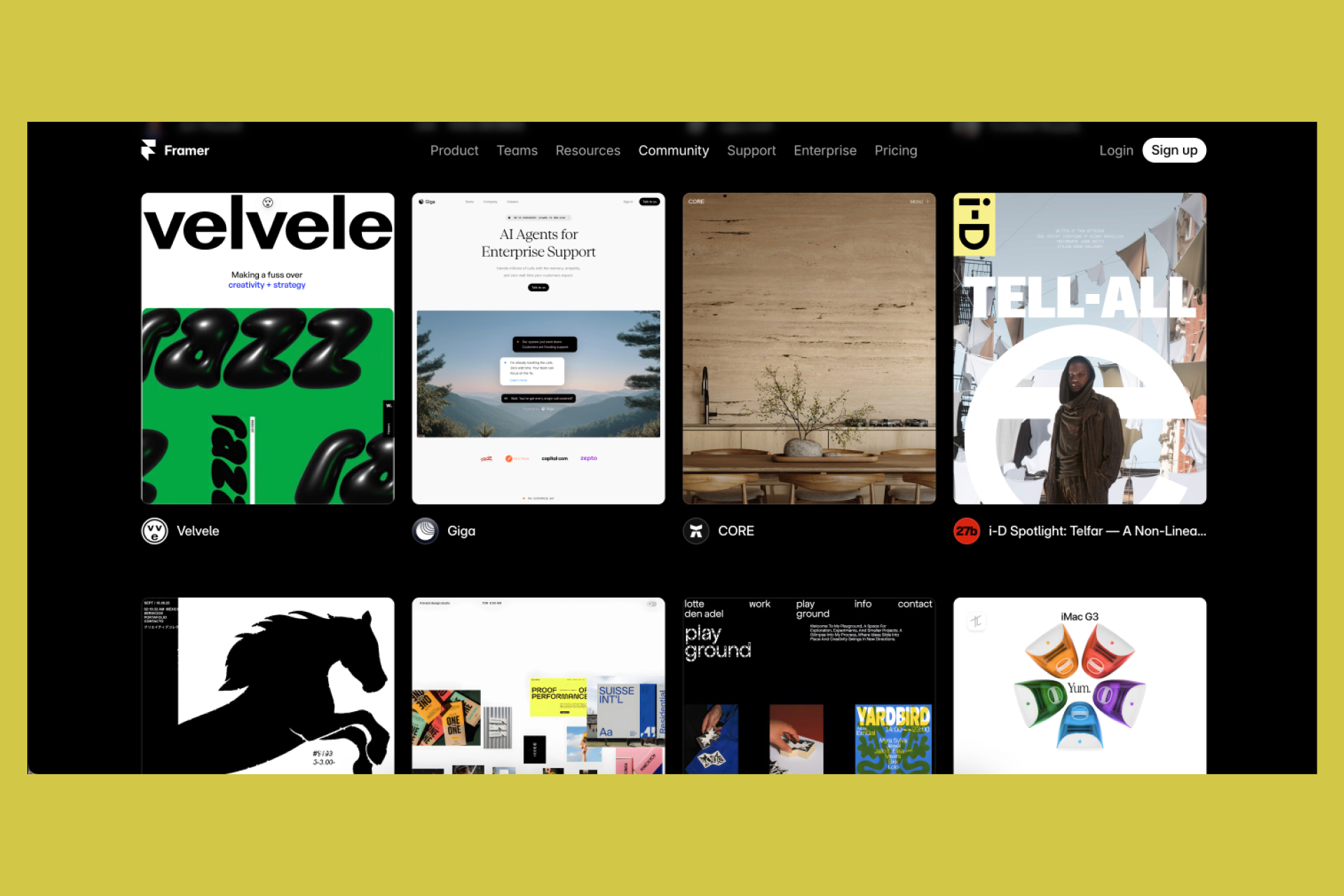
If you’re looking for a no-code website inspiration, Framer is the new platform to check out. It is an up and coming hub for designers exploring sleek, interactive, and modern design inspiration. It showcases ways to create visually dynamic and functional sites without coding. You can browse examples by category and discover trending creations on their platform.
Streamline has been designing icons and illustrations for over 12 years, led by a small in-house team of experienced designers. Recognized by Figma as the Best Graphic Resource, Streamline is known for creating a consistent and scalable icon design system that helps creatives work faster and maintain visual harmony across their projects.
Our library includes thousands of icons, illustrations, emojis, and design elements all designed to fit smoothly into any workflow. You can also try our free sets, including Guidance, Platinum, and Pixel, to explore different visual styles and see how they fit your design process.
We also share behind-the-scenes insights, design stories, and inspiration from our team on the Streamline Blog. If you’re curious about how we build and organize our collections, visit the Streamline Blog for more insights from our team of designers.
Visit the Streamline Blog to explore our process, free resources, and more design inspiration. 👇

2025-09-27 01:43:45
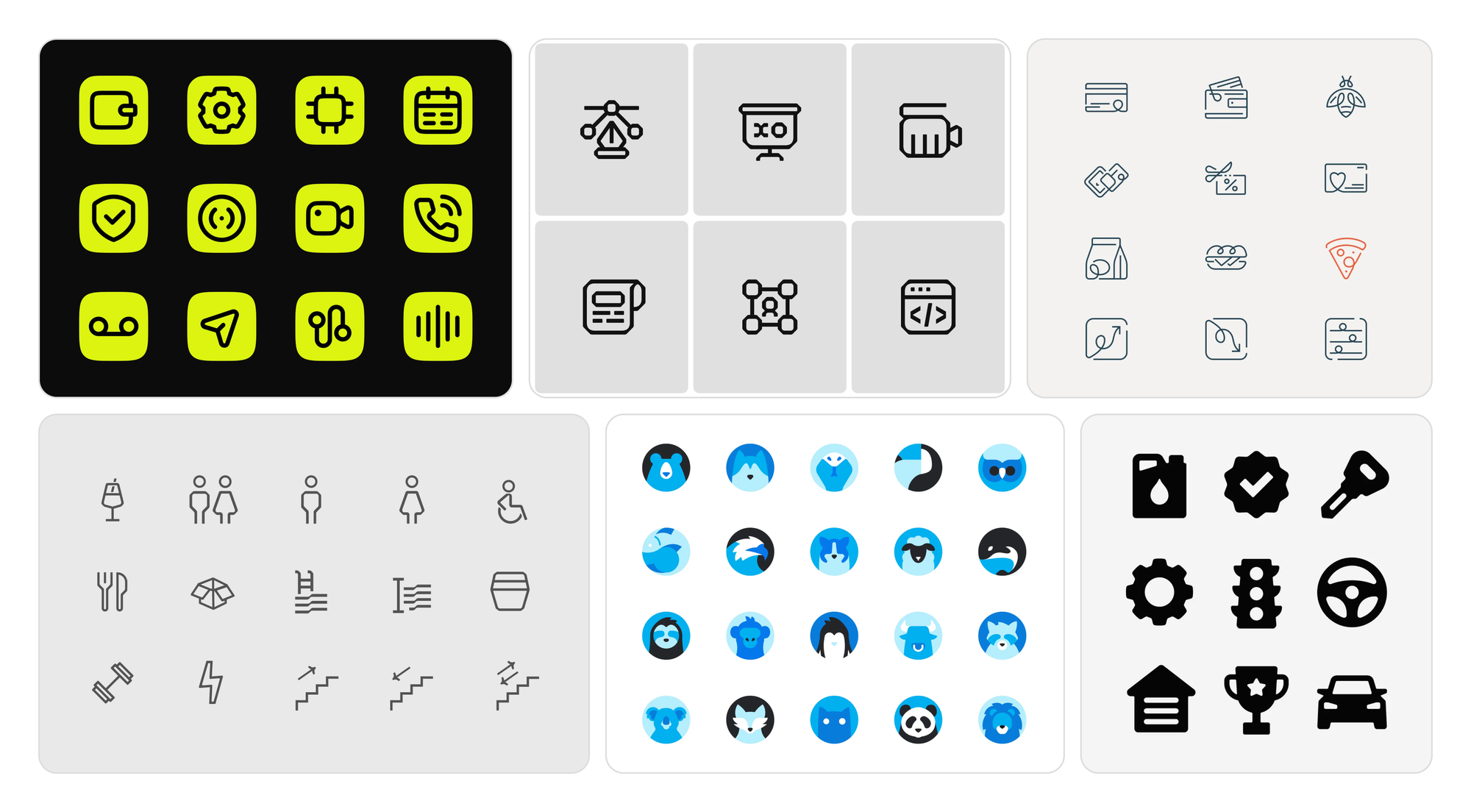














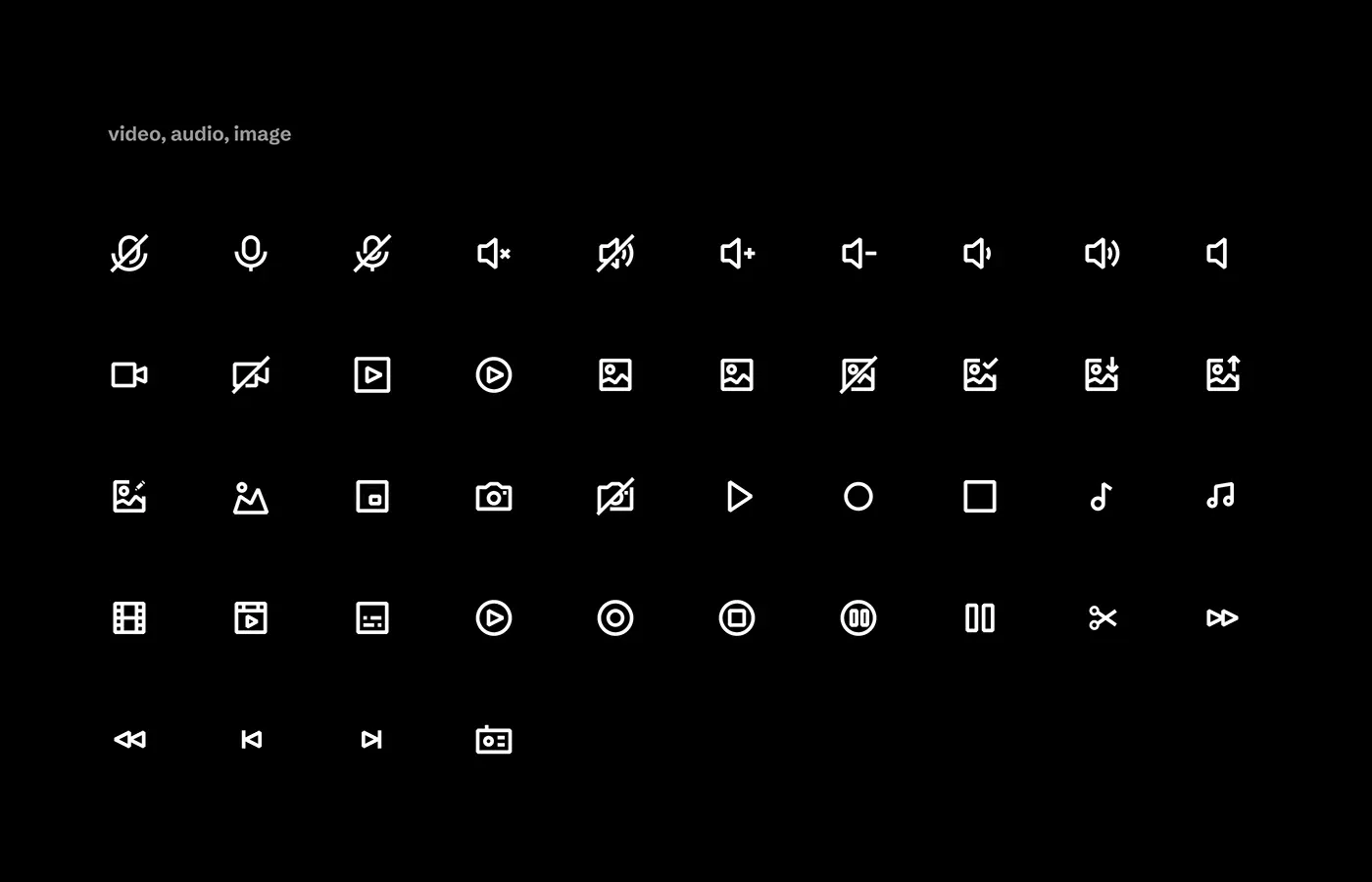
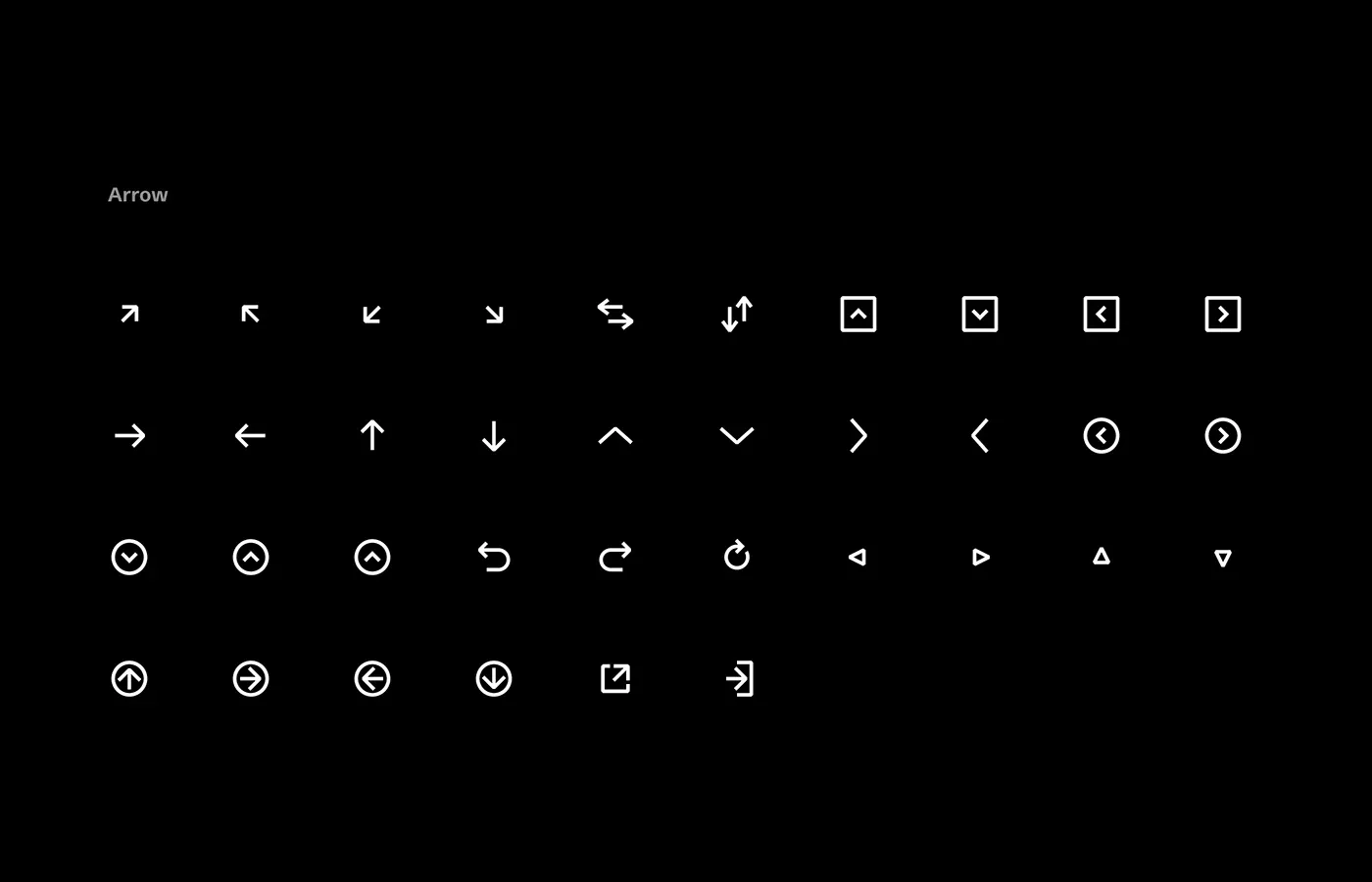


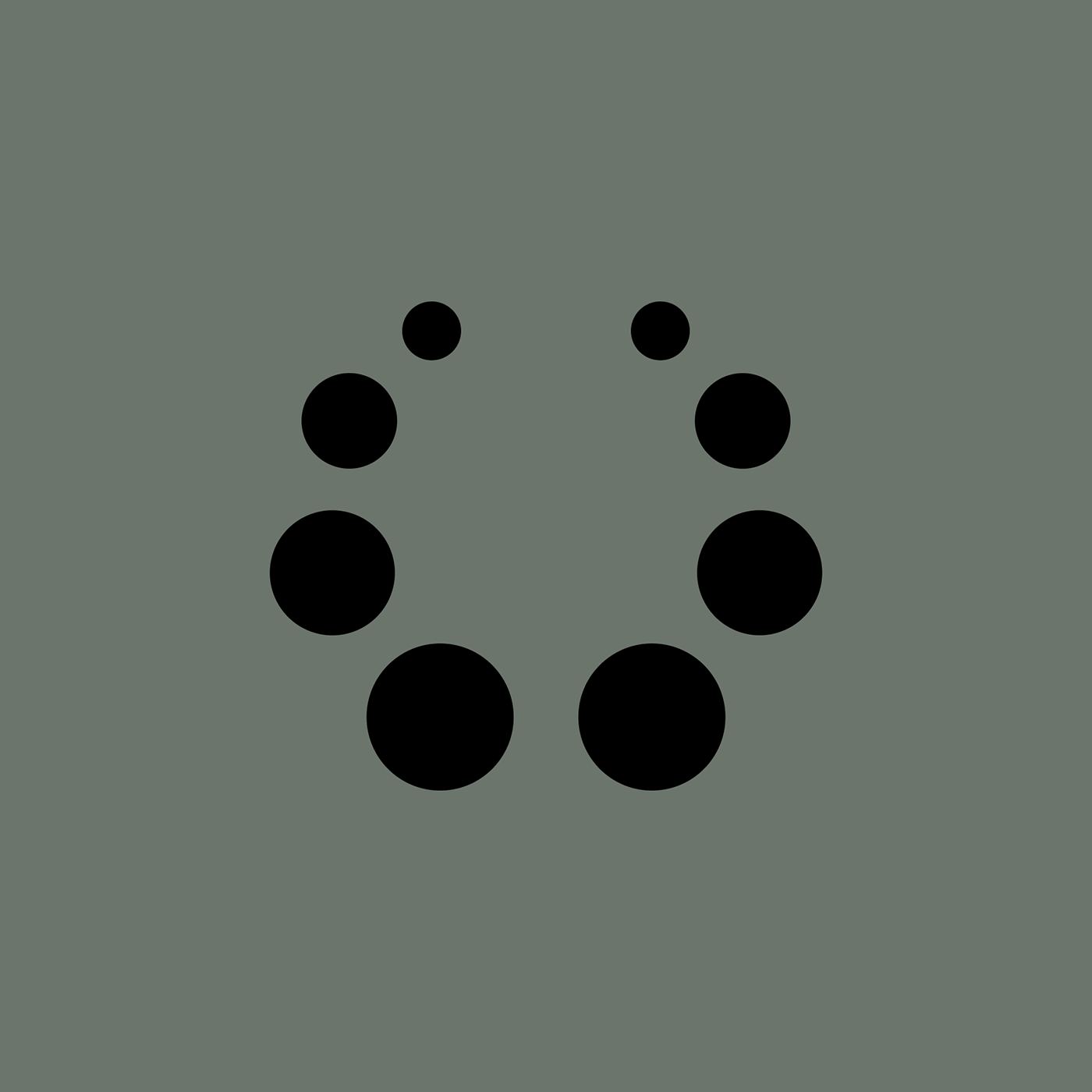

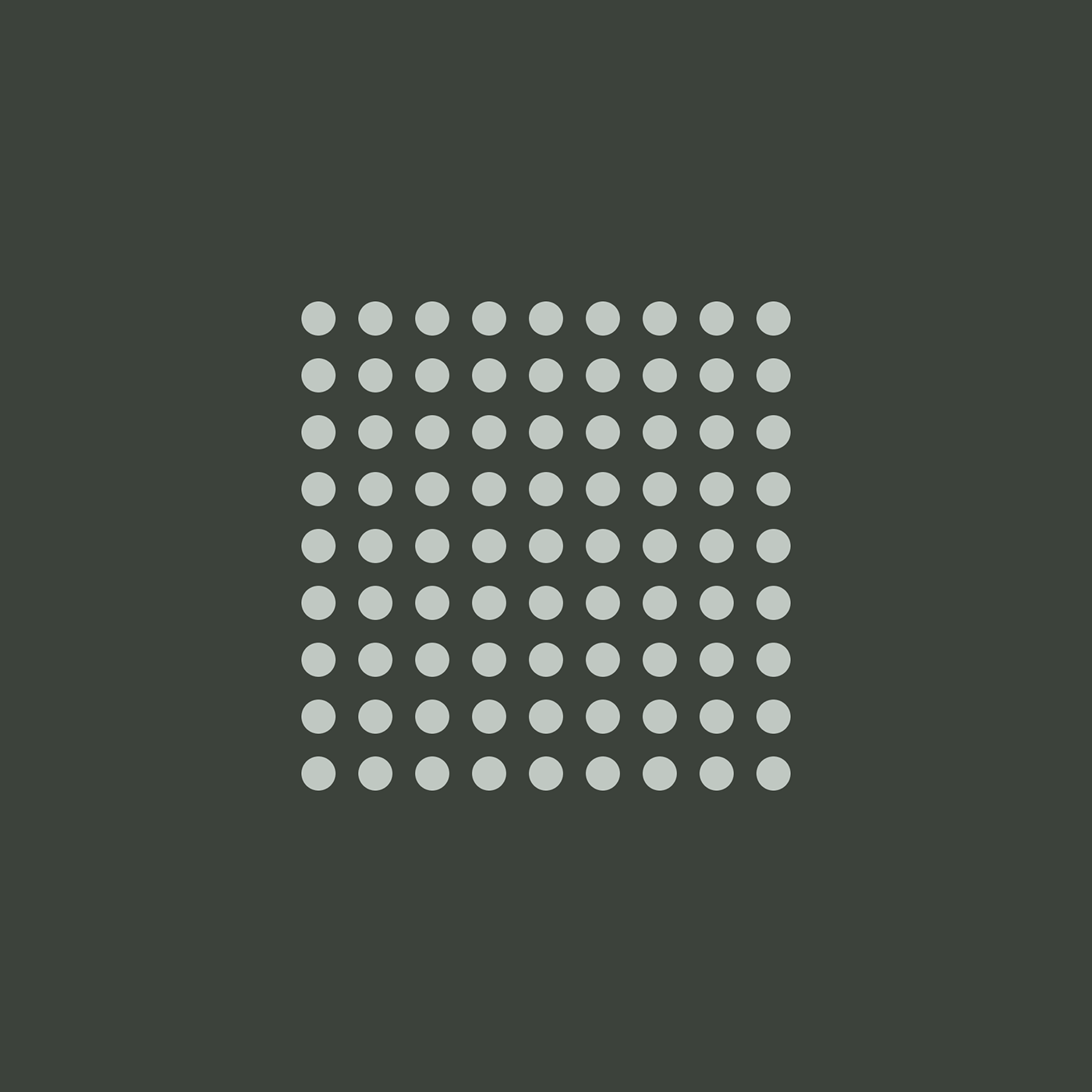
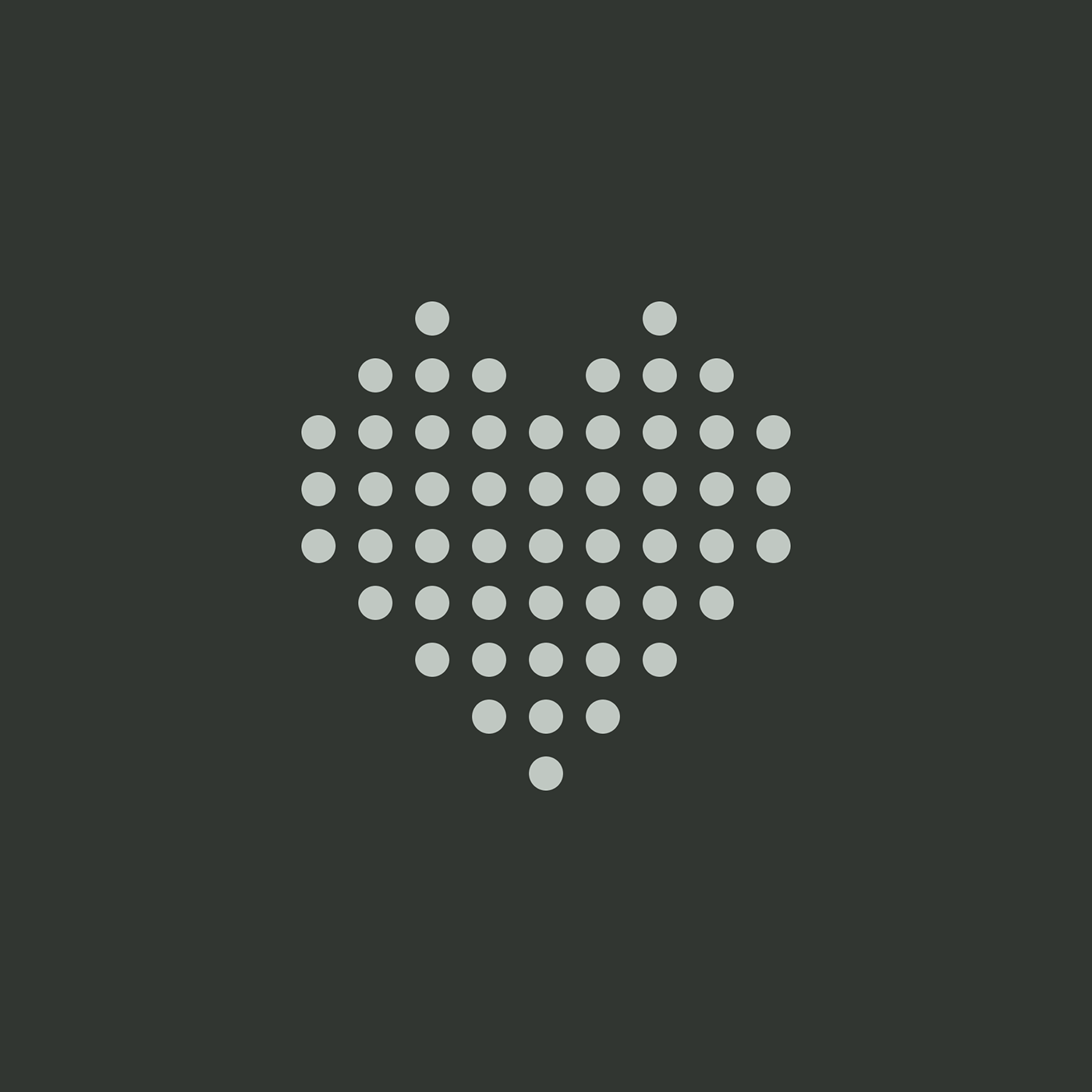


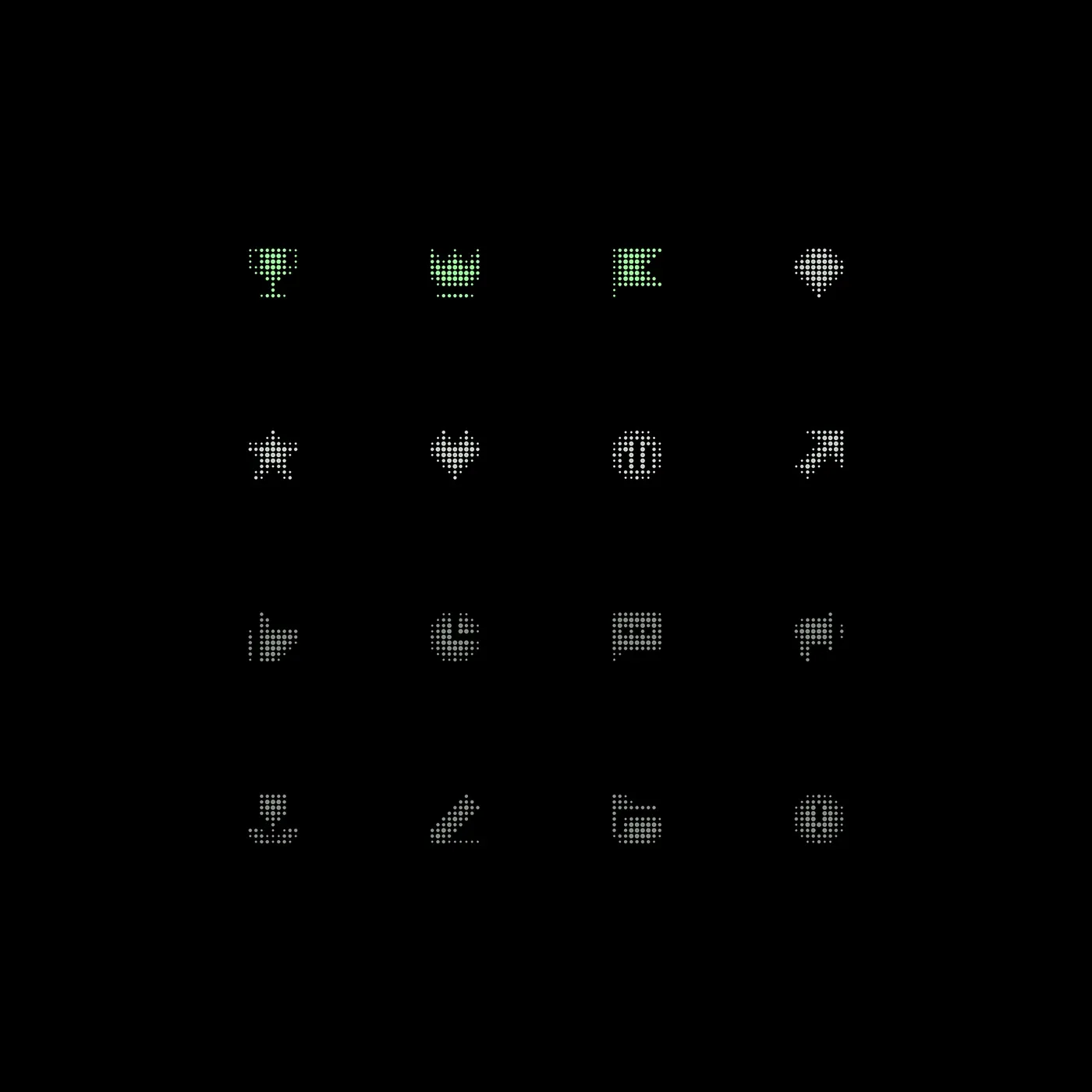










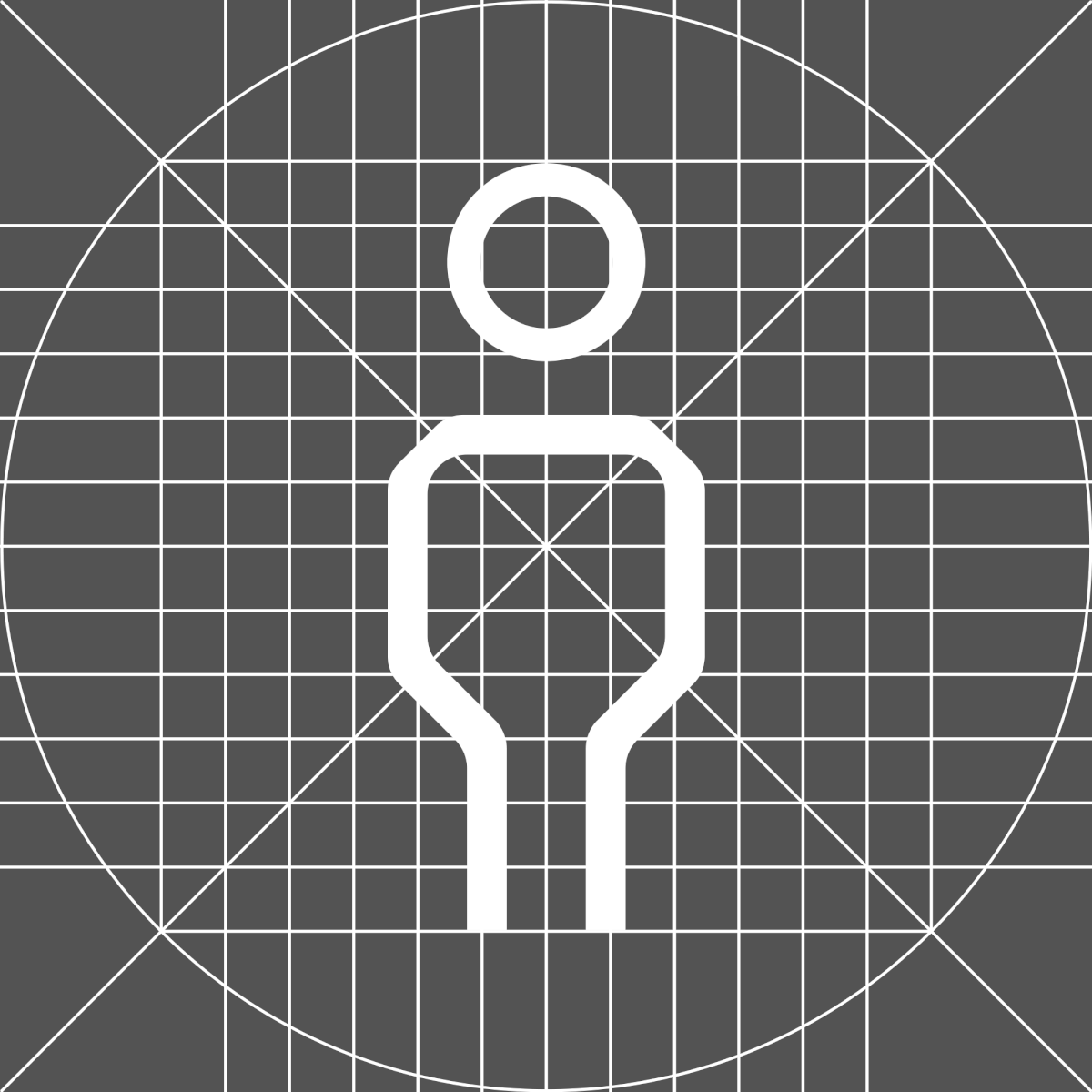

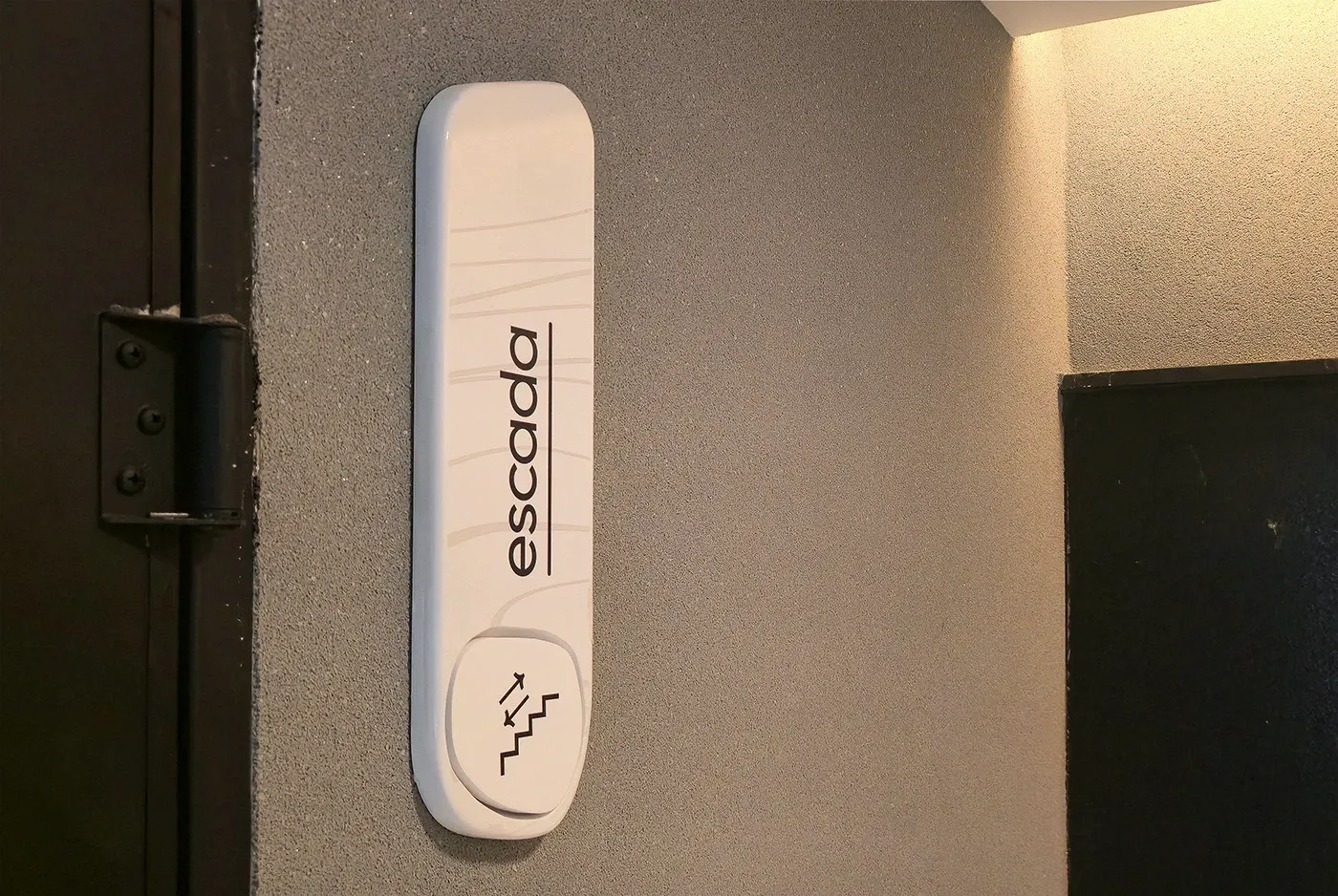
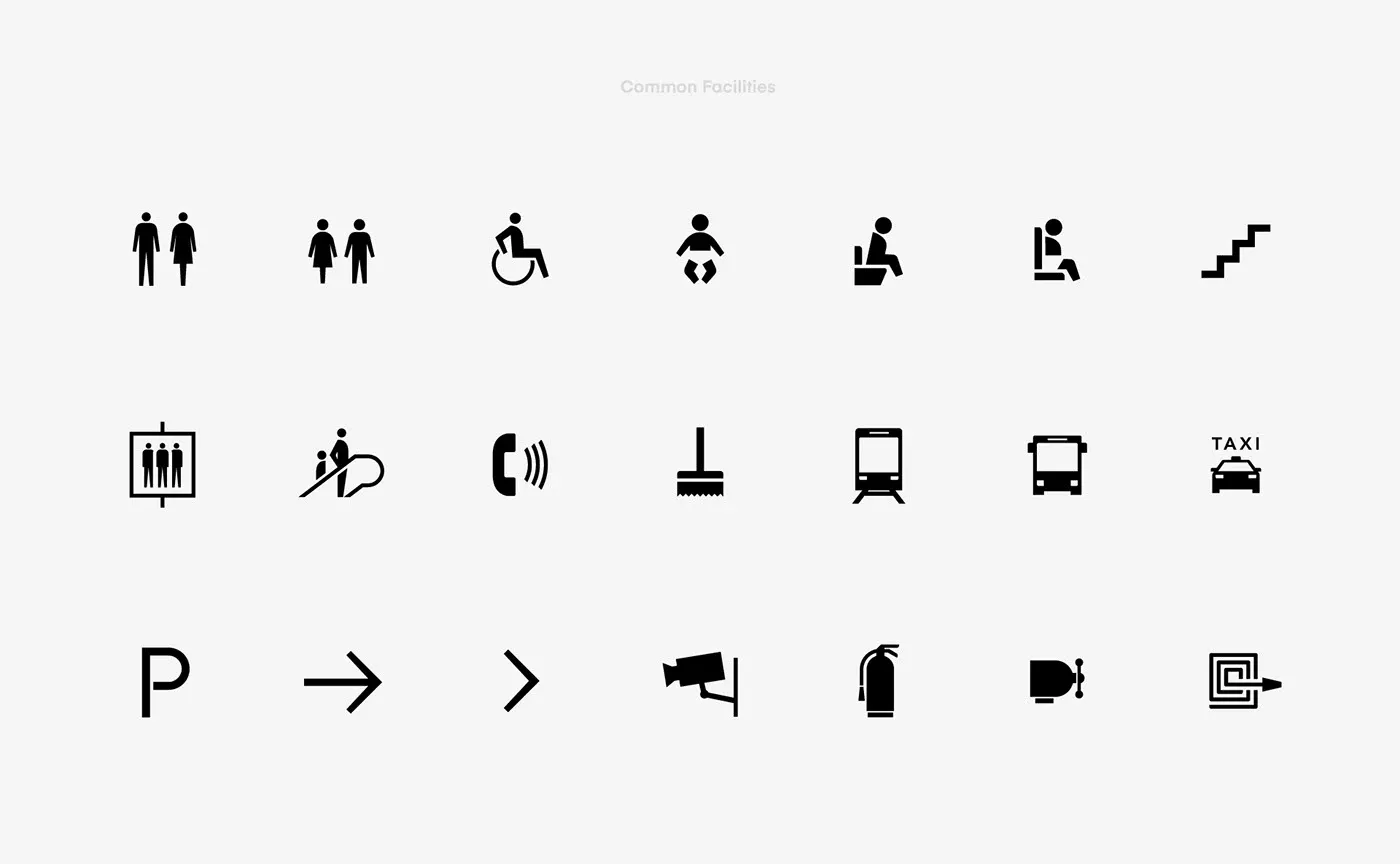
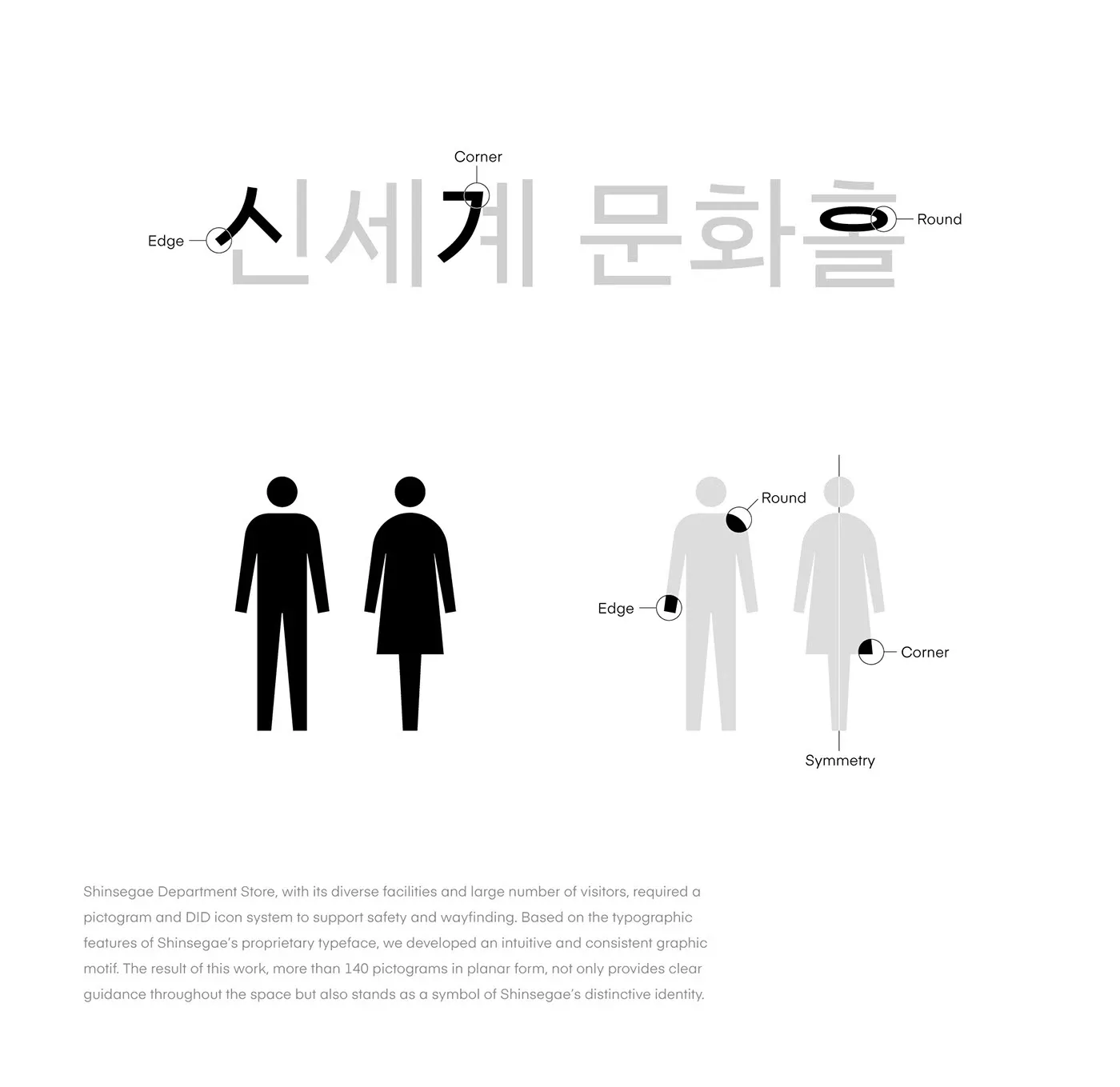
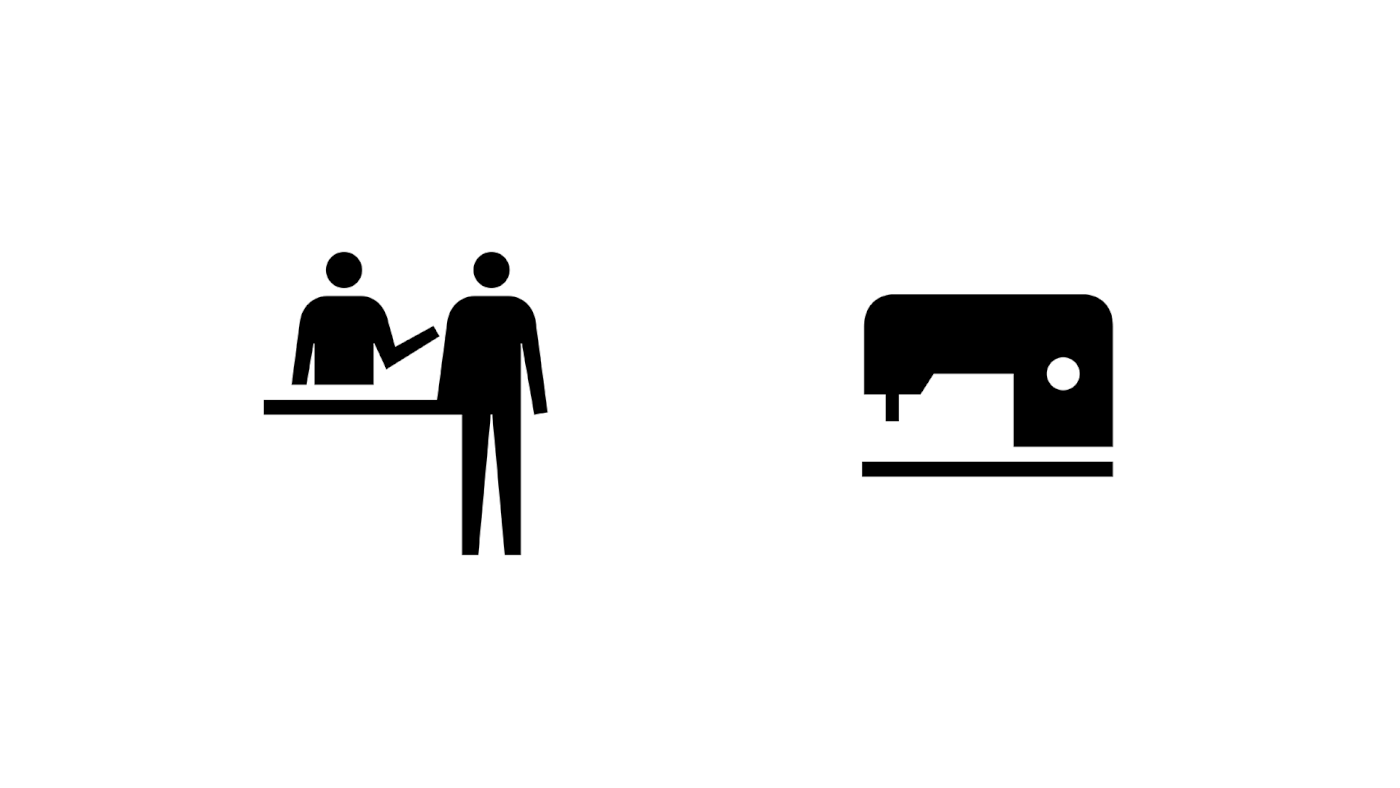
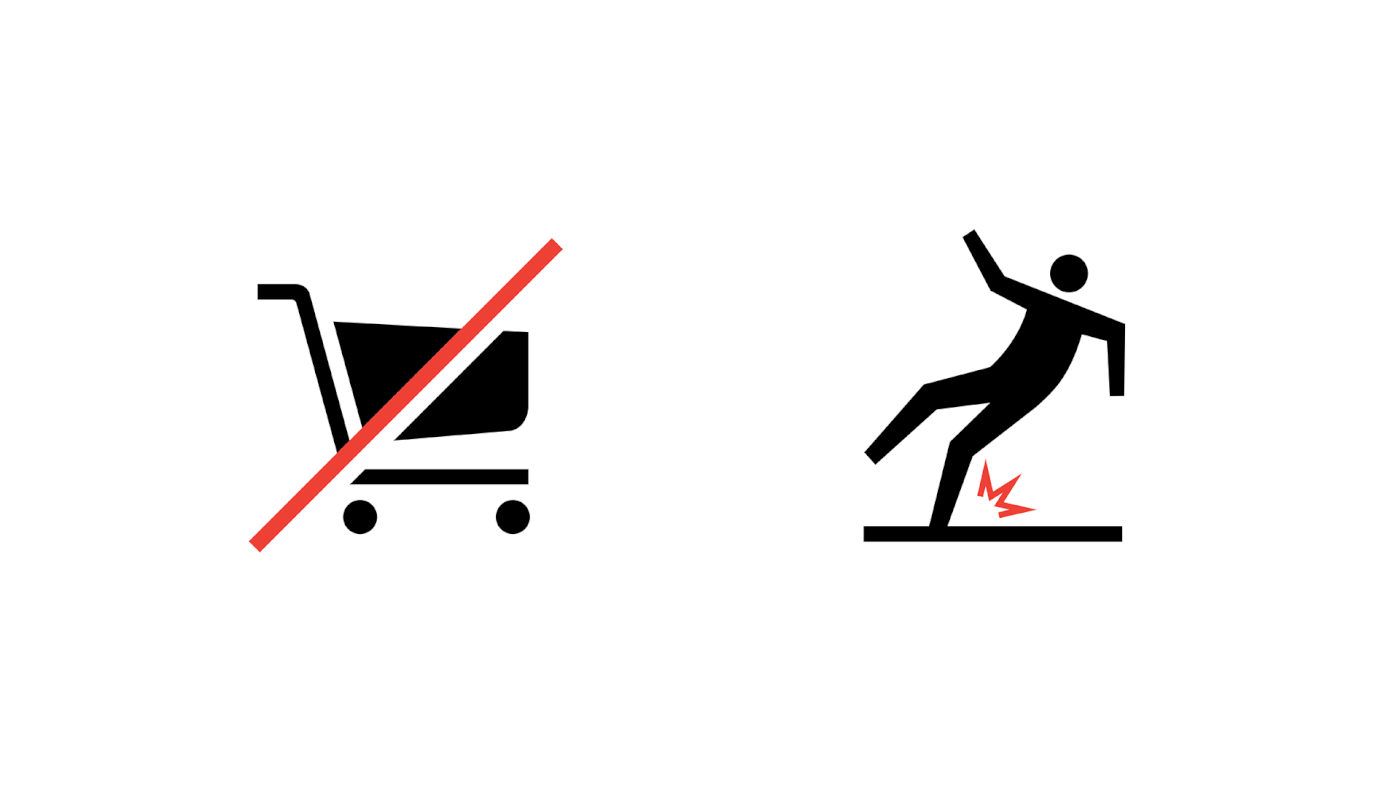
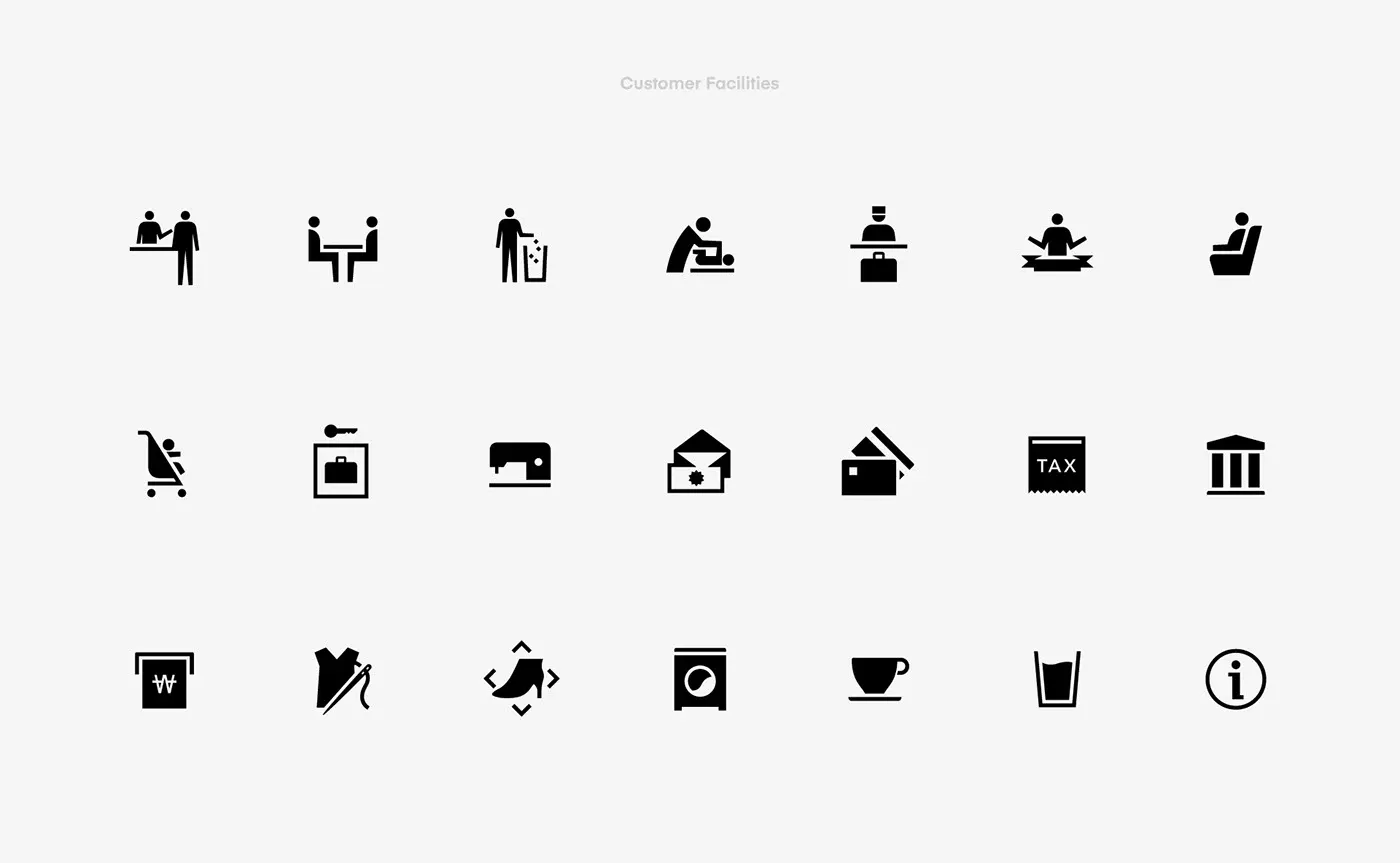
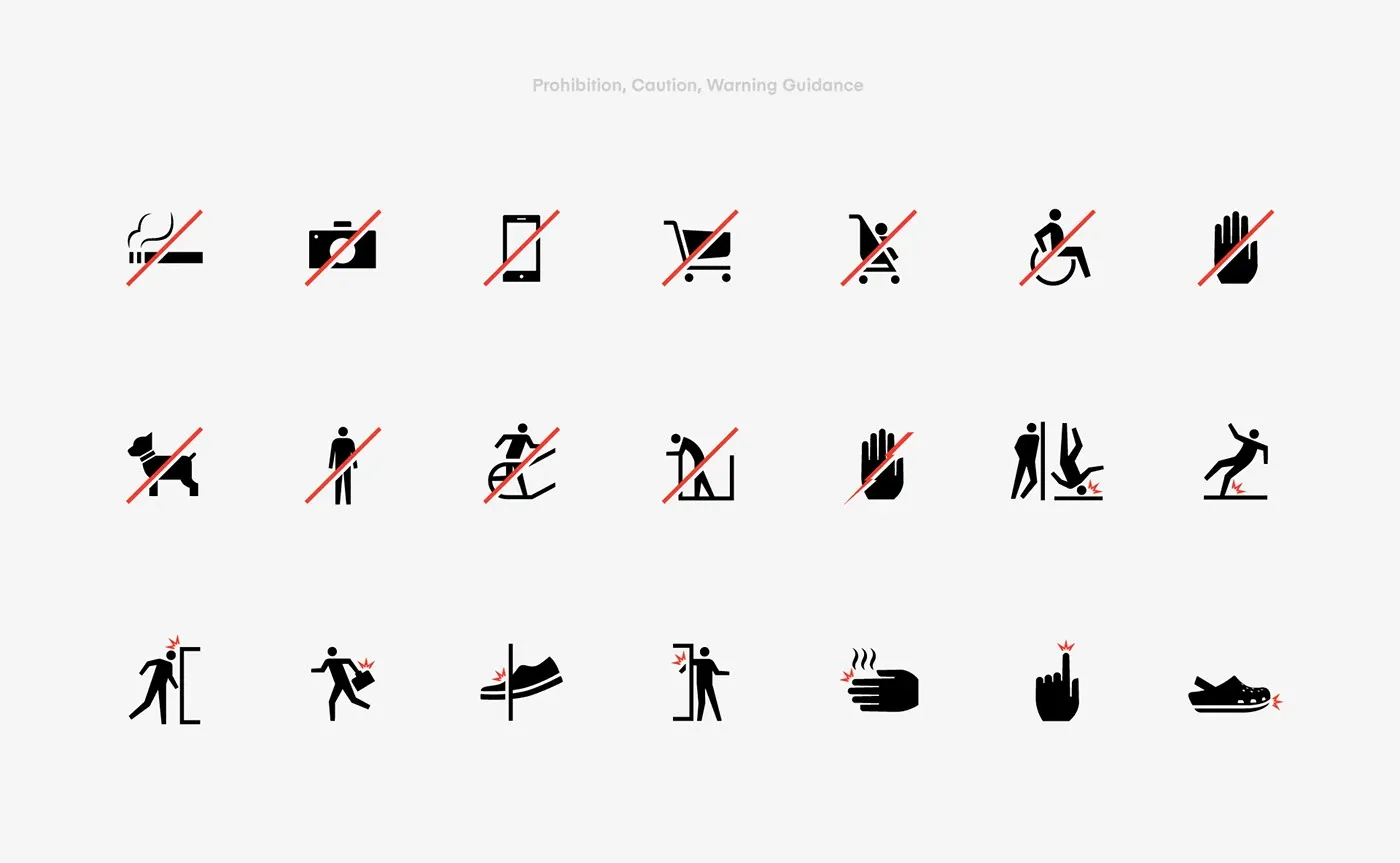
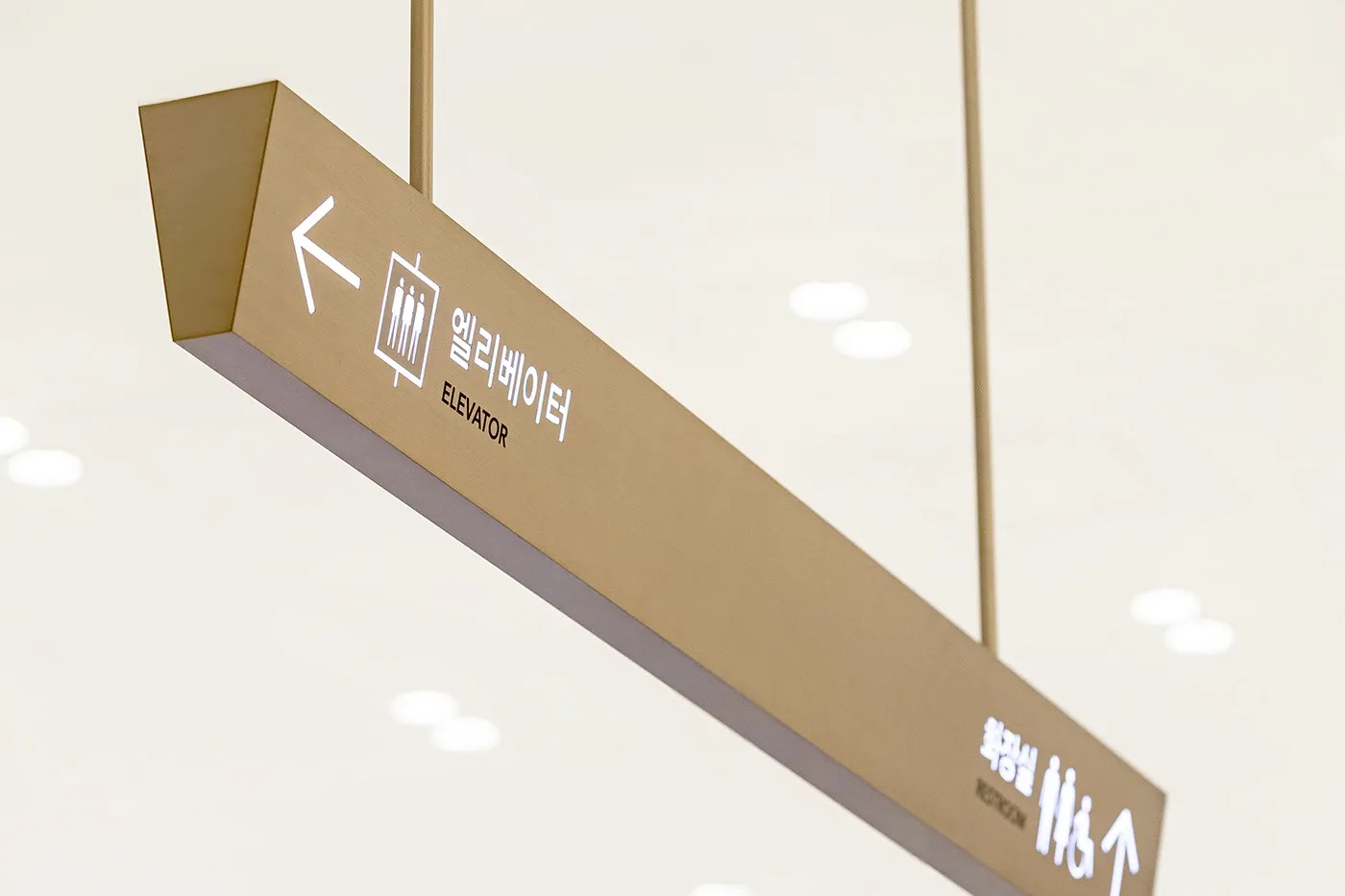
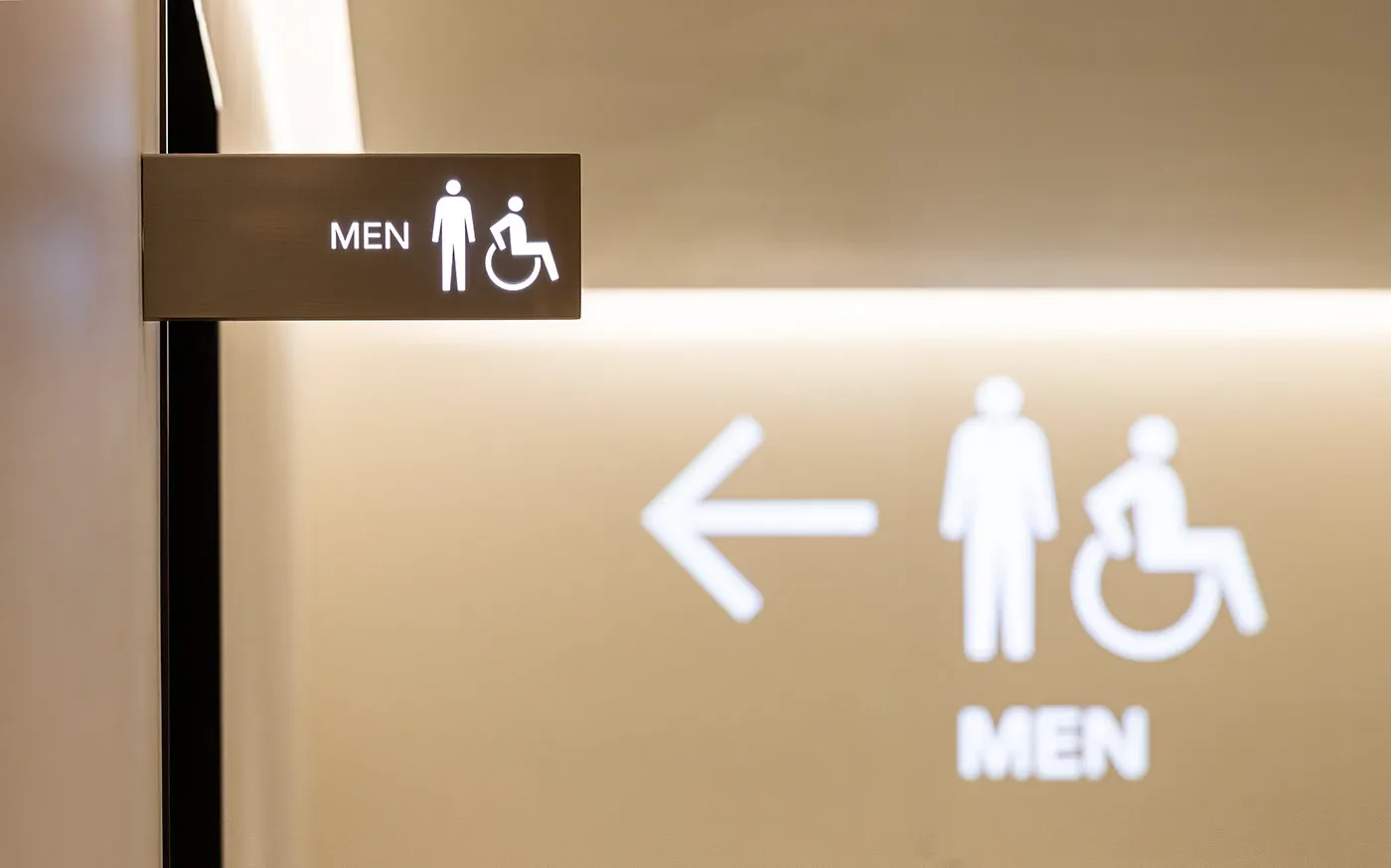
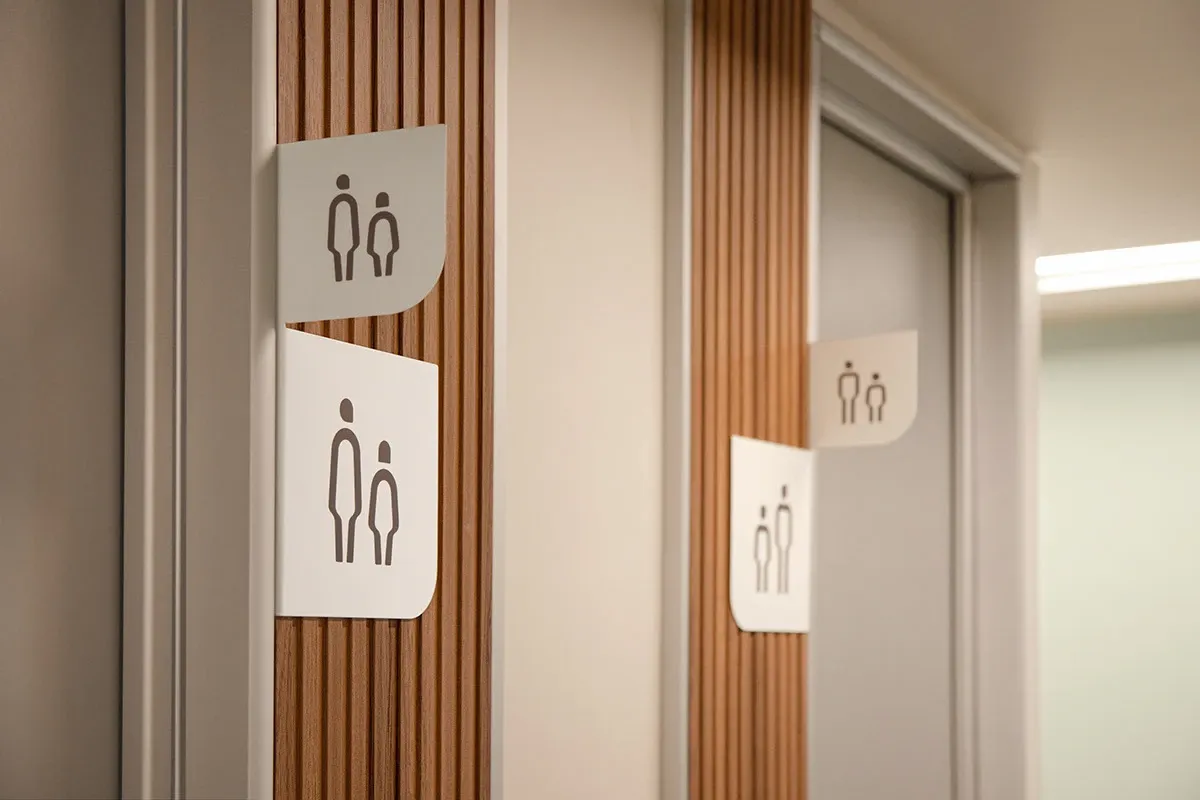
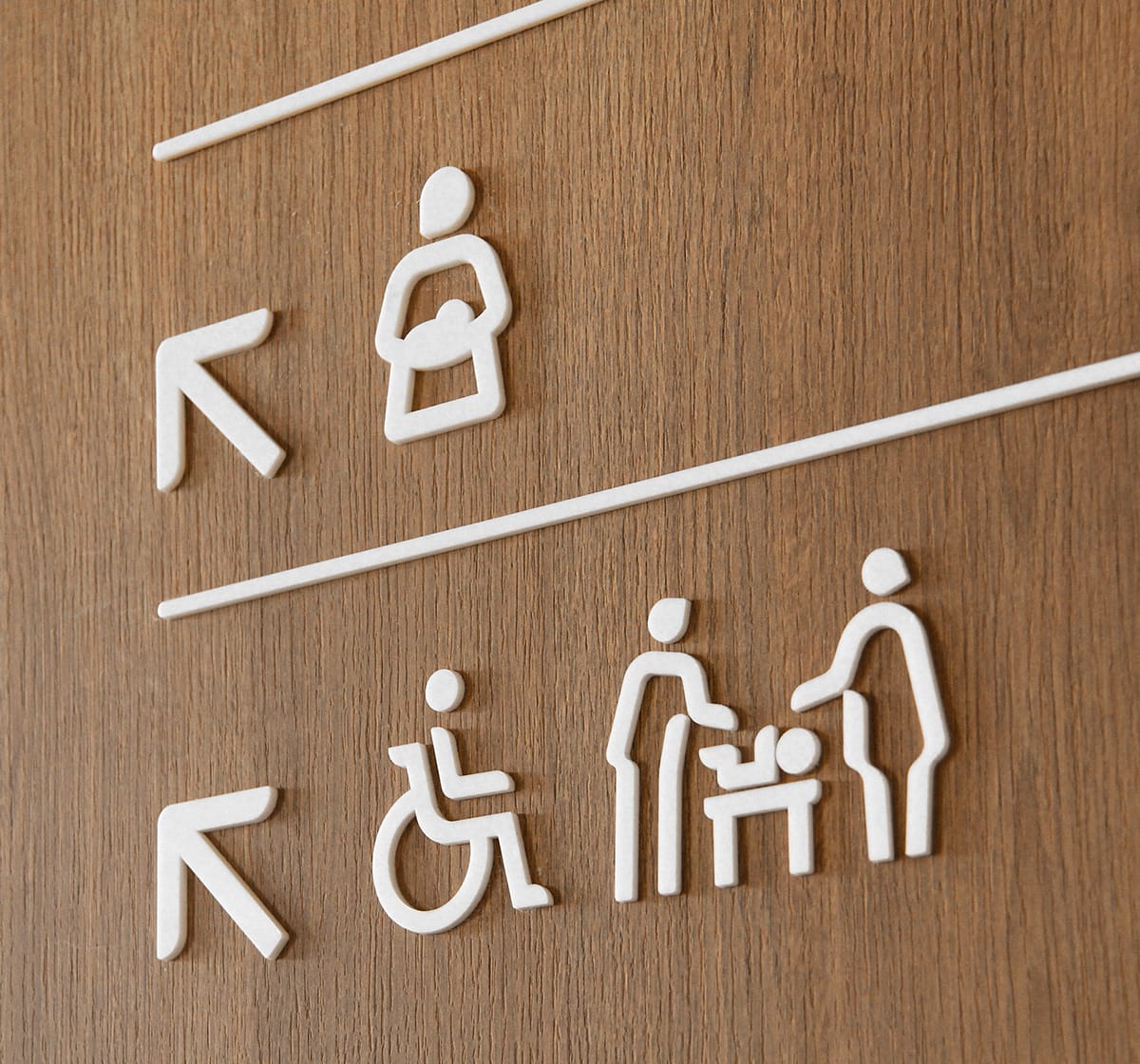
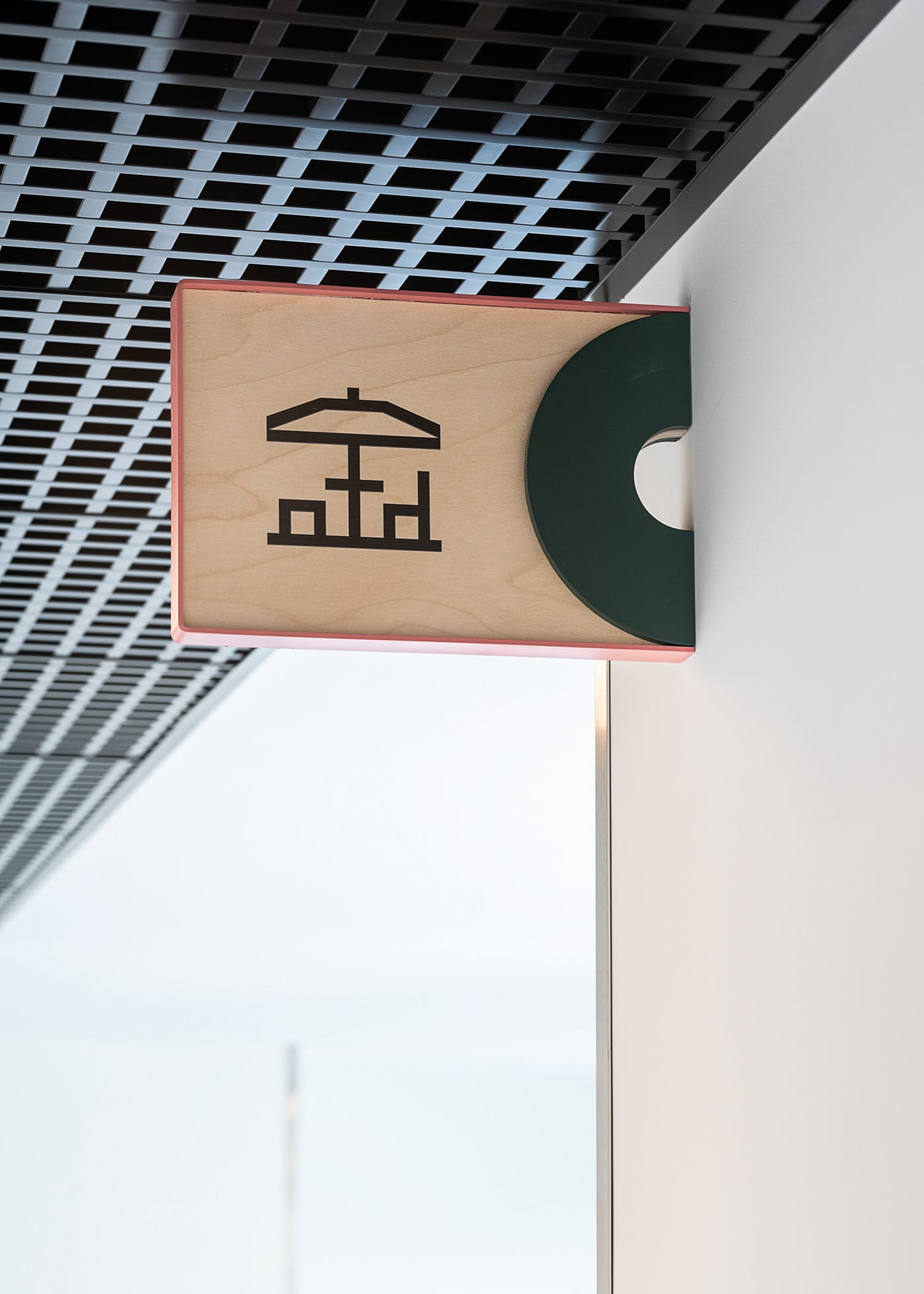
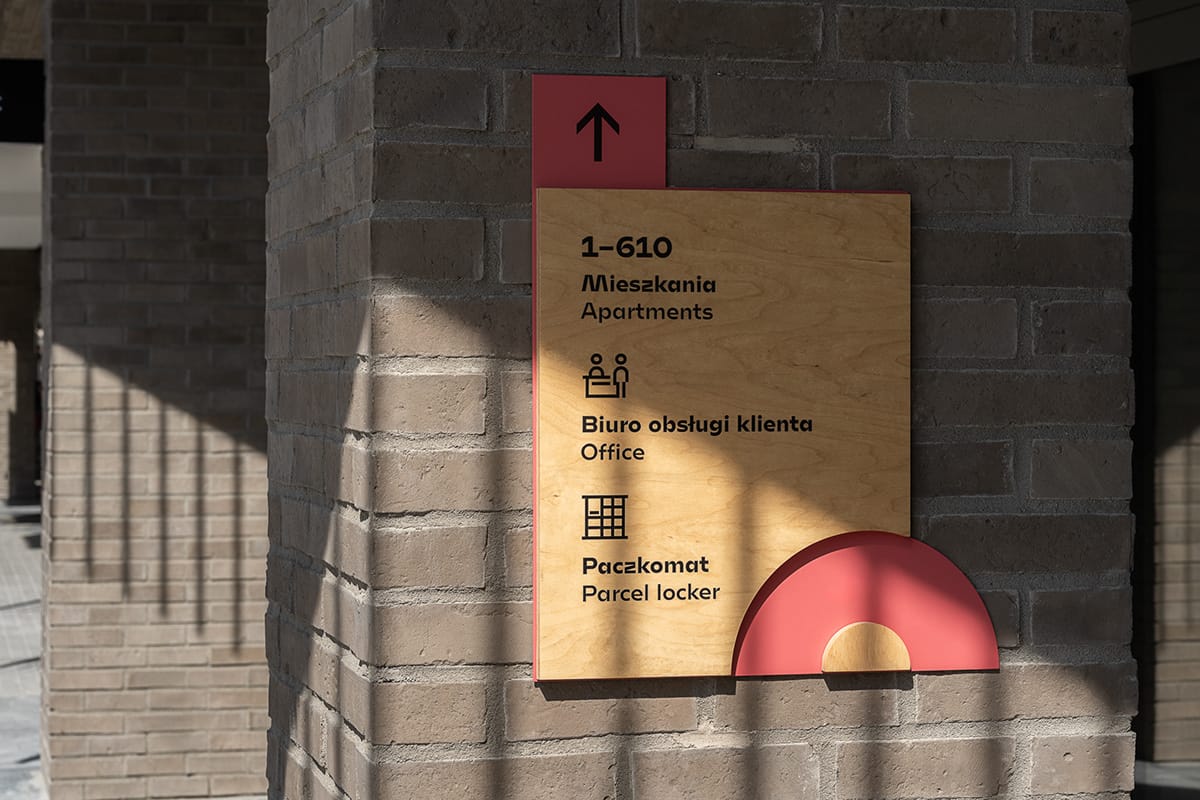
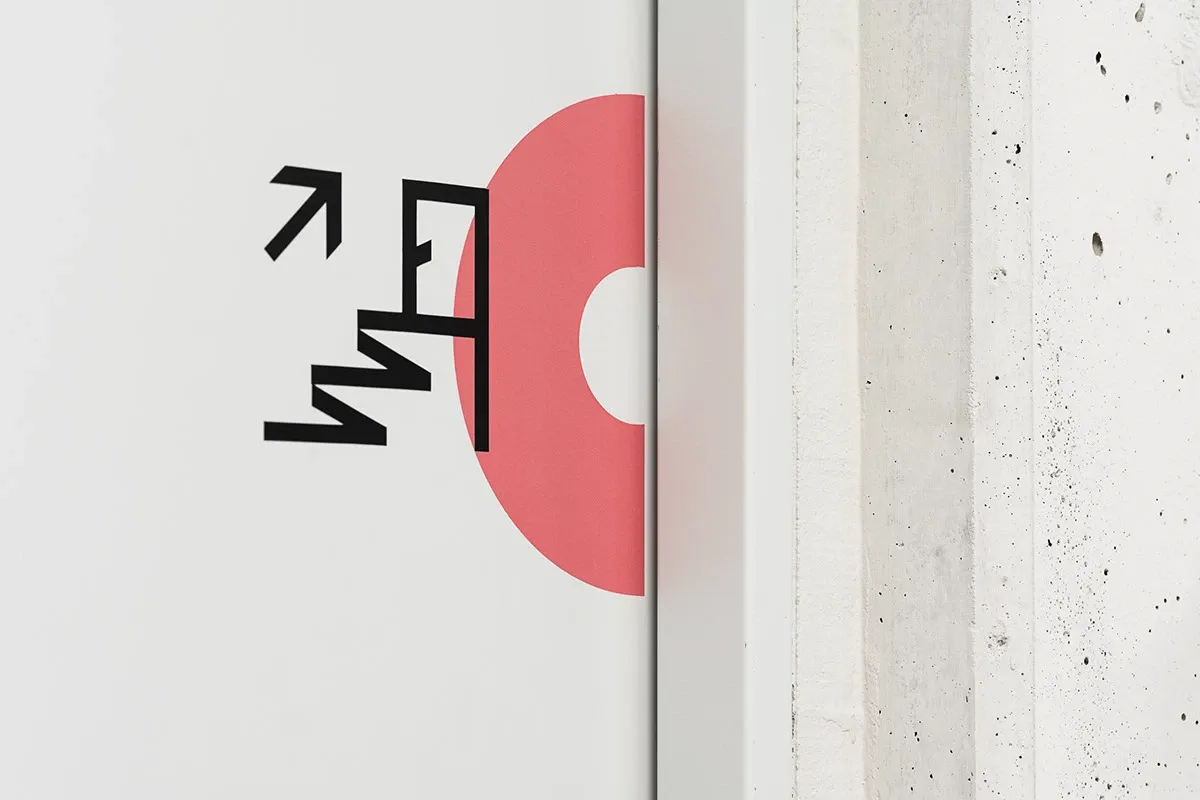
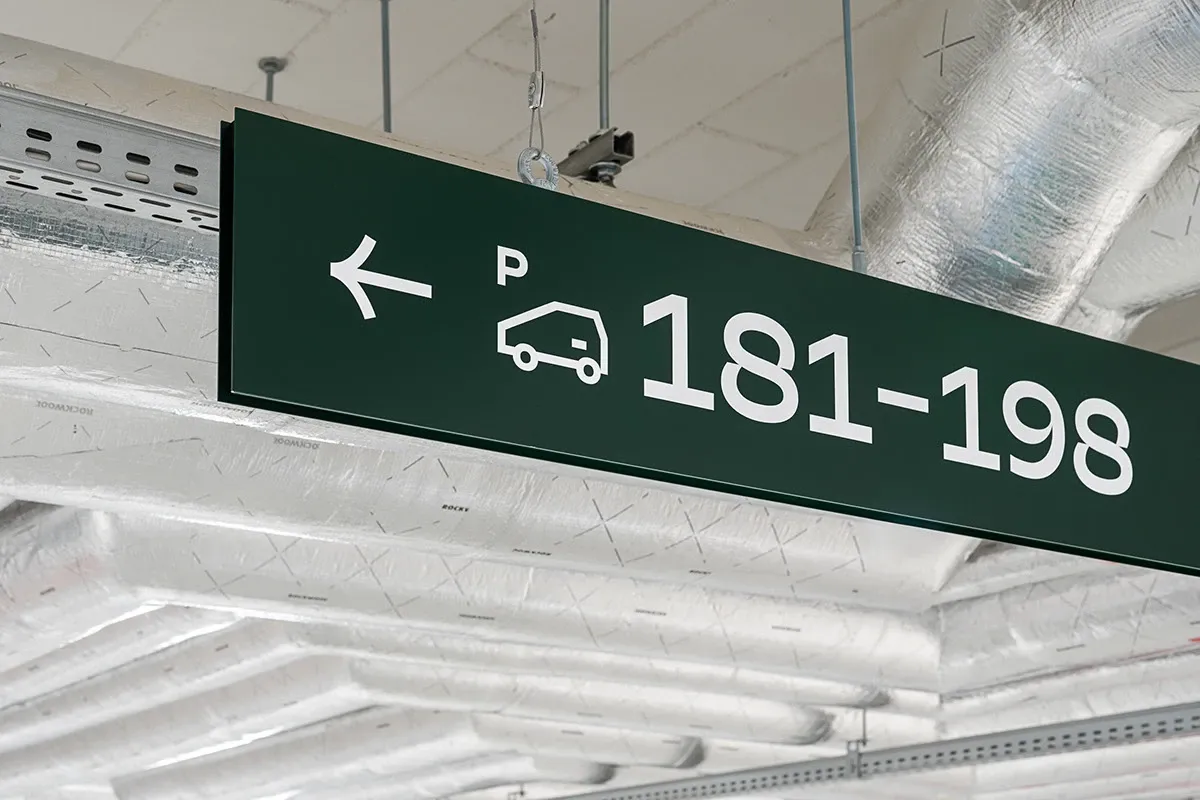
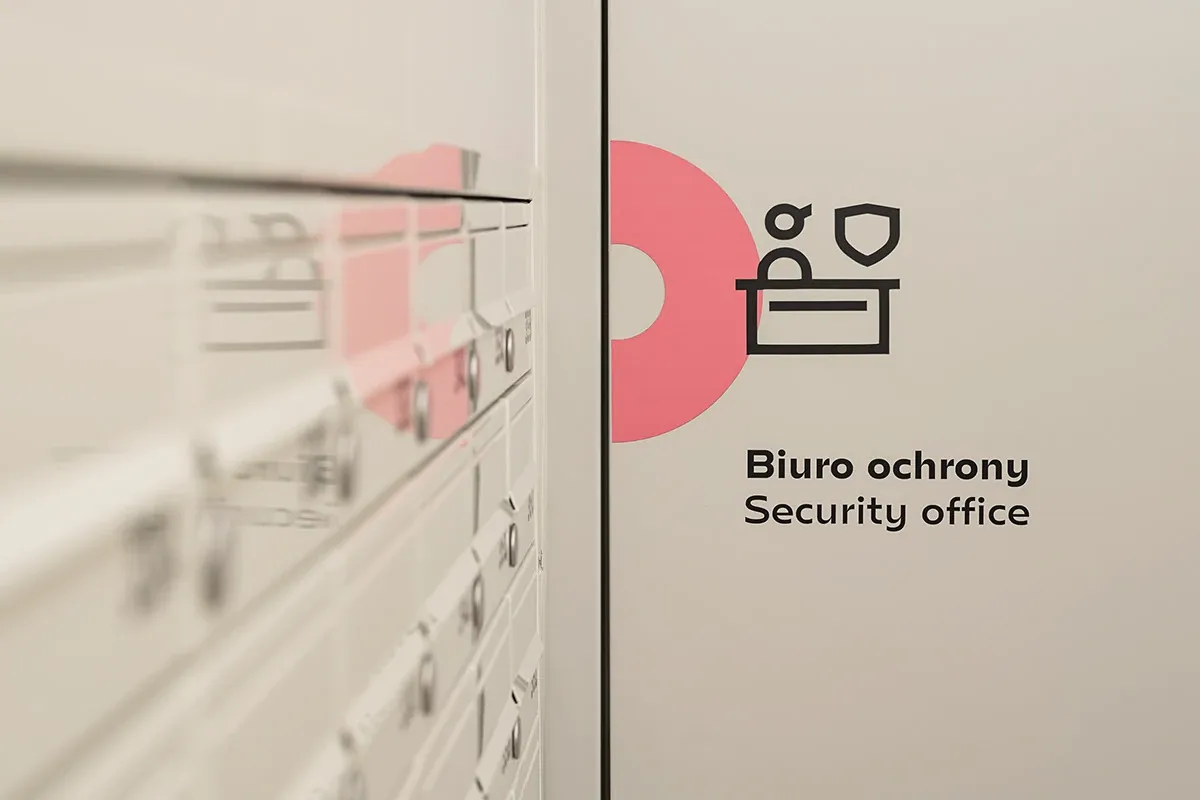
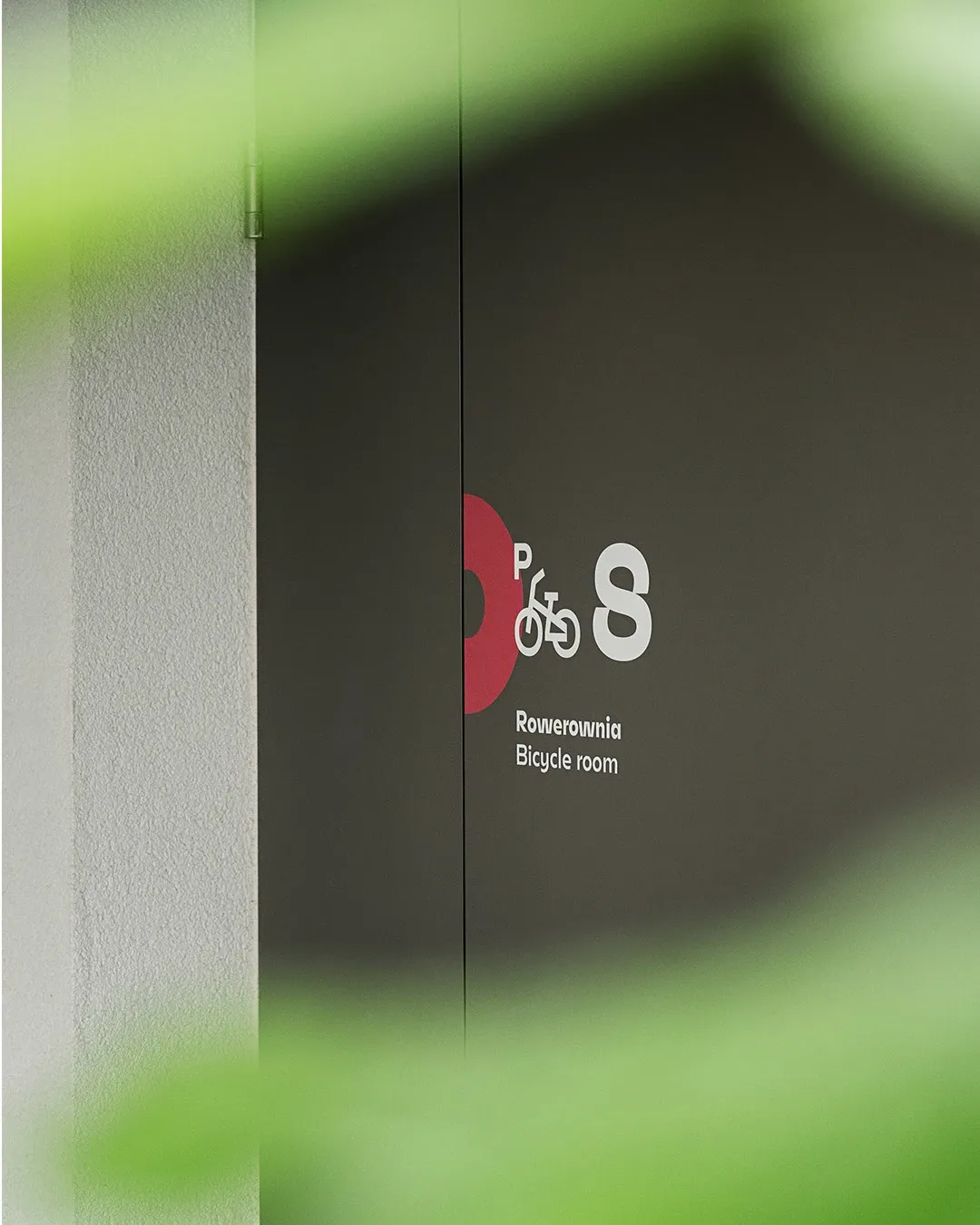


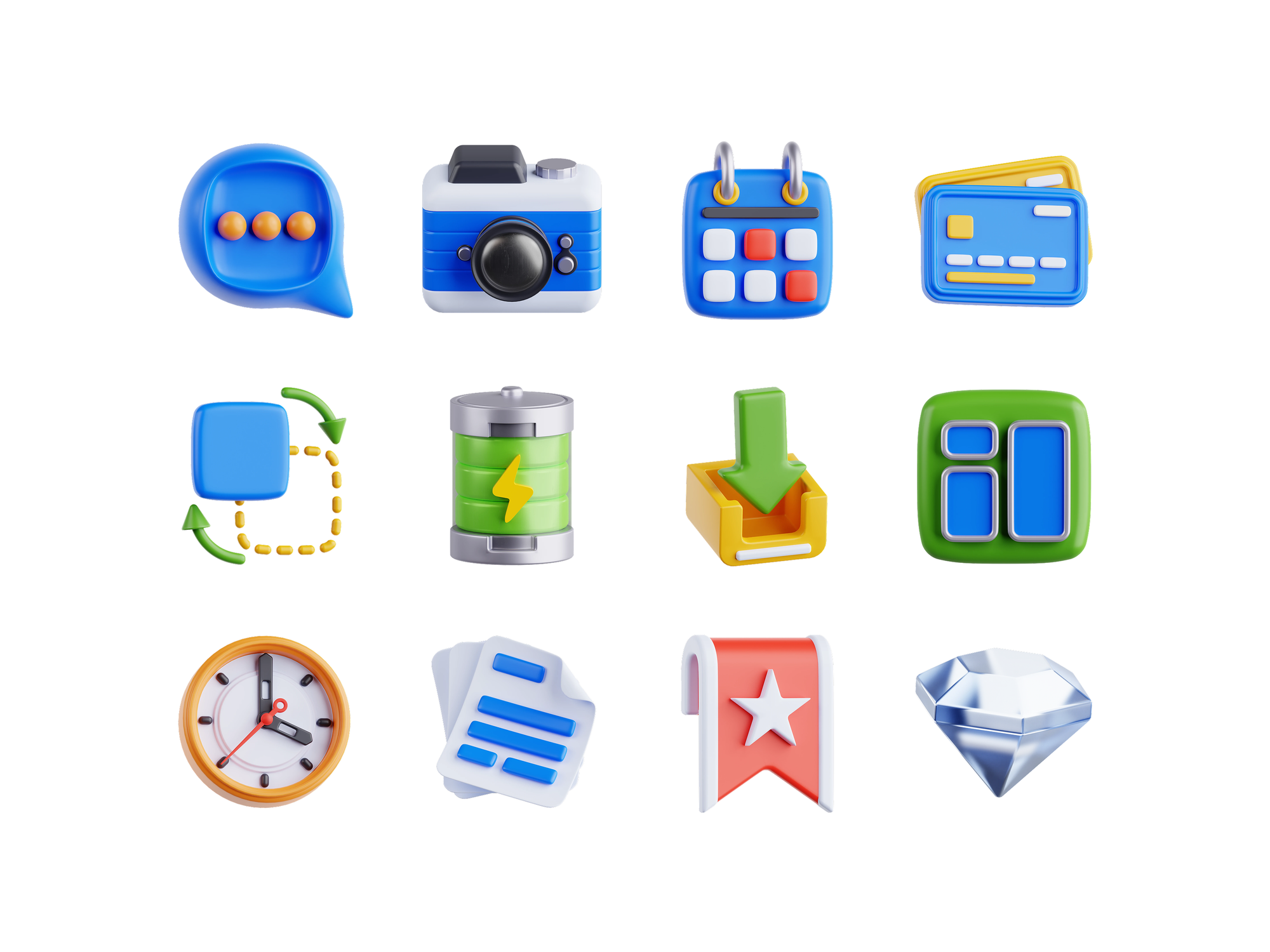
Photoshop Relics by Artua

Benjamin Oberemok notes that designers can successfully mix icon styles when guided by a brand’s overall character: “You can use icons in different styles if you know what you are doing.”
Read the full article: Using different styles of icons on a website - yay or nay?

Submit your best icon designs (or creative use cases featuring Streamline icons) and get featured in our monthly showcase.
The icon design community never ceases to amaze us. Each month brings fresh creativity, and we’ll be back with more handpicked projects to spark your inspiration. ✨
Missed a past edition? Explore the Icon Spotlight posts.
2025-09-04 09:05:48

Google’s Material Icons provide a solid foundation, but they’re far from complete. Designers still end up redrawing missing icons and fixing inconsistencies, often resorting to mismatched third-party sets.
Streamline Material Icons is our solution: a professional-grade icon set that builds on Google’s system while addressing its biggest shortcomings.
Clean, consistent, and complete. Ready for modern products.
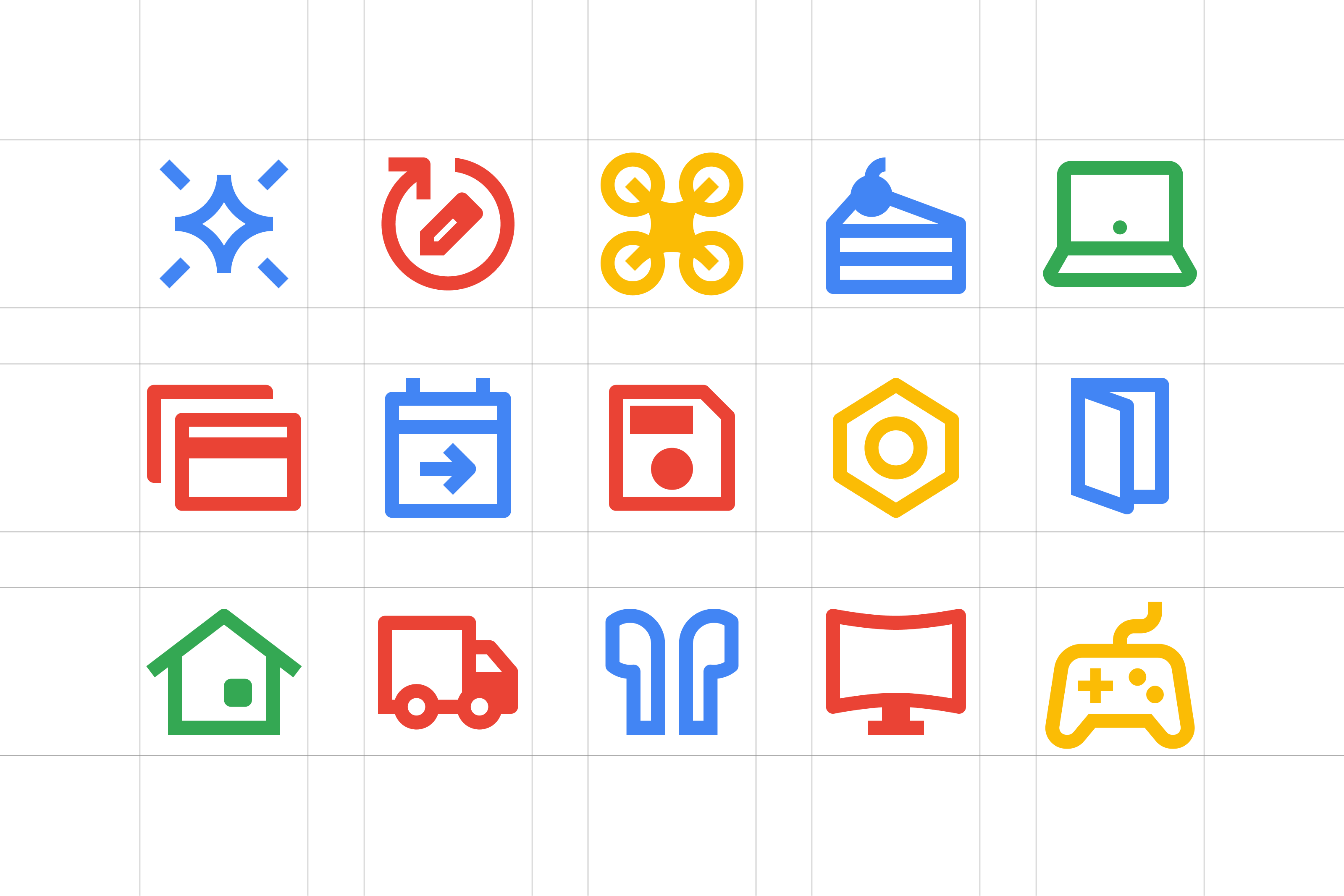
This isn’t just an expansion, it’s a redesign at scale. Streamline Material Icons builds on Google’s Material Symbols and takes them further, with:
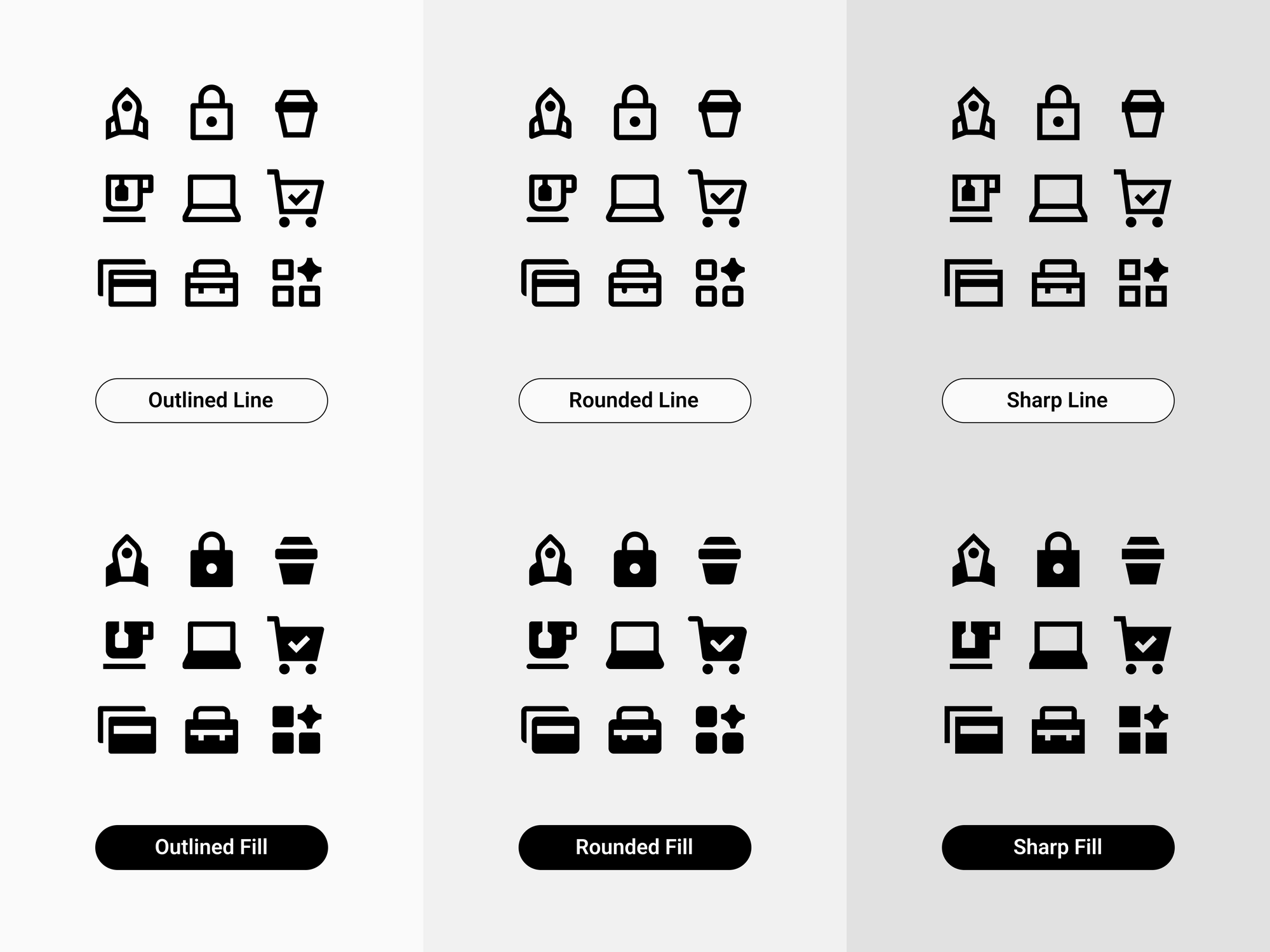
Every icon is redrawn or created from scratch to match Streamline’s standards: balanced shapes, consistent look, and a cleaner overall feel.
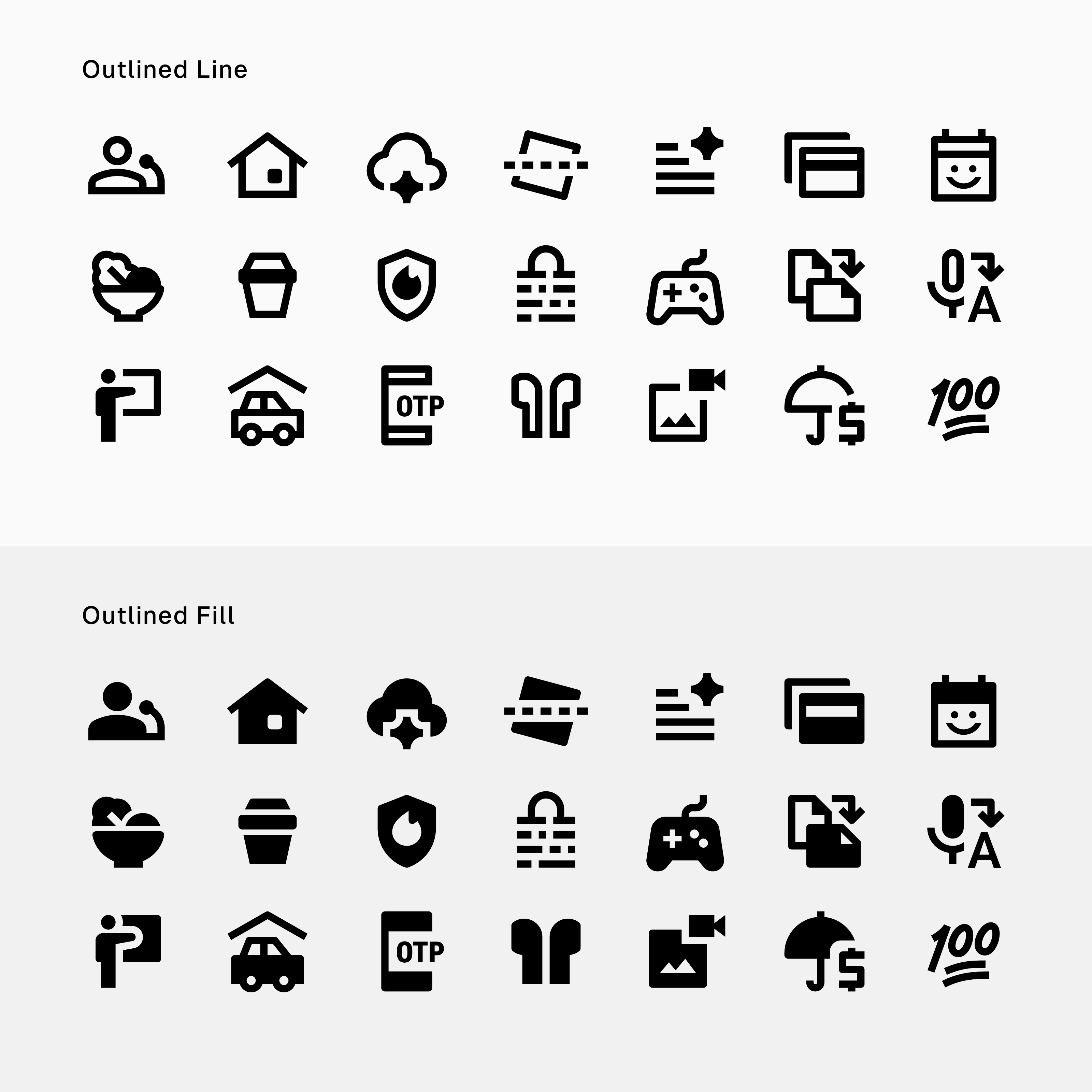
Streamline Material Icons are built on a 24px grid with a consistent 2px stroke (Material’s most widely used size).
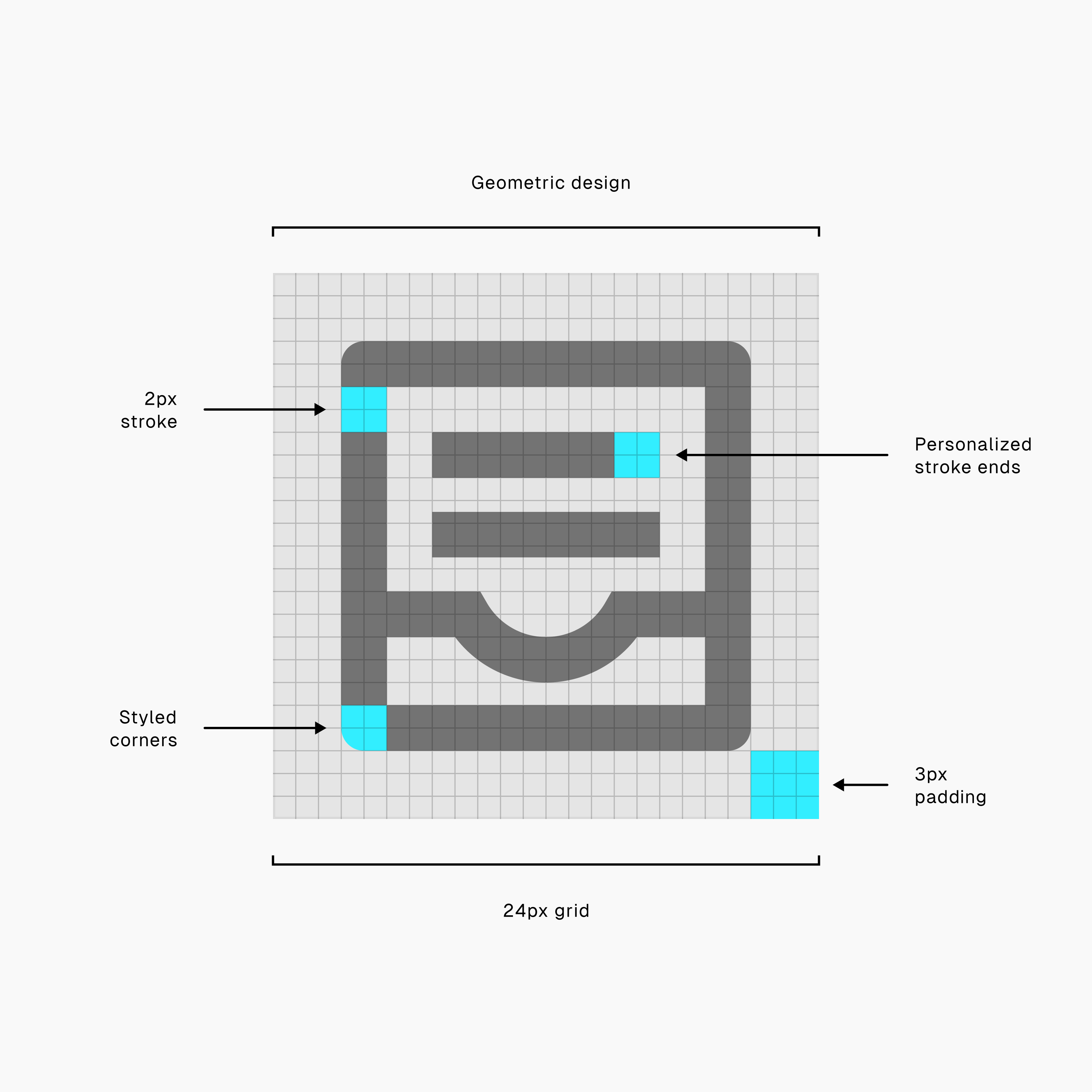
This isn’t just a default, it’s the sweet spot where icons stay legible, balanced, and visually clear across interfaces.

Material’s visual language is strong, but it wasn’t built for everything today’s products require.
That’s where we come in.
Streamline Material Icons adds the essentials: more icons in AI, business, security, multimedia, and other categories.
No more workarounds. No more settling.
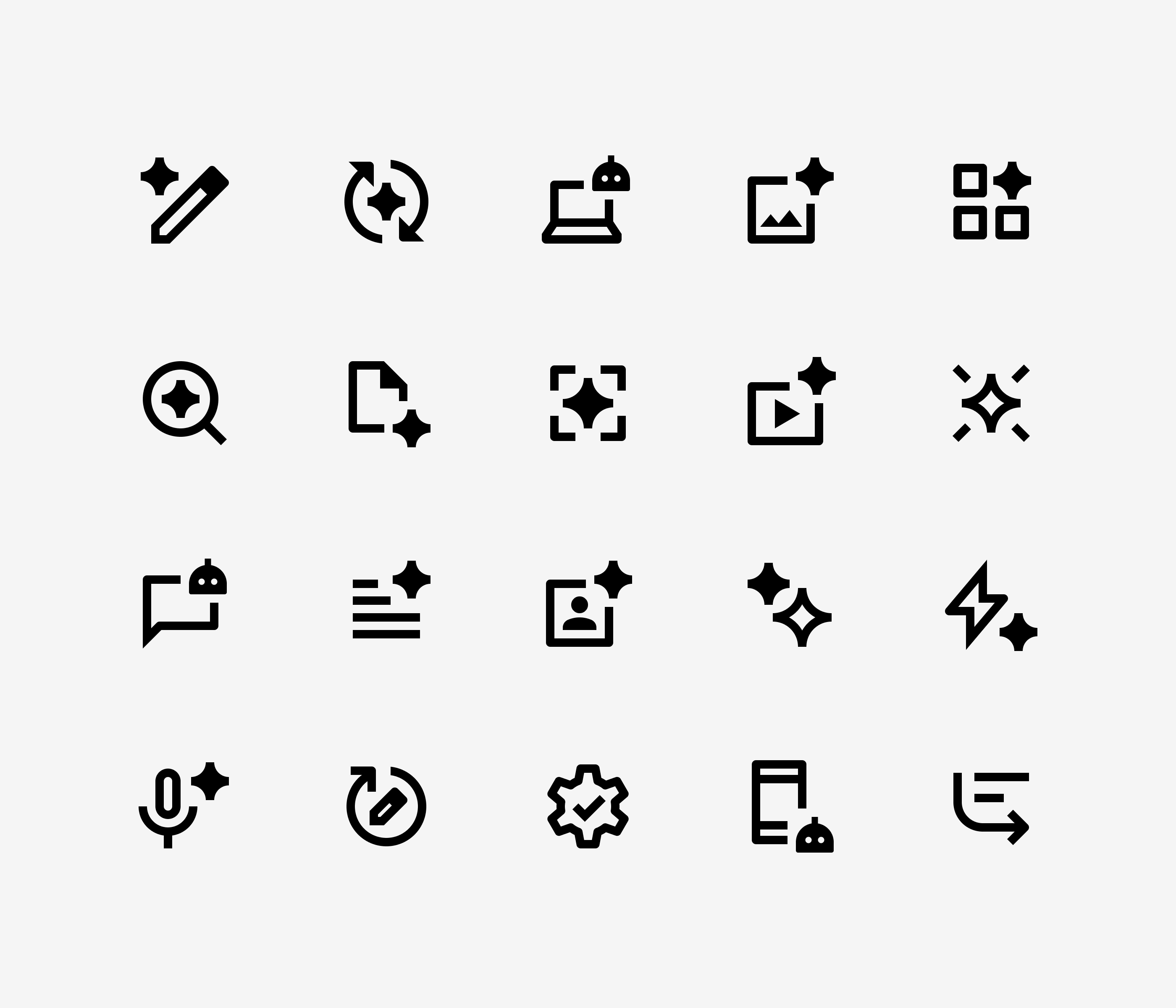
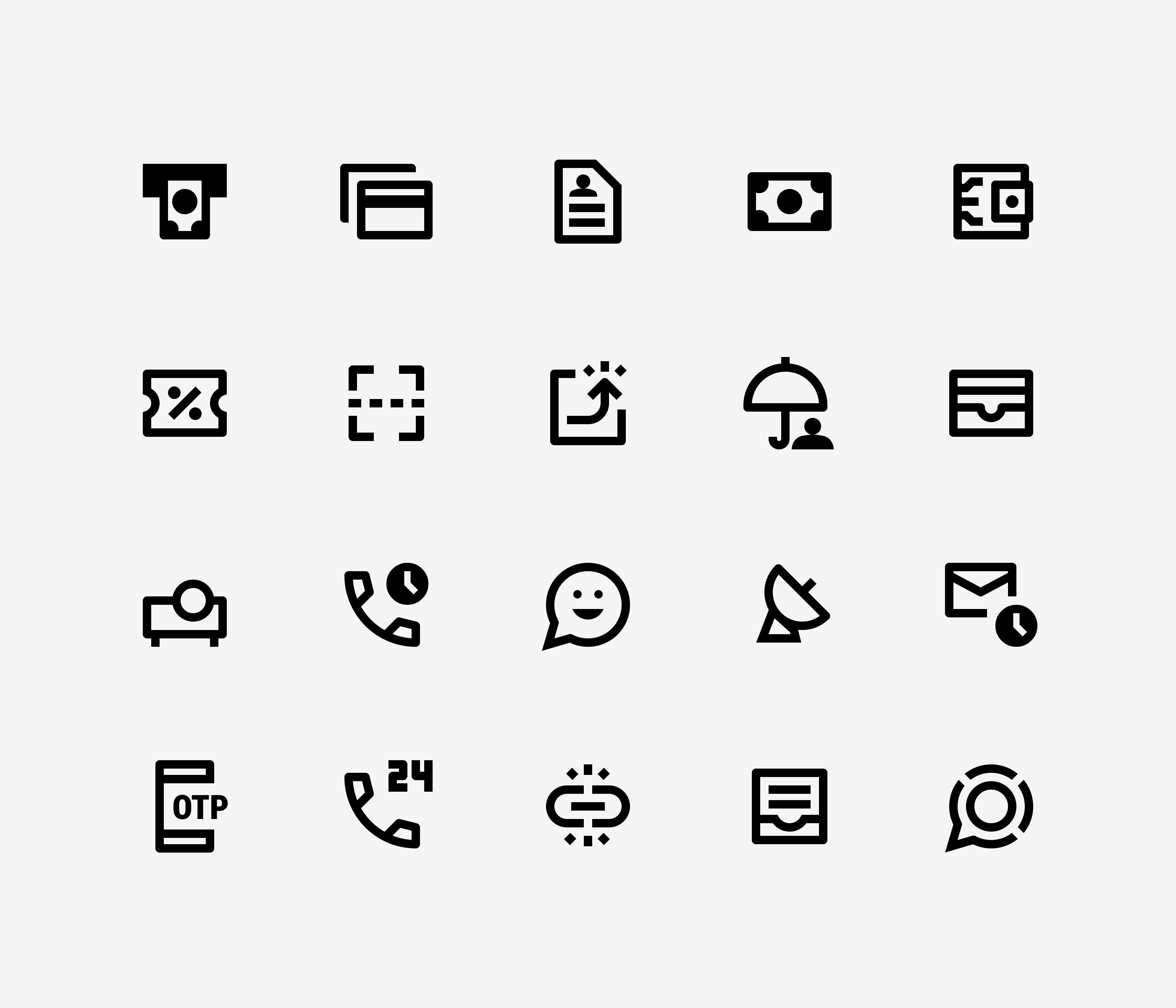
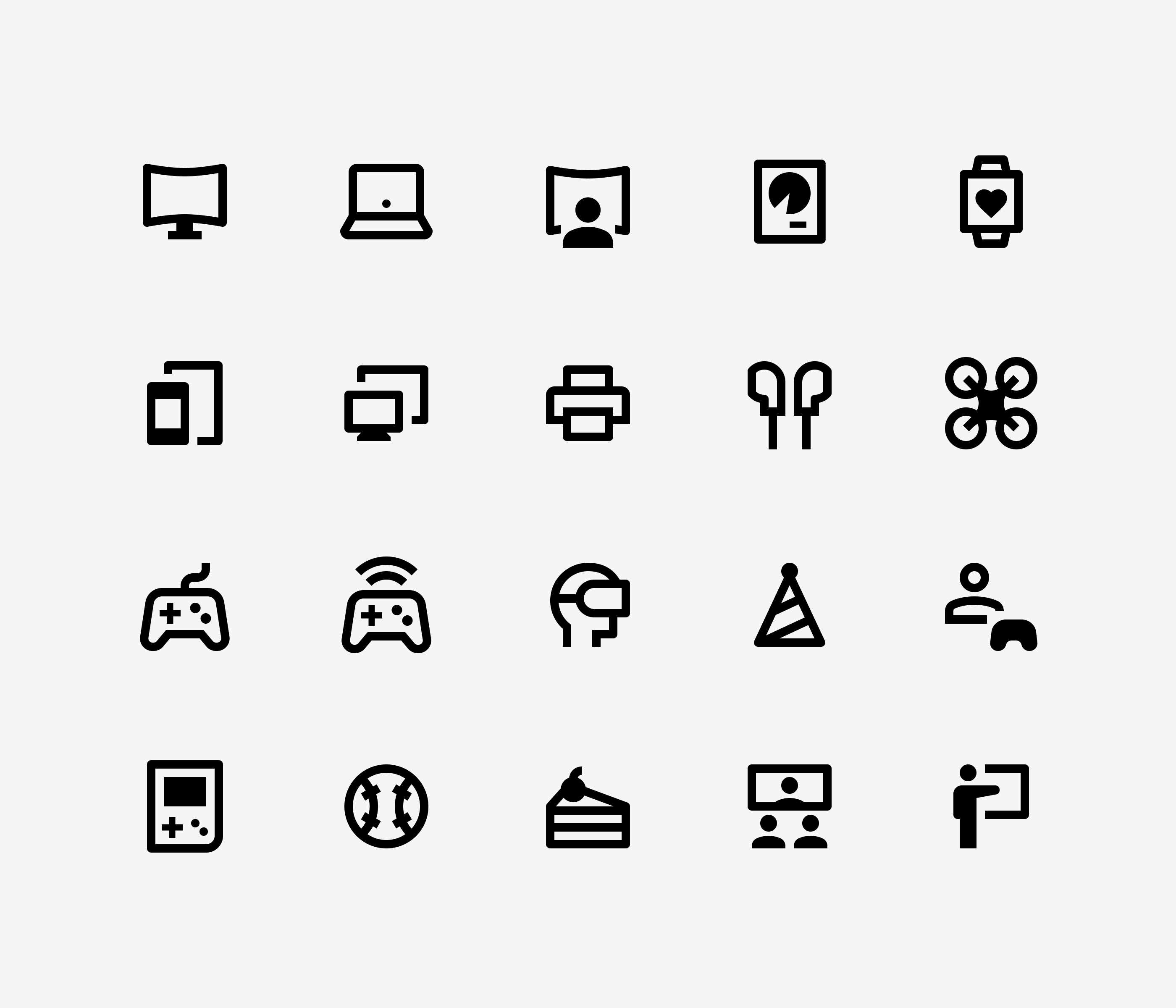



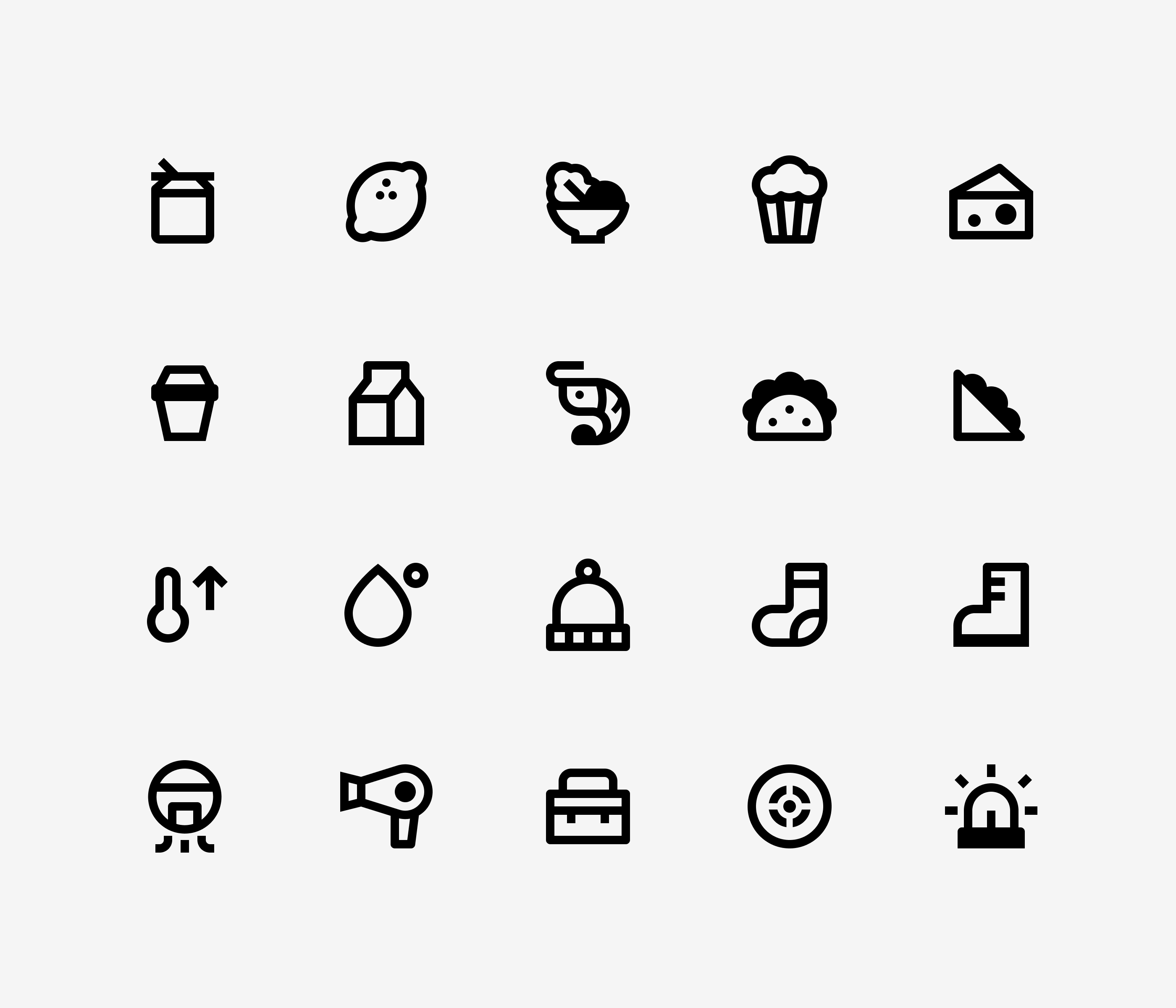

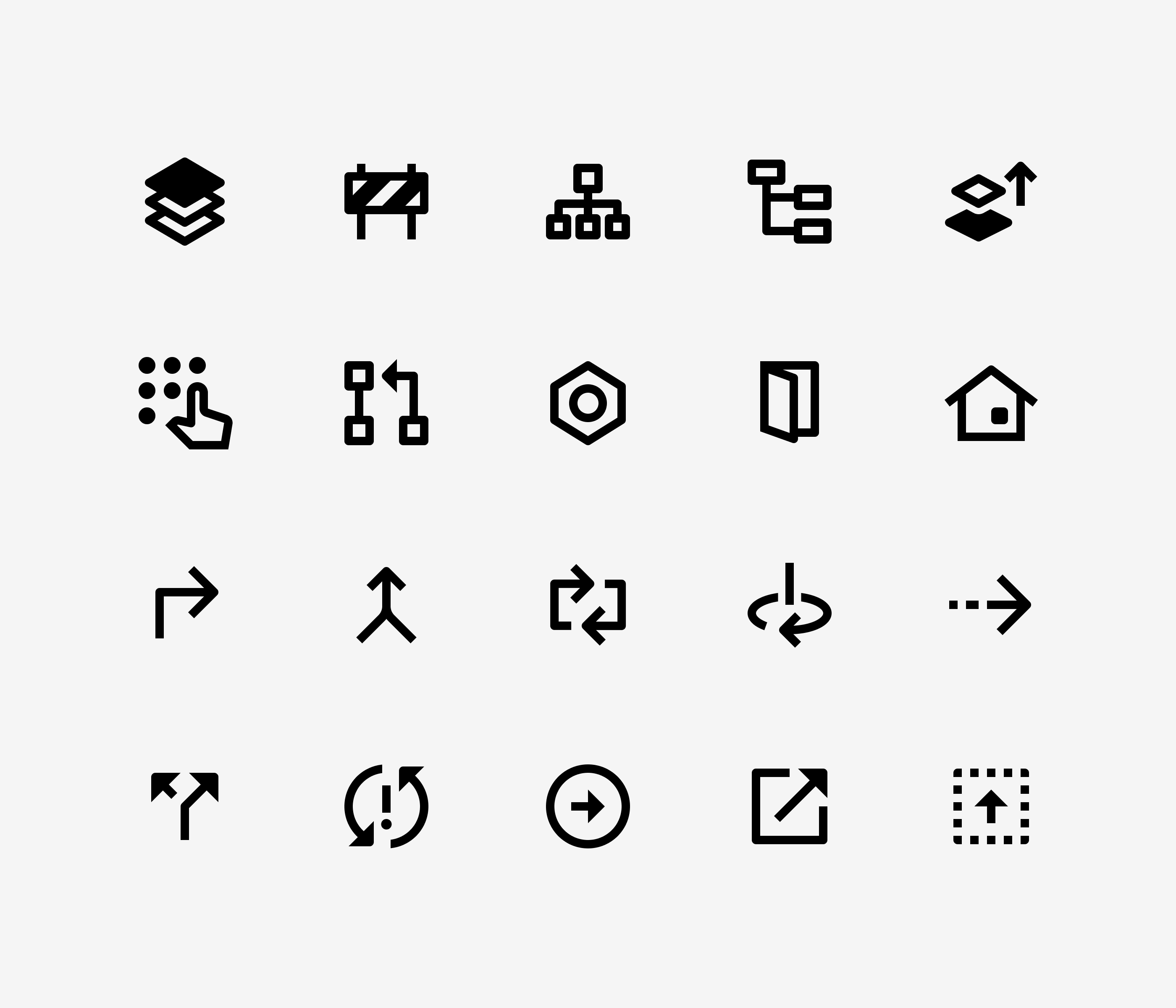
Some icons in the original set were too rough for real products: off-balance strokes, vague shapes, inconsistent form.
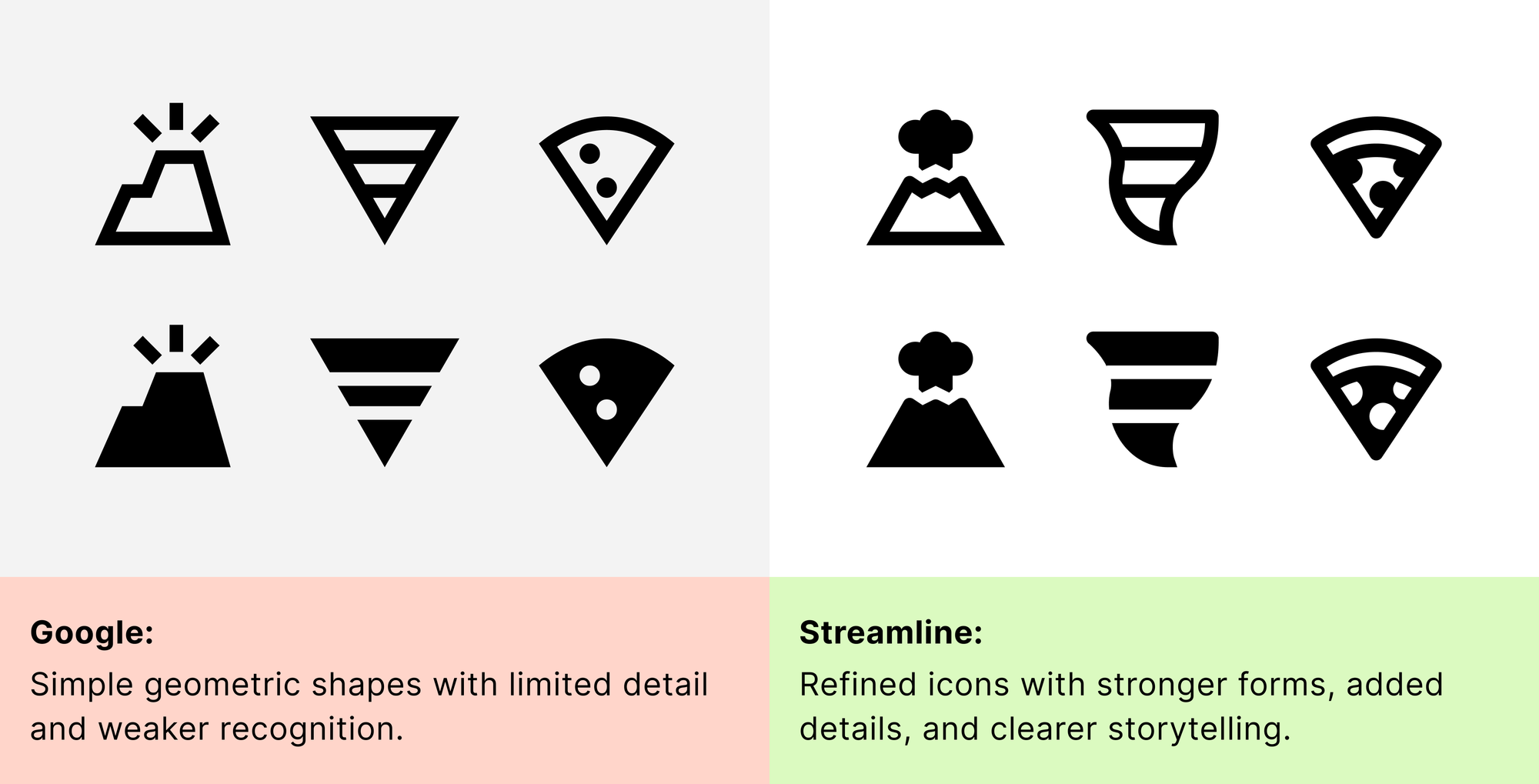
So, we redrew them (icon by icon) for clarity, precision, and consistency.
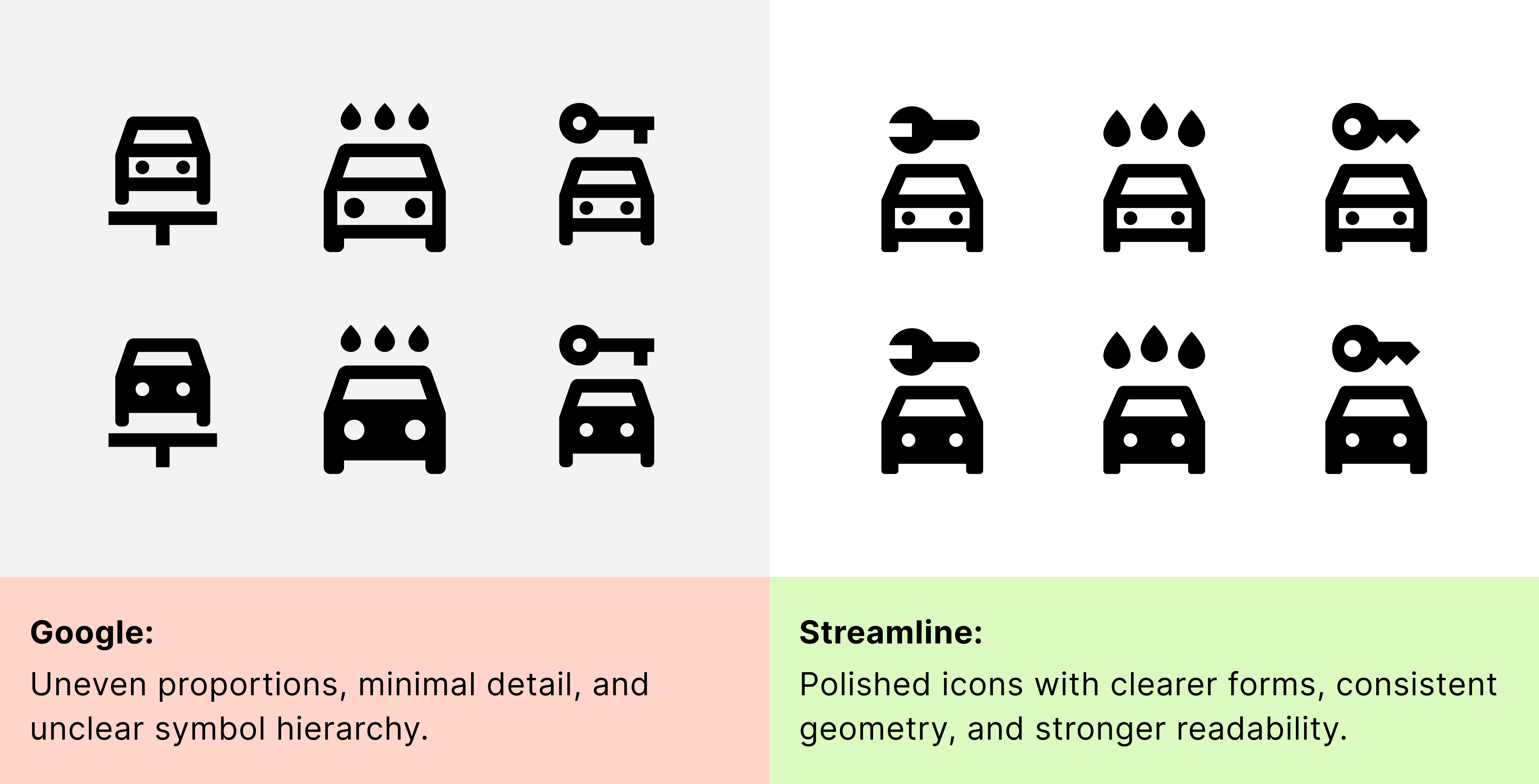
The difference is subtle, until you notice it. Then it’s impossible to ignore.
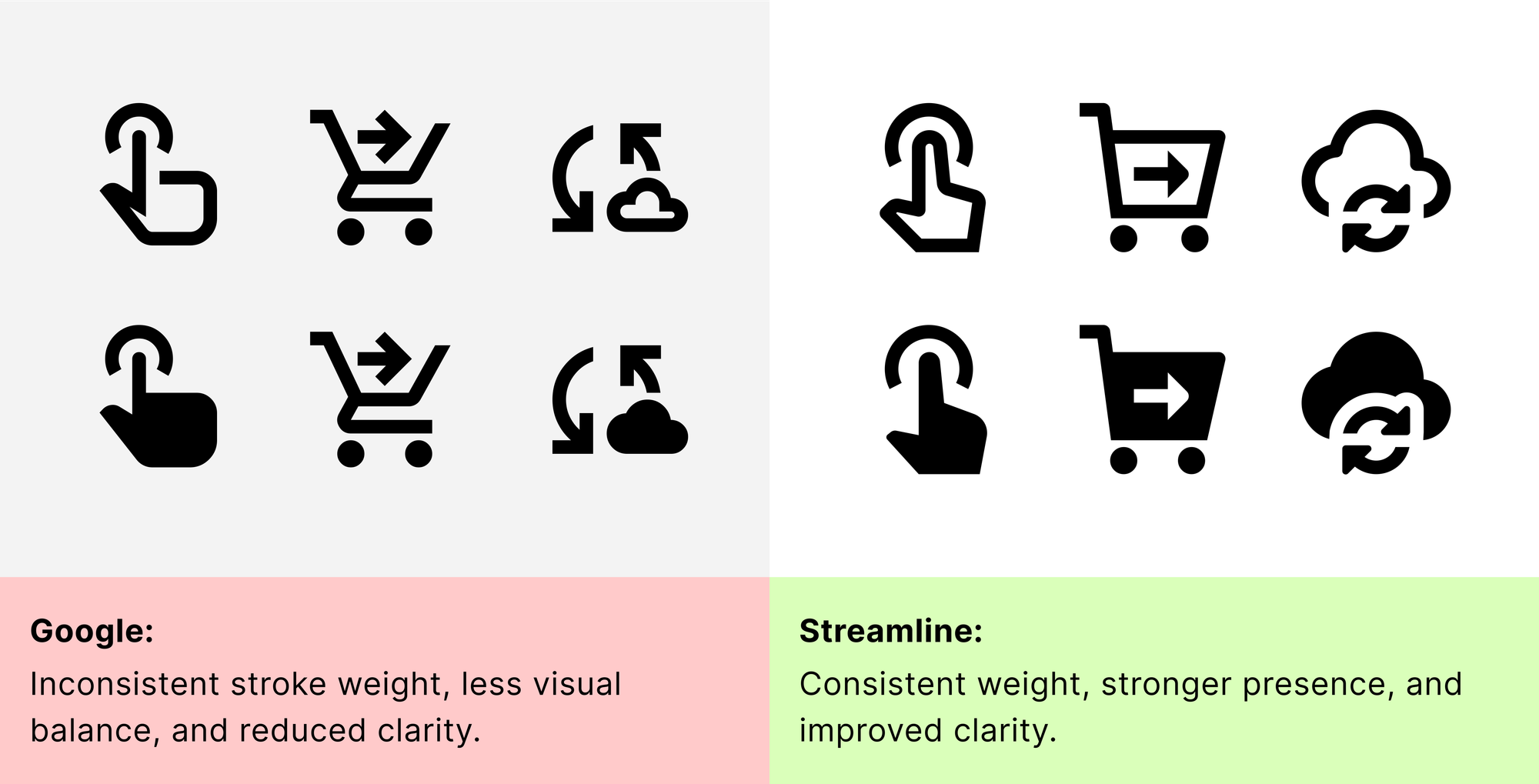
Streamline Material Icons follow the same geometry and stroke logic as Google’s Material Icons. They pair best with typefaces that emphasize clarity, balance, and neutrality.
Still the most consistent choice. Its clean forms and neutral tone align perfectly with the icon set.
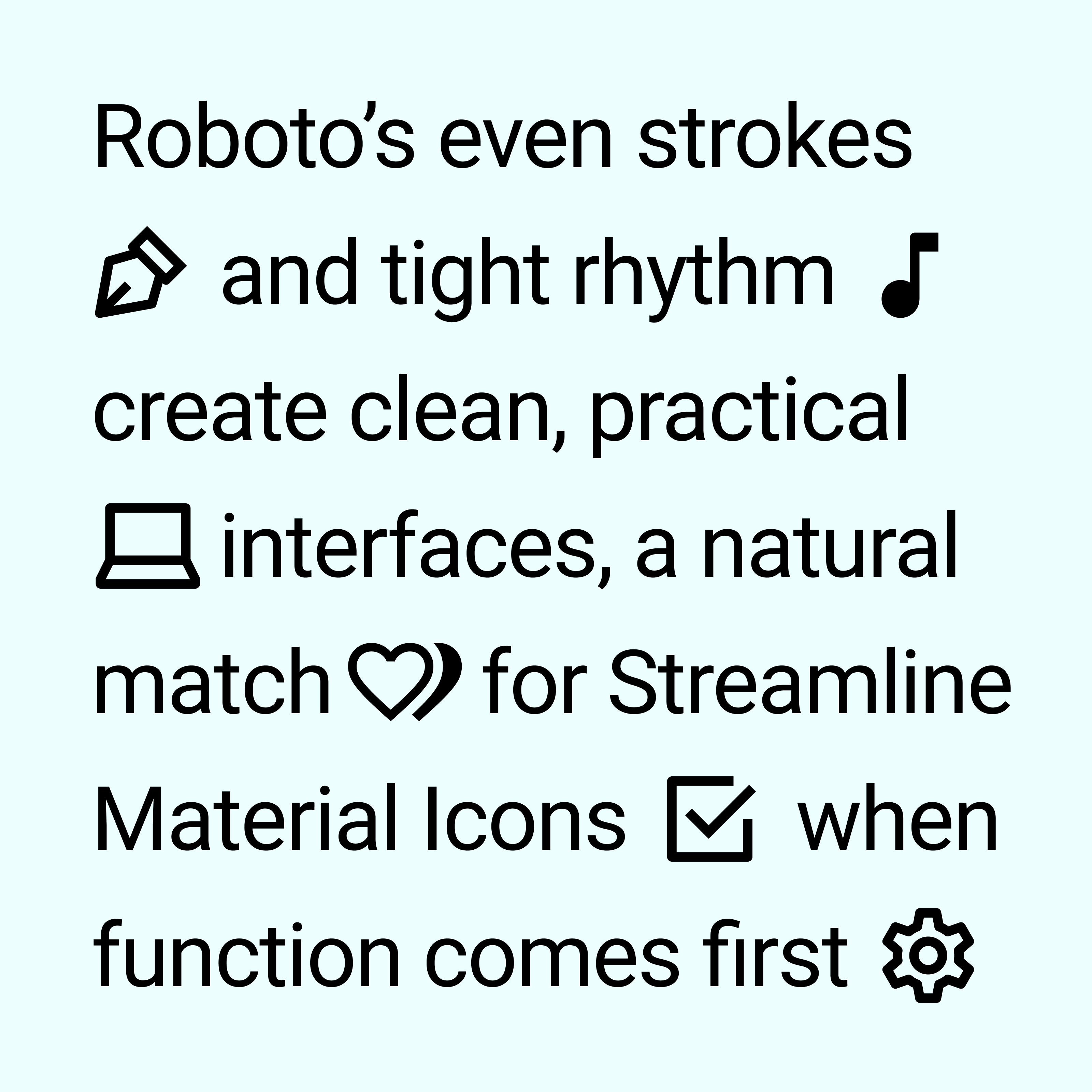
Great for multilingual products. Its structure stays close to Roboto while expanding language support.
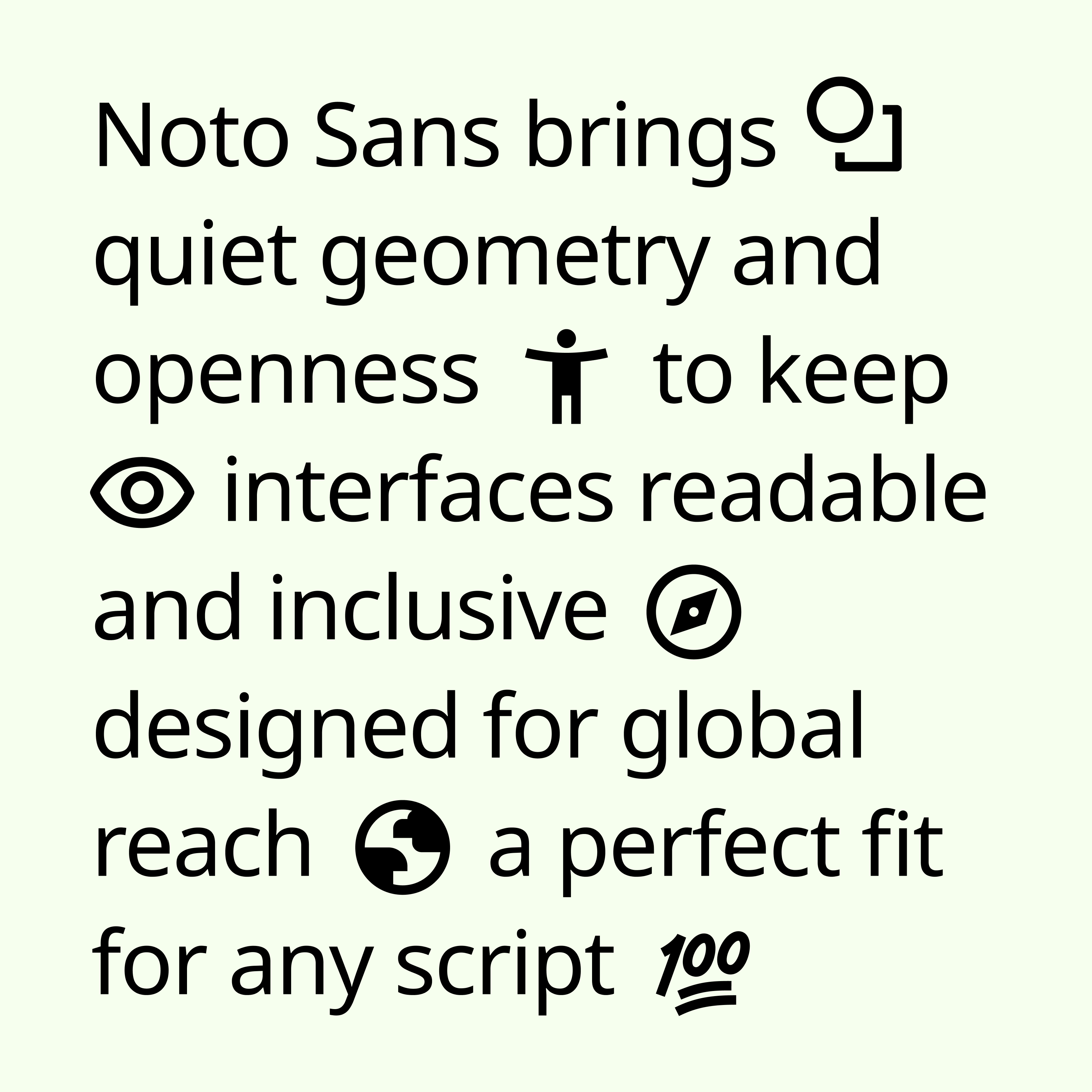
Other clean geometric sans-serifs that work well. Look for open counters, even strokes, and simple forms to avoid clashing.
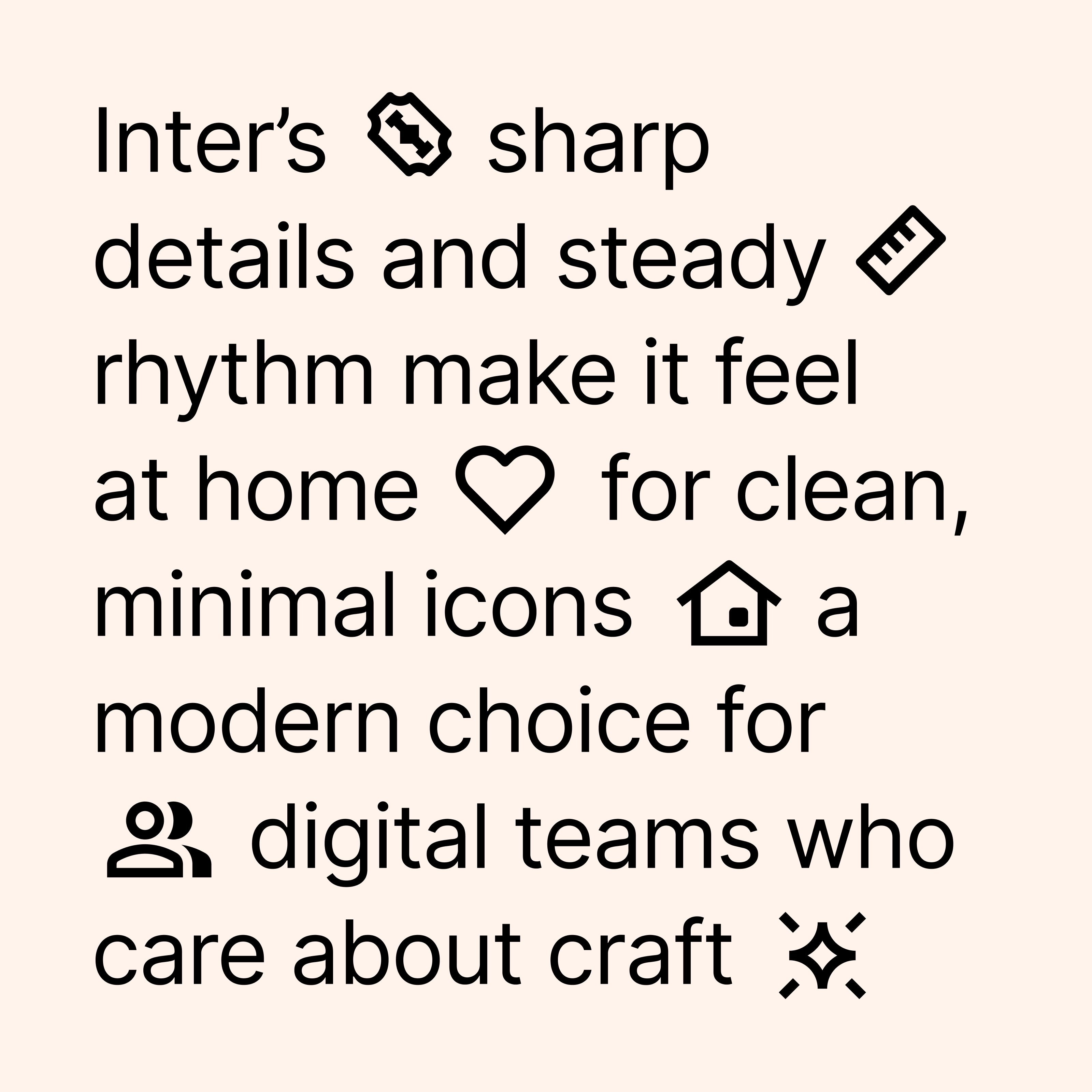
With Streamline Material Icons, your team no longer needs to:
We’ve added 2,000+ new icons adapted from our Core, Sharp, Flex, and Plump sets and refined 3,000+ existing ones so everything aligns out of the box.
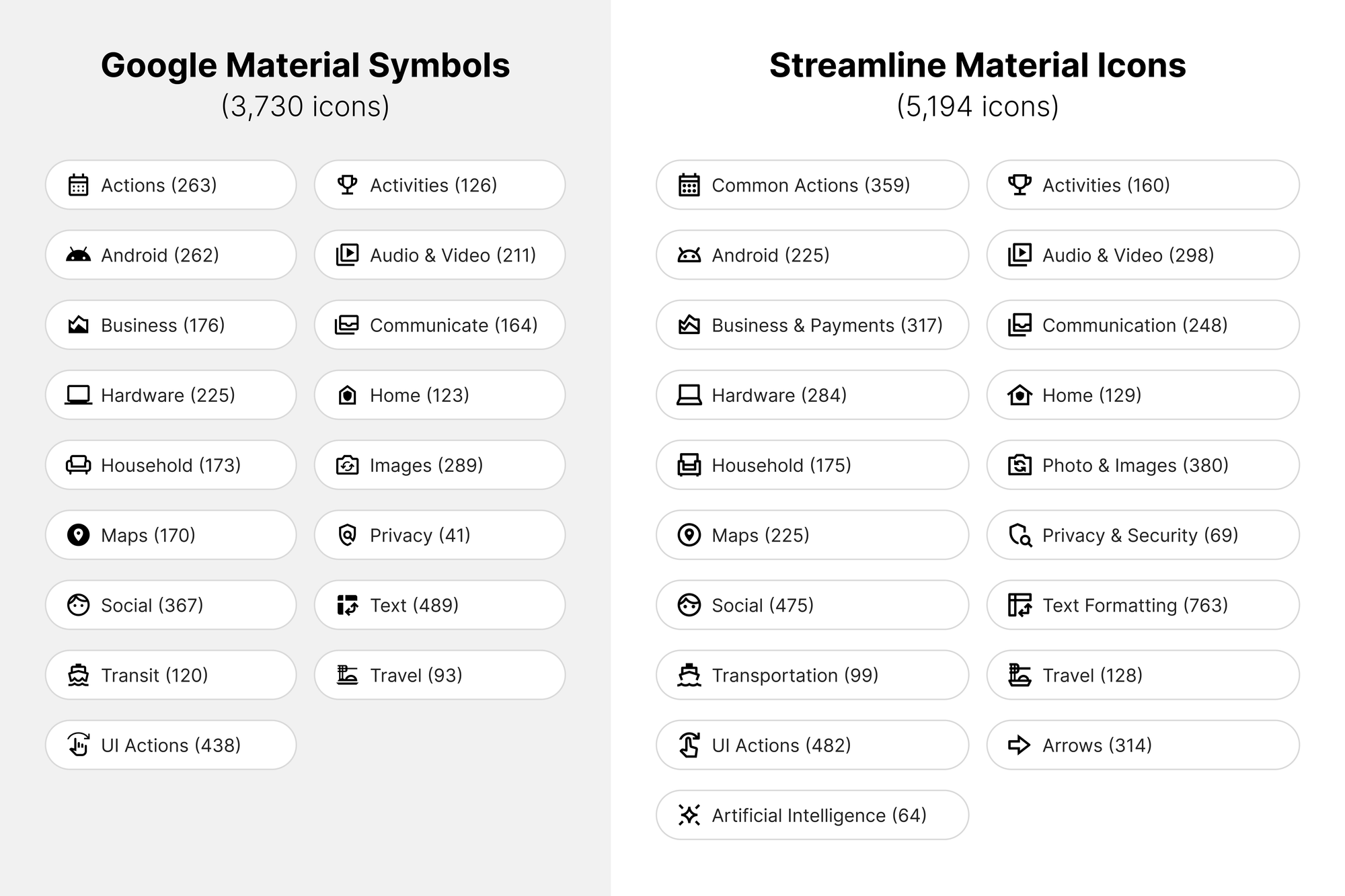
Stick with Material’s familiar look but skip its limitations. Use Streamline Material Icons when your product demands:

Great for:


Whether you’re designing for Android or building on Material principles, this is the set Google didn’t finish. But we did.

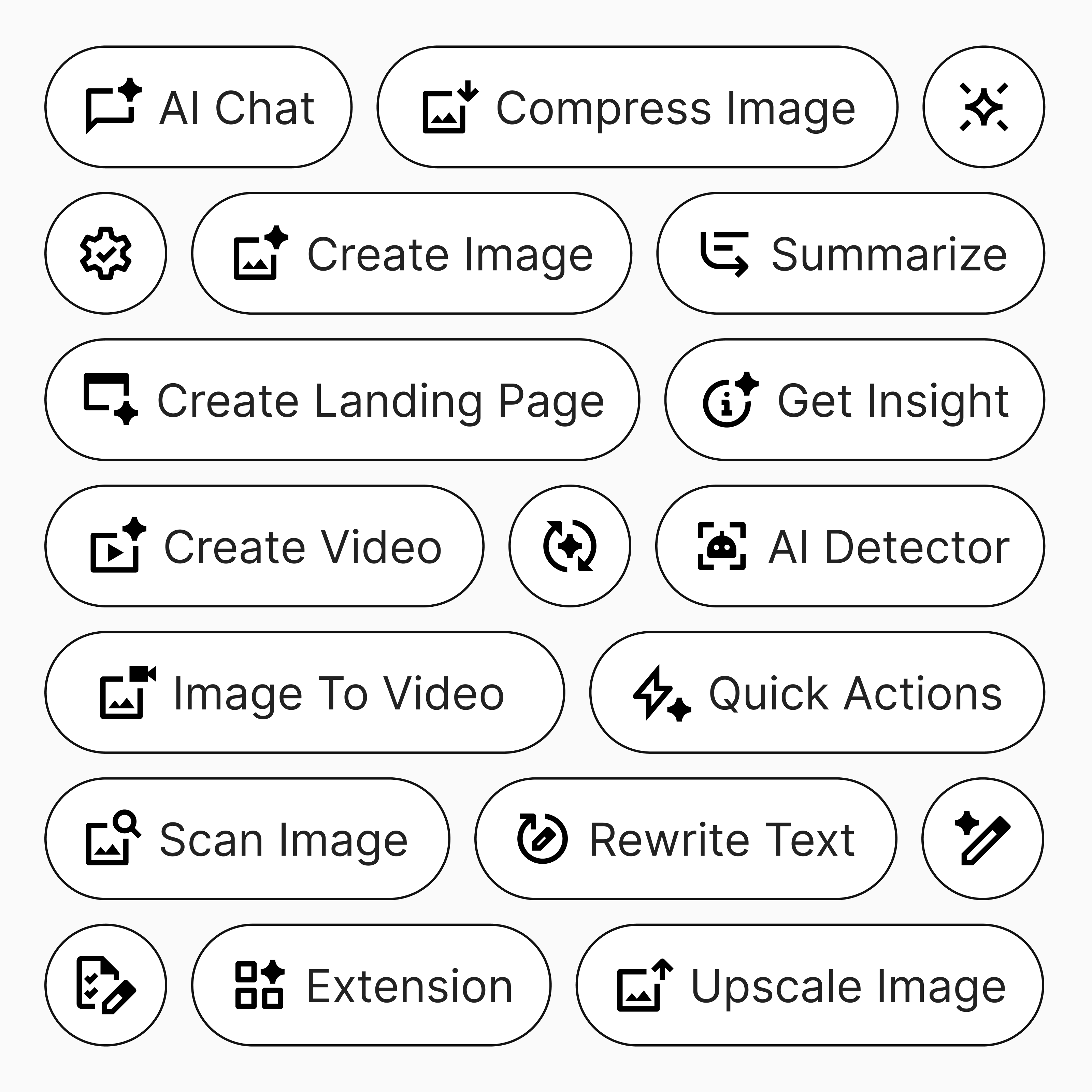
Streamline Material Icons is crafted with the same care, precision, and design standards behind our Core, Flex, Sharp, and Plump sets.
It’s included in the Streamline Pro plan and available now in your library.
We’re actively expanding the set. Rounded and Sharp styles are coming soon. Have a request? Let us know what you’d love to see next.
2025-08-28 18:50:07
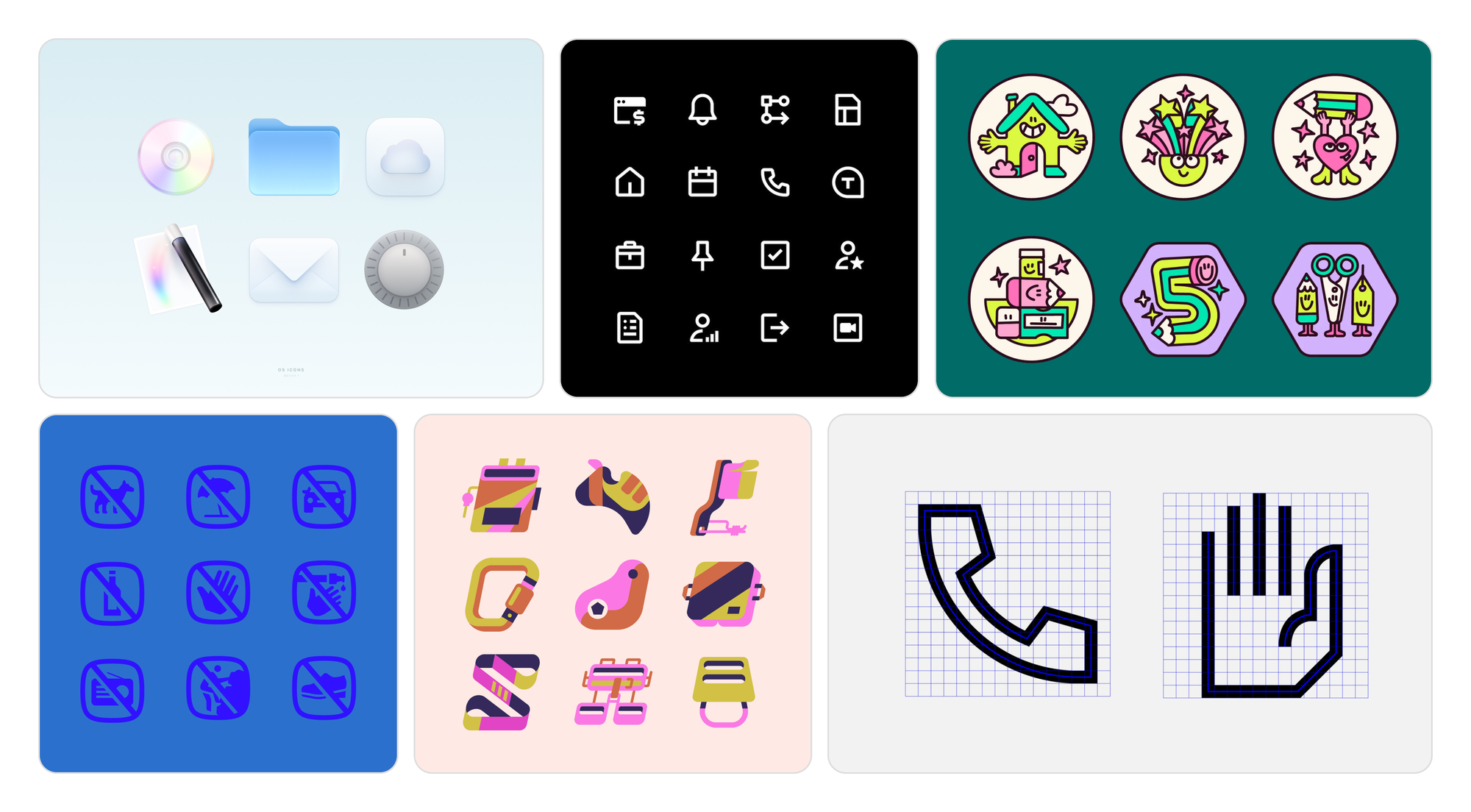











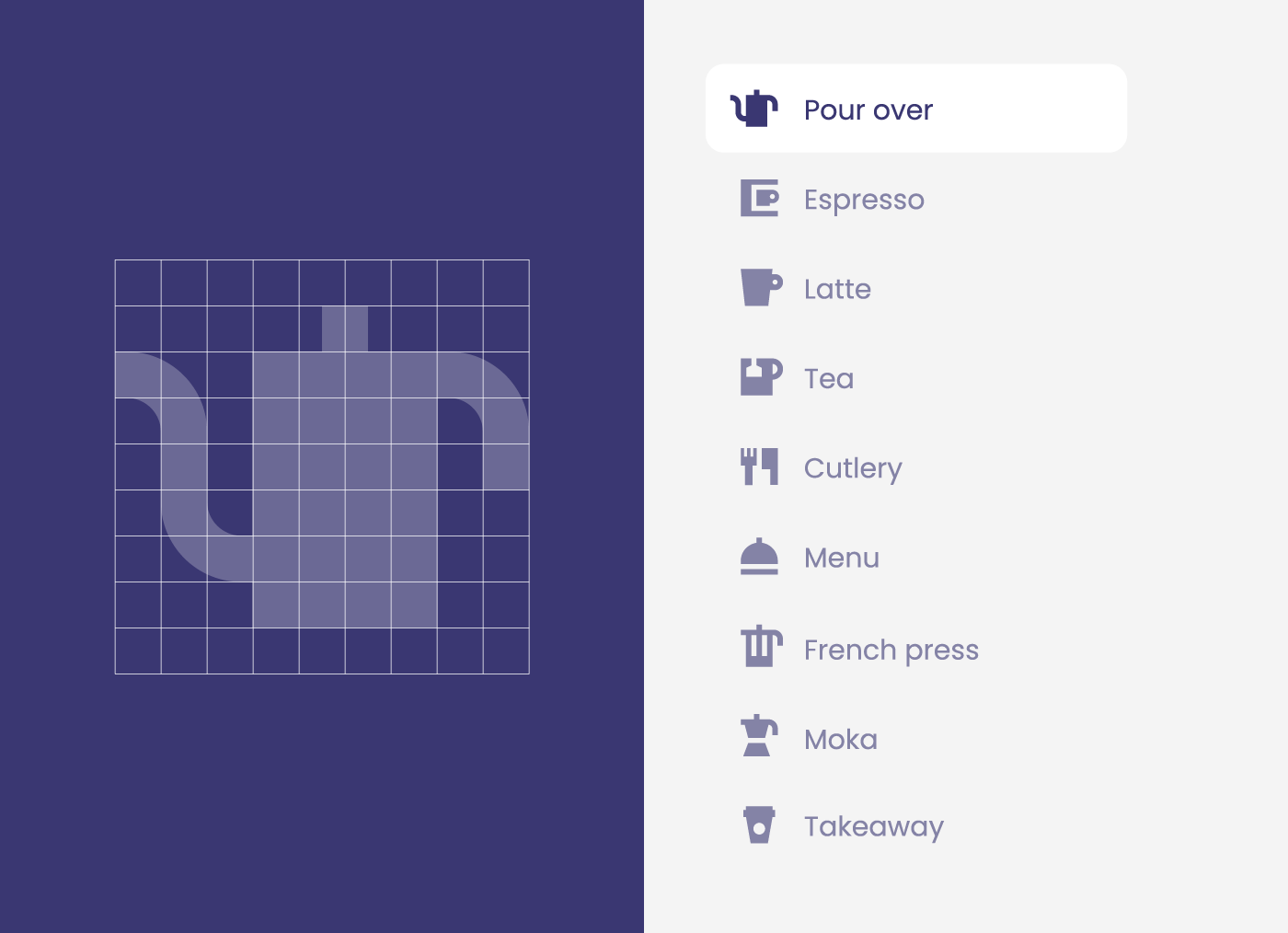
































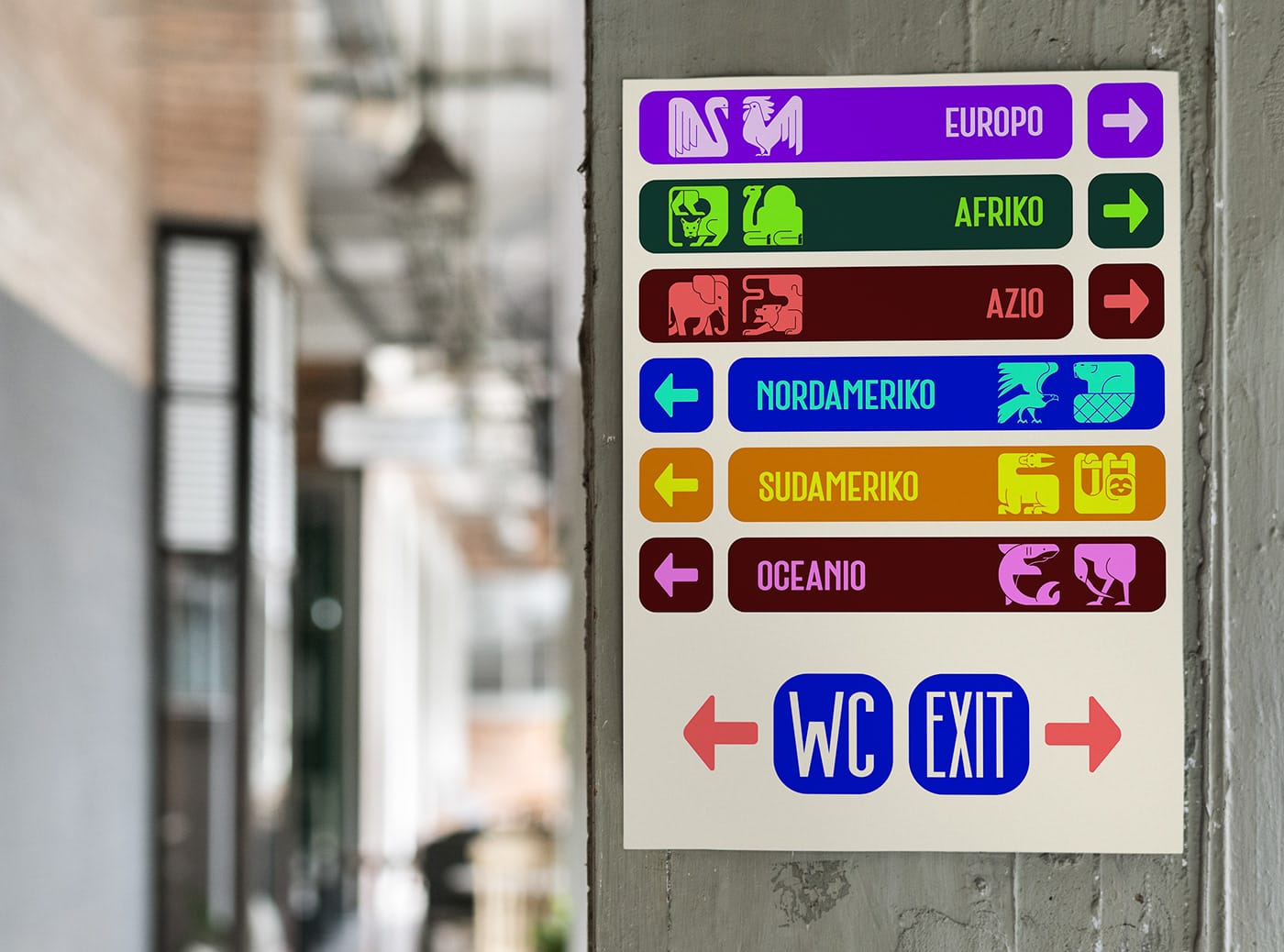

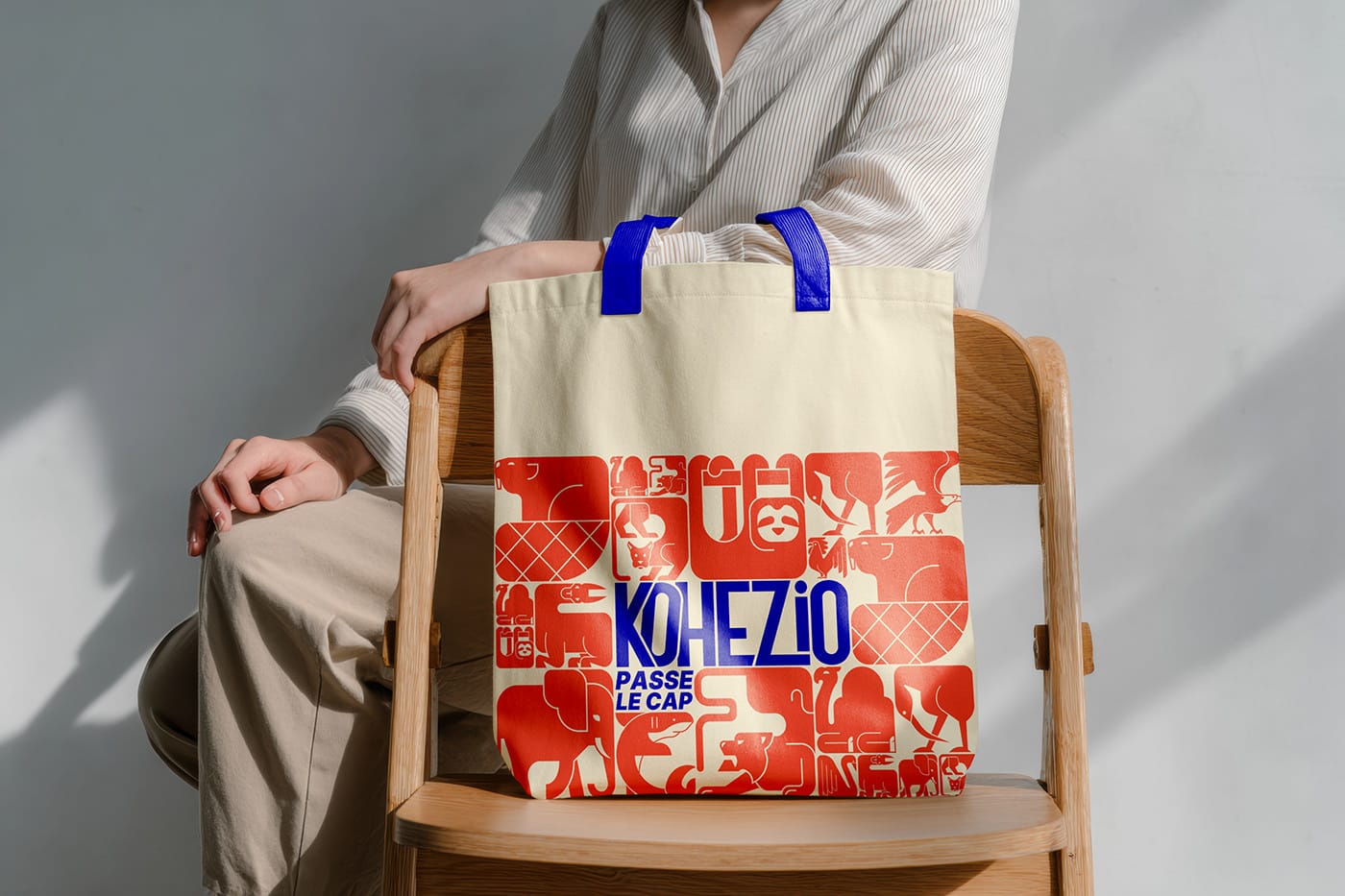






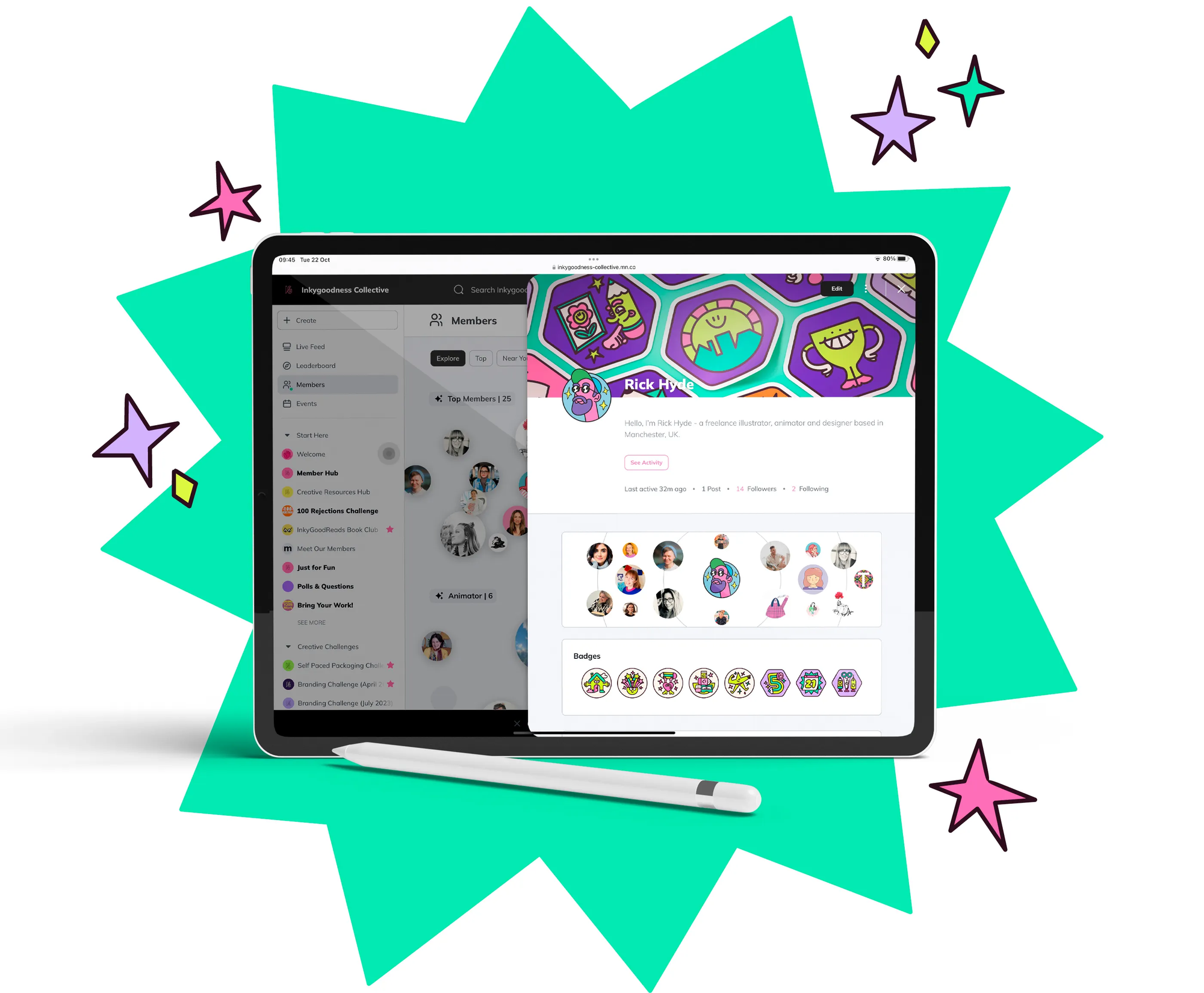
















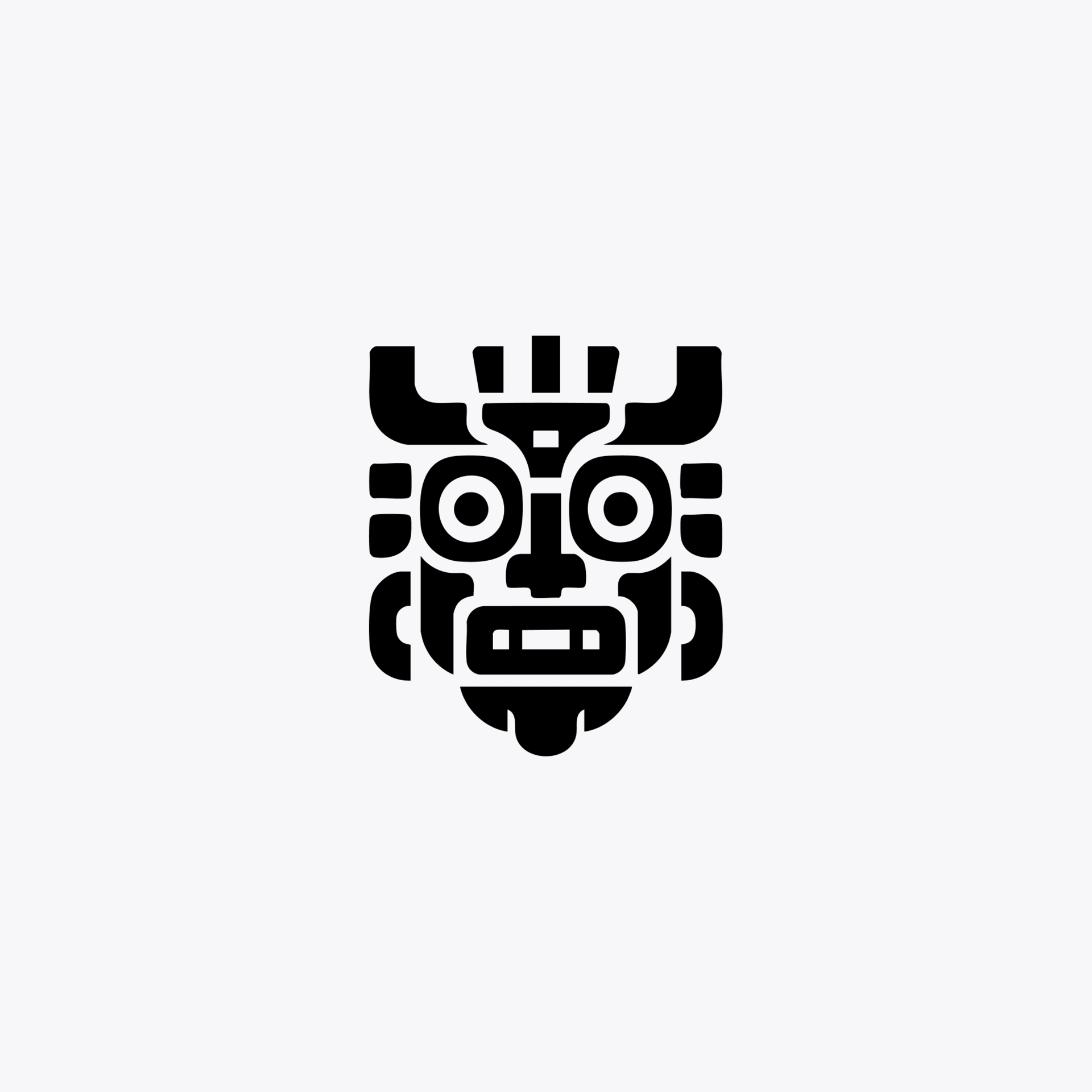






We've been sharing our latest icon experiments and updates on Twitter.
A cheerful mix of essentials ✨ pic.twitter.com/QX8d1nK4OZ
— Streamline Icons (@streamlinehq) August 25, 2025
It’s become a space where we test ideas, get feedback, and connect directly with the design community.
Naming colors is our love language ❤️ pic.twitter.com/ZxmvJhsfN7
— Streamline Icons (@streamlinehq) August 26, 2025
Follow us on @streamlinehq to catch new updates and experiments as we release them ✨
Smart tech, friendly forms ✨ pic.twitter.com/6ck7rXSFwX
— Streamline Icons (@streamlinehq) August 12, 2025
Submit your best icon designs (or use cases featuring Streamline icons) and get featured in our monthly showcase.
The icon design community never ceases to amaze us. Each month brings fresh creativity, and we’ll be back with more handpicked projects to spark your inspiration. ✨
Missed a past edition? Explore the Icon Spotlight posts.
2025-08-13 17:56:18
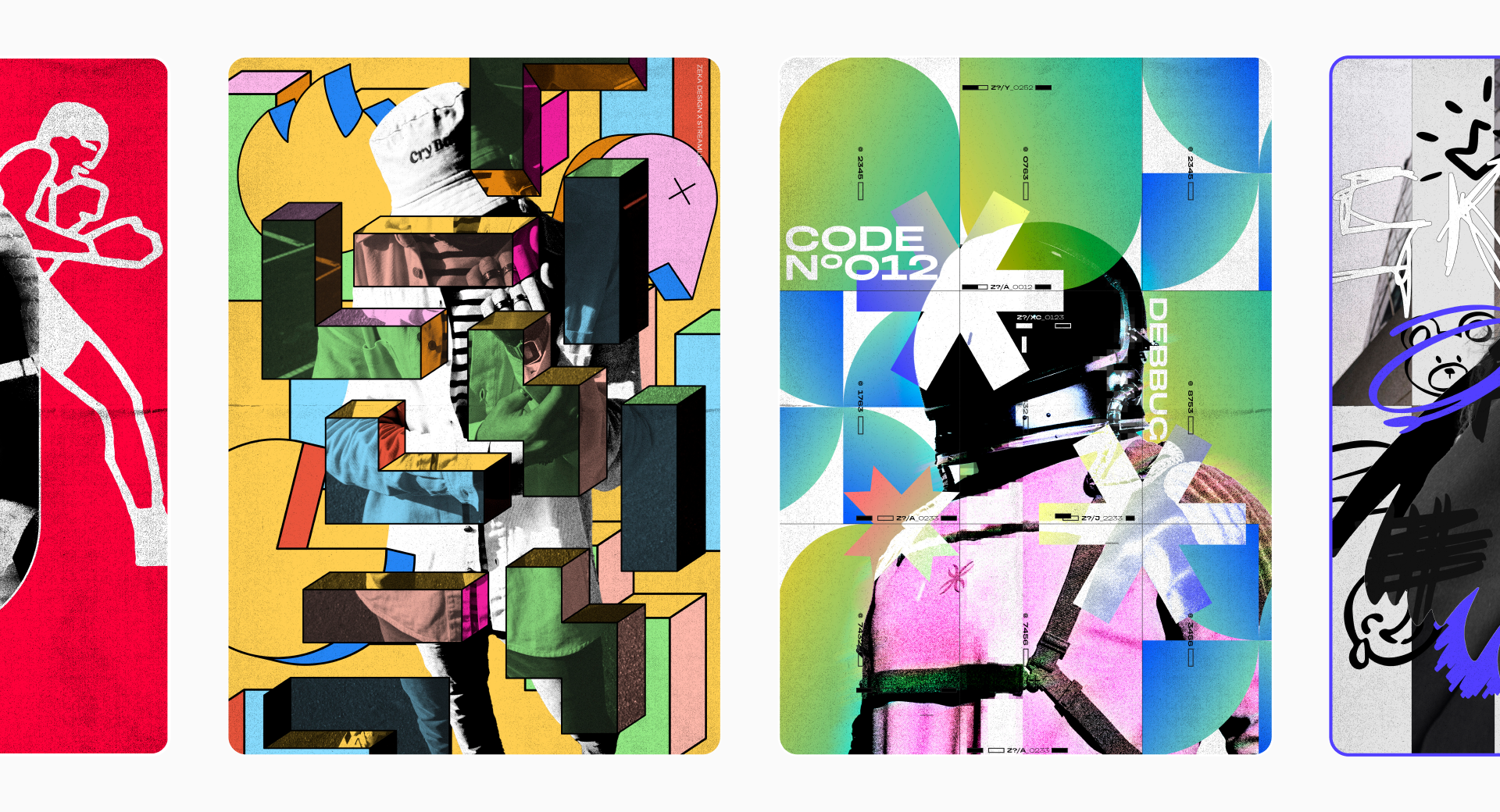
Graphic elements are the secret sauce of bold, expressive design. From abstract shapes to layered gradients, these components can set the tone of your entire composition. When used creatively, they do more than decorate. They communicate energy, emotion and identity.
We’ll explore how to use graphic elements to elevate your work through two hands-on poster design tutorials.
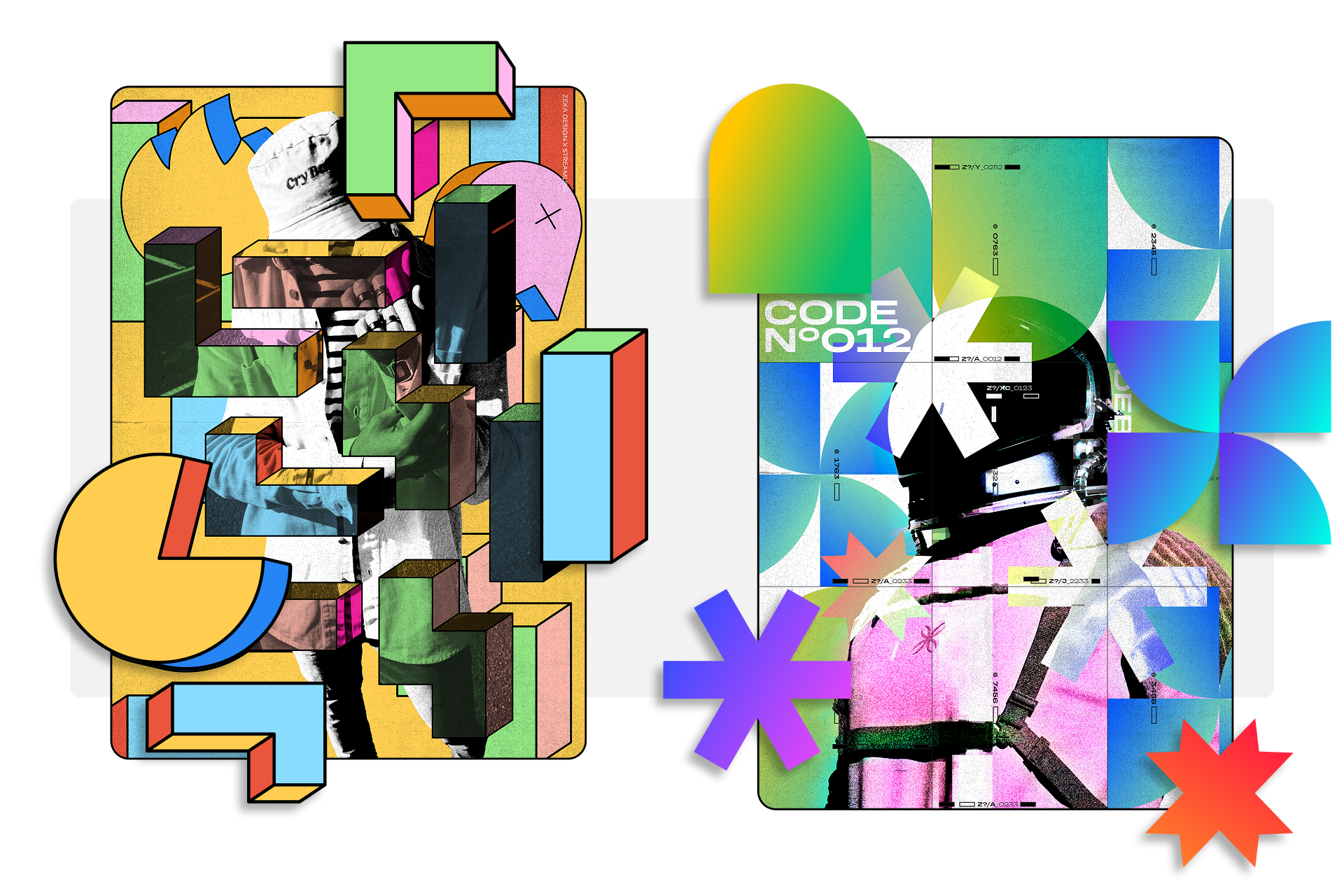
I saw those retro shapes that reminded me of the tetris game, along with other retro game inspired elements and I wanted to give them a twist and play with the different angles of the tetris elements and merge them with photography.

Choose a dynamic photo, cut out the subject, and apply a halftone filter to give it that nostalgic comic-book feel. Place it on a vibrant background color that complements the Tetris-inspired shapes.
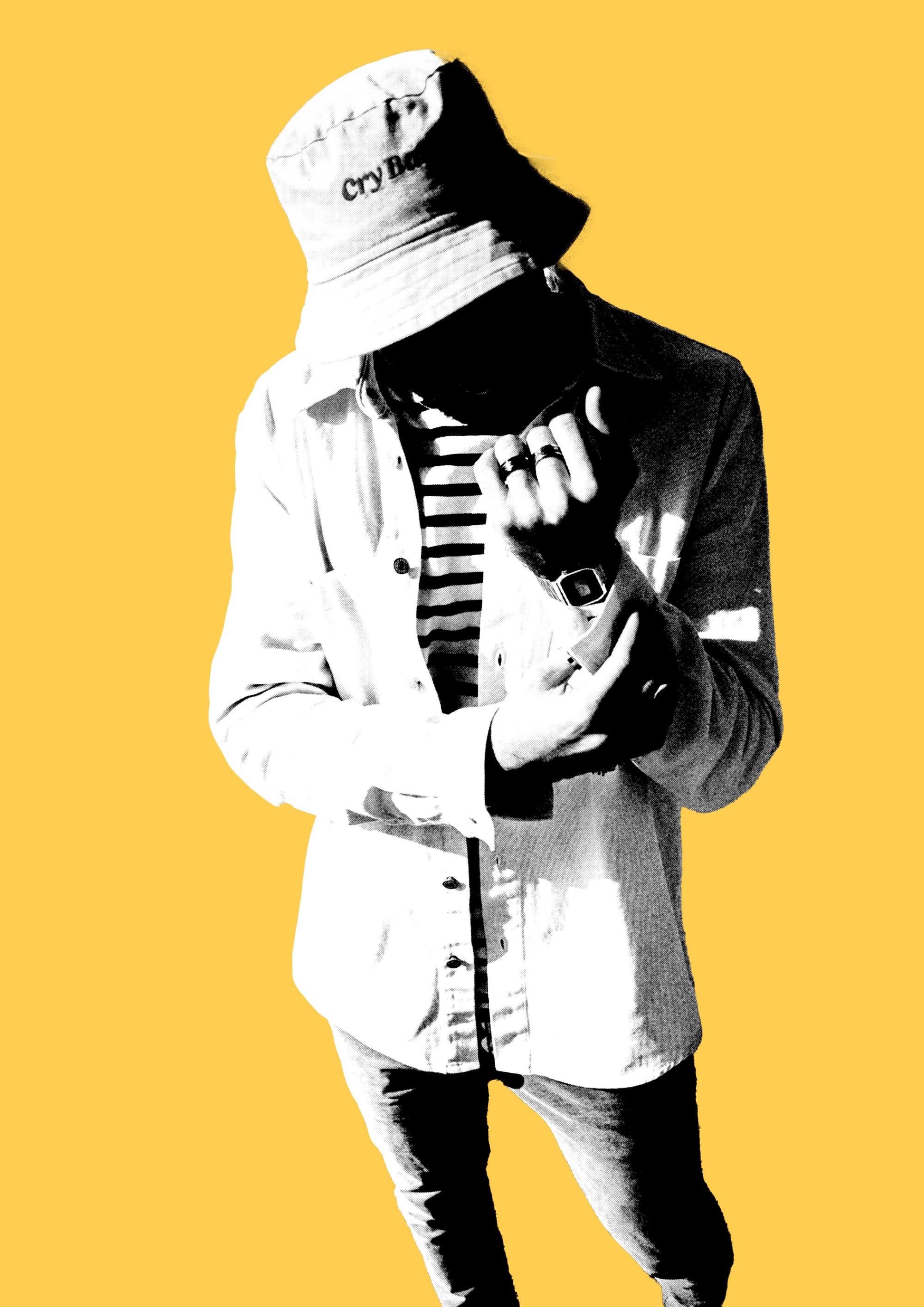
Create or import retro game-style block shapes (like Tetris pieces), and scatter them throughout your layout as if they’re falling into place. Rotate and flip them to avoid symmetry and bring life to the composition.

Now, for a creative twist: separate the sides of the blocks and insert parts of your photo into each shape using clipping masks. Apply a gradient map that matches the background for color harmony, and use perspective tools to give the shapes dimensionality.
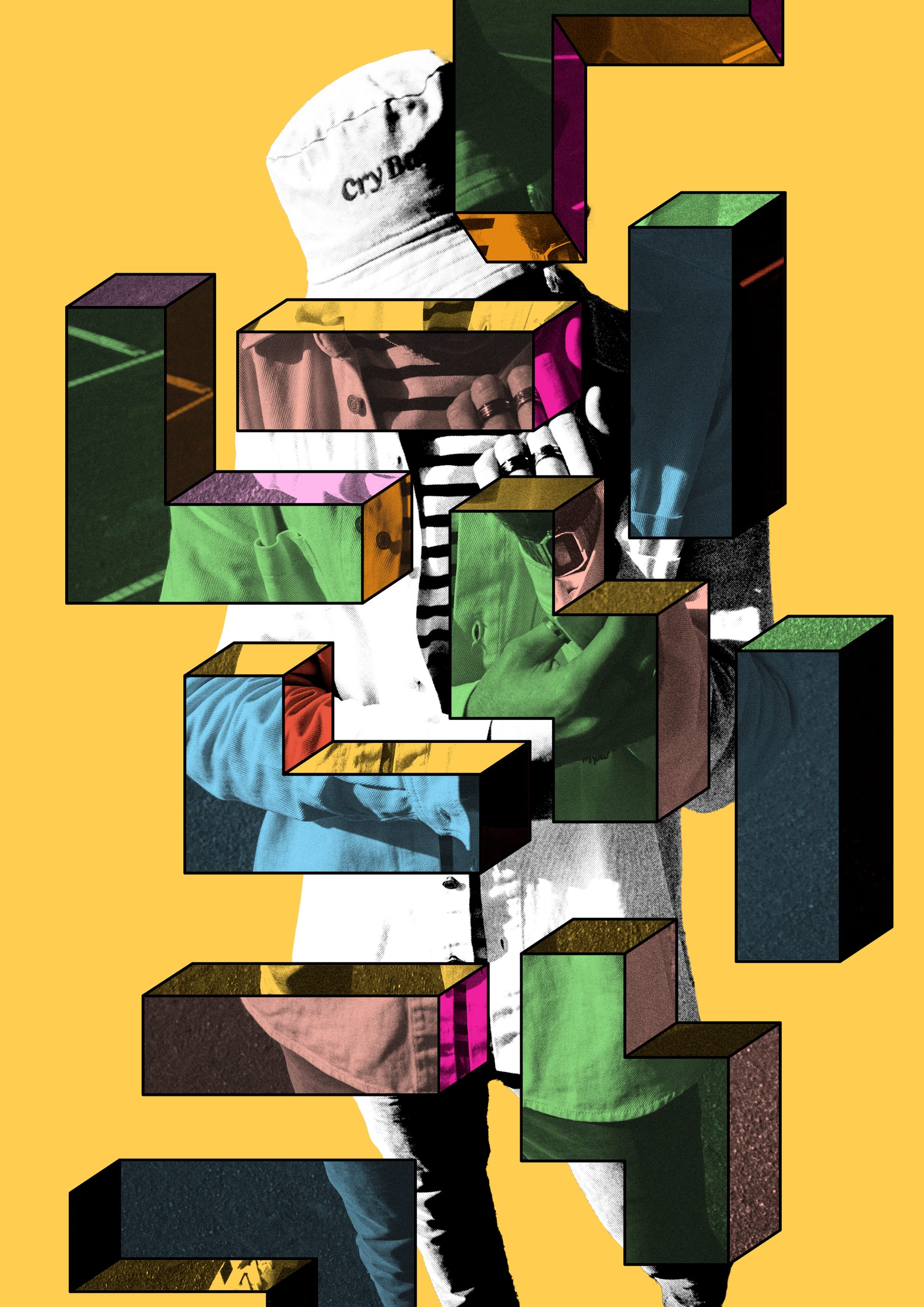

For this poster the idea was to create a retro futuristic poster inspired by Daft Punk and cyberpunk aesthetic, and the gradient shapes work perfectly to create that feeling and use them to create that modern feel.
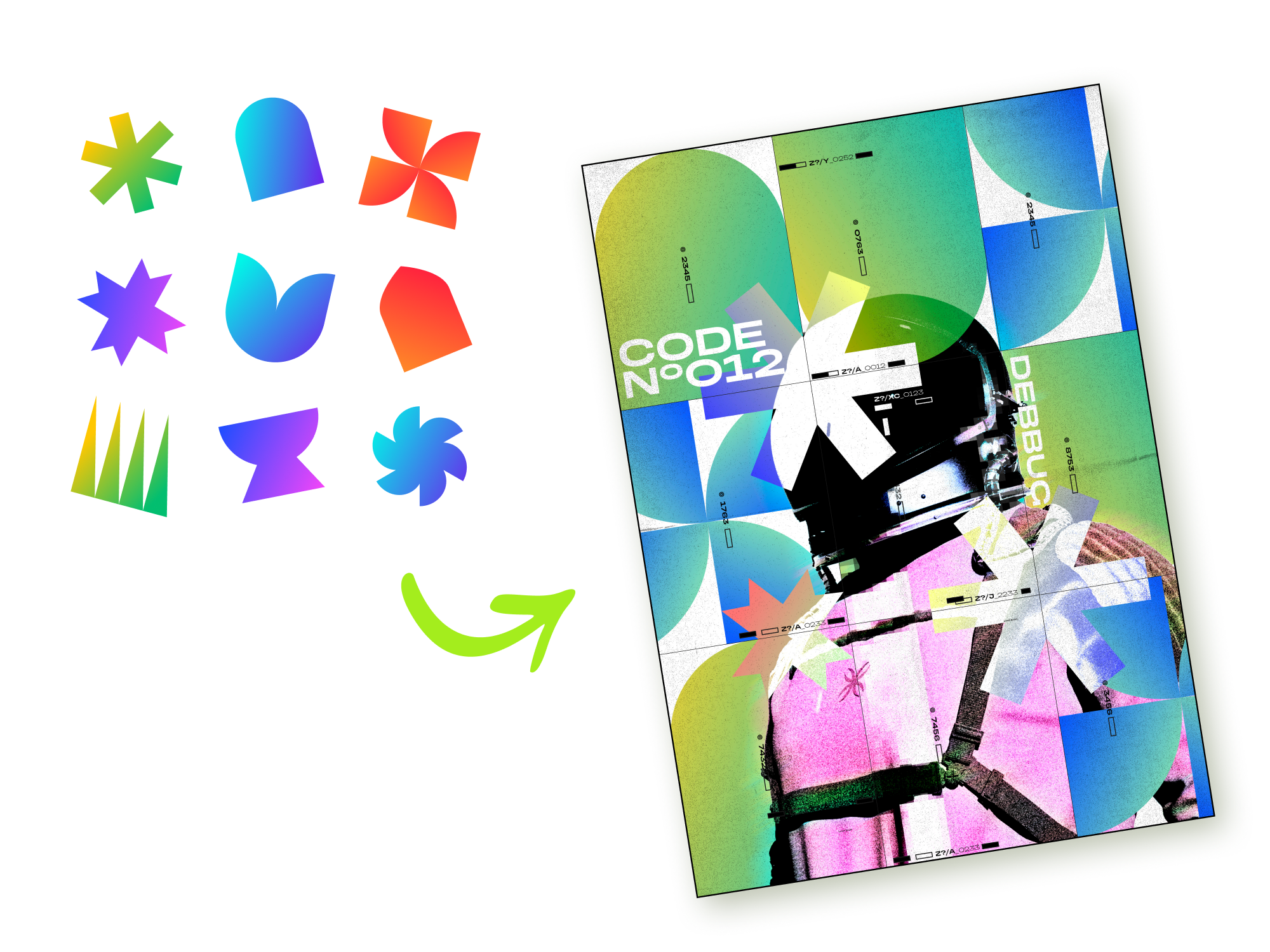
Create a grid and fill it with colorful gradient shapes. These form the background and set the tone with movement and energy.

Select a retro-futuristic subject (like a costume or helmeted figure), cut it out, and apply a grain filter to age the photo. Position it centrally for visual impact.
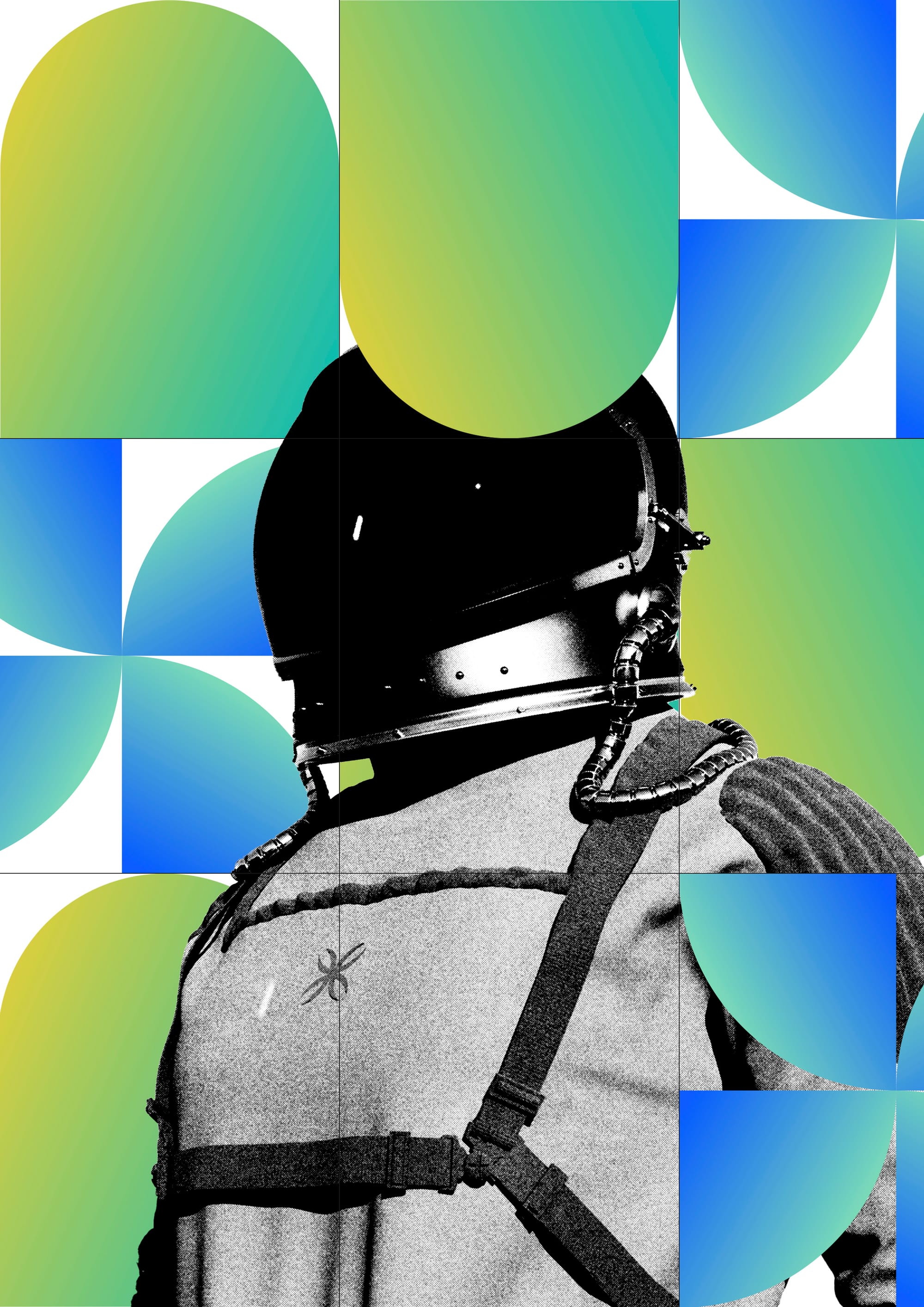
Add abstract gradient shapes in front of and behind the character to build dimensionality. Apply a gradient map to the photo to introduce a glitch-style color effect.
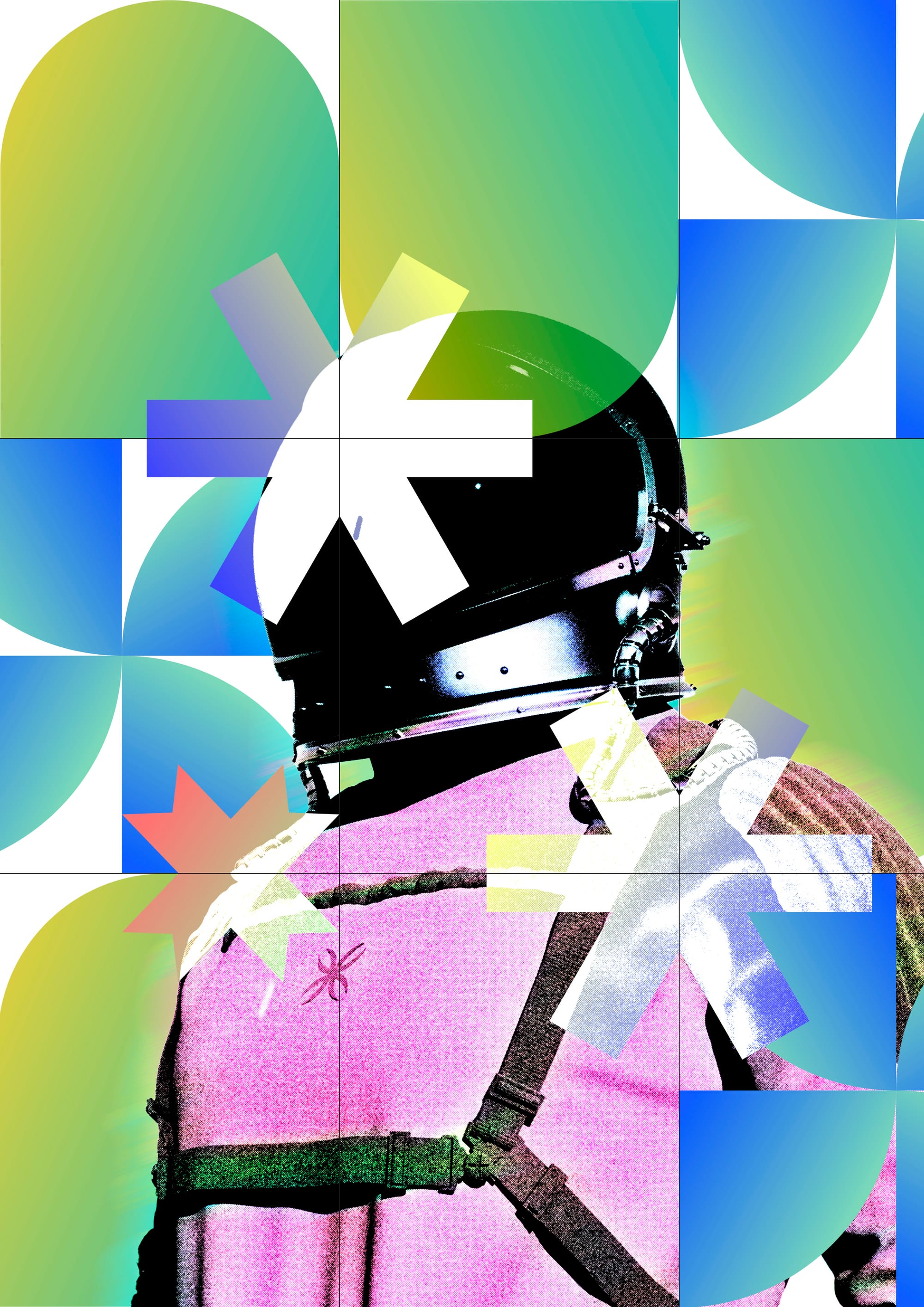
Incorporate glitch overlays, neon-style typography, and futuristic details like numbers or data streams across the grid squares to suggest a computer interface or sci-fi dashboard.
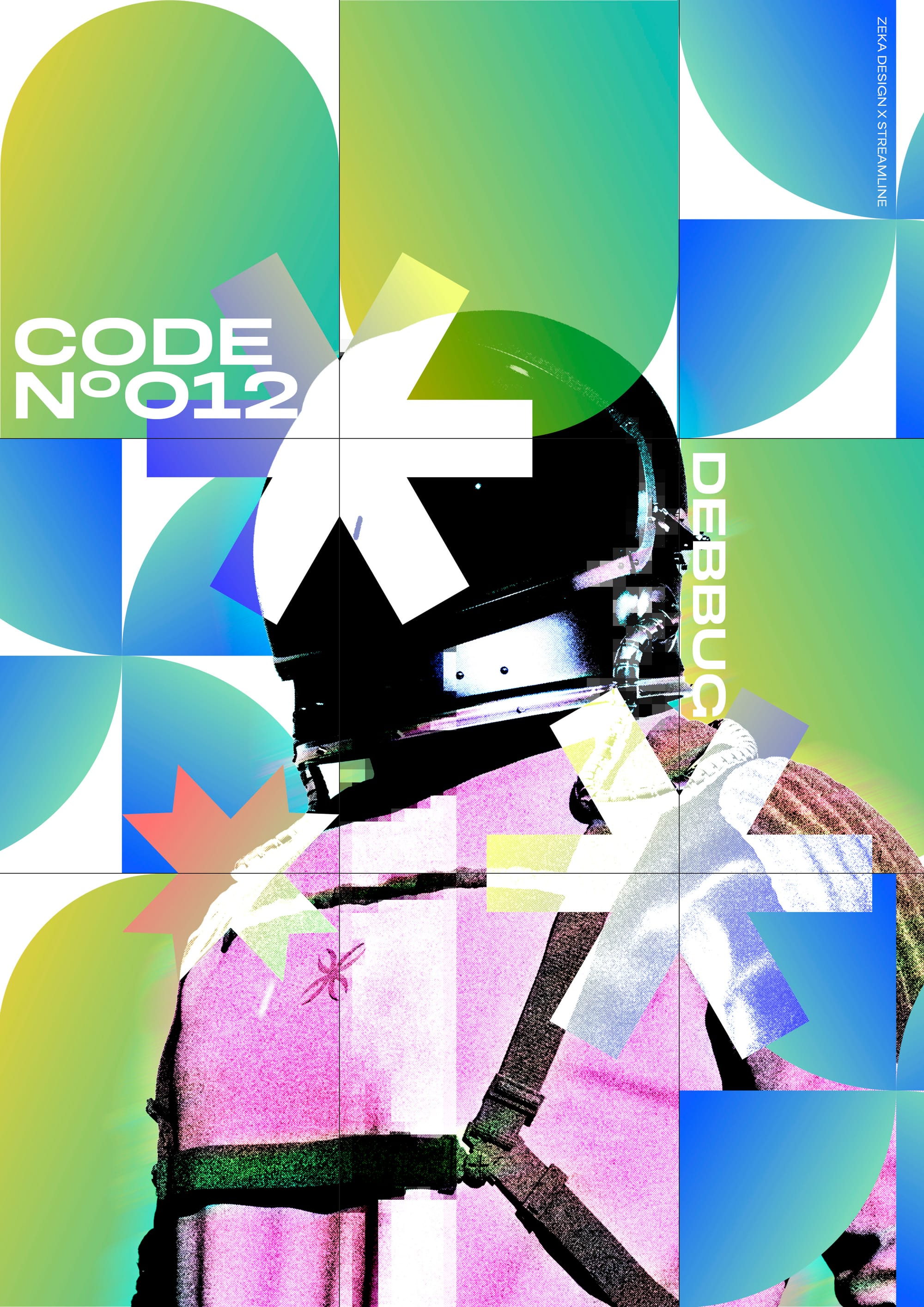
Finish with light effects, grain textures, and subtle distortions to unify the visual style and complete the cyberpunk aesthetic.
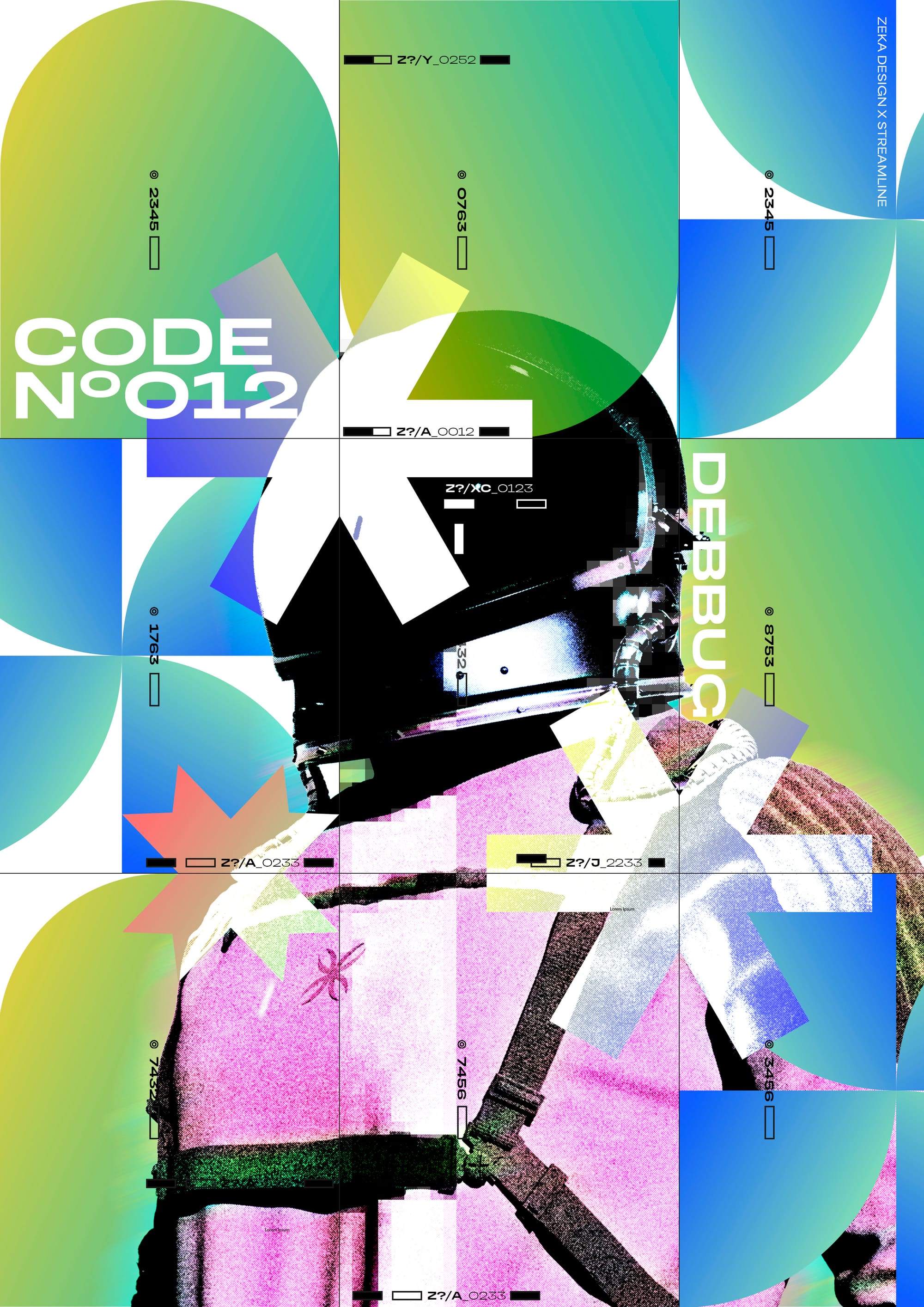
Graphic elements are more than just background filler, they’re tools for storytelling. Whether you're evoking nostalgia with retro blocks or channeling the future through gradients and glitch, shapes, textures, and layering can transform your design from static to unforgettable.
Use graphic elements to build depth, emotion, and rhythm into every poster you make.